Garmin has launched three new power meters today, all under the new ‘Garmin Rally’ brand, which supersedes the Garmin Vector power meter lineup. The Rally series includes three pedal bodies at this point: Shimano SPD-SL (road), Shimano SPD (typically off-road/MTB), and Look KEO (which they previously had).
However, if there are two takeaways to know from this review, it’s this: The Garmin Rally series power meter is but a spindle that fits into multiple pedal platform types that you can choose from – at least, as long as those choices are Look KEO/SPD/SPD-SL. Which of course, is the vast majority of the endurance sports pedal market, save Speedplay (and Wahoo just solved that last week).
The second thing to know is that if you already have Garmin Vector 3 pedals, then you’re also able to take advantage of this pedal portability, and switch between all of the three pedal types above – complete with an even newer battery cap design.
Beyond that, this review will of course cover the ins and outs of the Garmin Rally series of power meters (which, is effectively Vector 4 by another name). I’ve been using all three pedal body types over the last while, getting in boatloads of rides indoors, outside on the road, and then outside off-road. I’ve also converted a pair of Vector 3 units to Rally SPD bodies too – to test how that works. You can watch my full quick guide to converting your pedals here, and soon also a dedicated post on it.
Or, you can get the entire Garmin Rally In-Depth Review in video form with lots of sweet cycling shots b hitting the play button below:

In any event, Garmin shot over these media loaner Rally pedals/bodies to test, which will go back as usual. Though, the Vector 3 sets I used for conversion tests are my own that I’ve had for about three years now. Once I’m done with these loaner Rally pedals here shortly, I’ll box them up and send them back to Garmin. Just the way I roll. If you found this post useful, consider becoming a DCR Supporter which makes the site ad-free, while also getting access to a mostly weekly video series behind the scenes of the DCR Cave. And of course, it makes you awesome.
What’s new:
Temporarily setting aside the added pedal bodies, the Rally sets aren’t appreciably that different from Vector 3 – however, they do have a few minor tweaks to them:
– Switched to pedal threads for the pedal body: This basically increases durability, but also helps protect a bit against overtightening
– Adopted latest gen battery caps: In the never-ending Garmin Vector battery cap saga, the Rally pedals use the most recent Vector 3 caps, which are about 6-9 months old now. Existing Vector 3 owners can always call Garmin support to get these shipped out free if they don’t have them already.
– Switched to CR1/3N batteries: While Vector 3 has supported this battery type for a while, this is now the official recommendation from Garmin, as opposed to dual LR44 batteries.
– Minor changes internal to spindle: Slightly newer hardware components that get better standby/sleep time than previously, which should give you longer overall battery life.
However, the big-ticket item here is that you can swap between the three pedal types easily, using a so-called ‘Conversion kit’. In fact, there are basically 6 core products that Garmin is launching, and then the single-sided variants of them too. Here, let me explain. First, you’ve got the three pedal types:
Rally RS: Shimano SPD-SL Road variant (get it? RS = Rally Shimano)
Rally RK: Look KEO variant (RK = Rally KEO)
Rally XC: Shimano SPD MTB Variant (XC = Cross Country)
Then, you can buy *any* of the three sets as:
A) Dual-sided full power meter ($1,099-$1,199) – Rally RS200/XC200/RK200
B) Single-sided power meter ($649-$699) – Rally RS100/XC100/RK100
C) Pedal body conversion kit ($199-$249)
Make sense?
Plus, atop all that, Garmin Vector 3 is compatible with any of the conversion kits. So if you’ve got a Garmin Vector 3 pair today (which is Look KEO), but you want it to be SPD for your gravel bike or mountain bike – then you’ll just need to buy the conversion kit. As with before, they also still have upgrade kits (from single-sided to dual-sided – $549-$599), replacement bodies, and all the usual parts and such in case you need them. Here’s a simple chart that Garmin has showing the core models:
Finally, for lack of anywhere else to note it – Garmin seems to know they’ve got a Vector reputational issue to deal with. In fact, in their press materials, they lead with just how much testing they’ve put into this series, and how broad the testing has been. They have 125 riders around the world that have been using Rally, completing 6,000 rides for 110,000 hours of usage and 125,000 miles (200,000KM). They said this includes rides in rain/snow/sun, and in temperature ranges from 0-105°F (-18-40°C), and notably including someone who rode 430 miles over 47 hours. I can only assume that person couldn’t get his route to load on his GPS, and just kept on riding or something.
Of course, the proof is in the pudding. And certainly, I can show you plenty of data from this review (both good and bad data), and others can do the same. But only time will really tell. There are people, especially between year 1 and year 2, who rightfully gave up on Garmin power meters. Inversely, there’s also plenty of people who never had any issues at all. Of course, it helps that this is basically just Vector 3+. And by now, Vector 3 is pretty well stabilized, even if it did take nearly 4 years and a lot of pain and anguish for a lot of people.
Unboxing:
Each of the Rally pedal kits is essentially the same, so I’ll unbox one, and then show galleries for the others. First up, said box:
Inside, you’ll find the pedals atop some protective foam stuffs:
And then below deck, you’ve got the cleats, washers (more on them later), the manual, as well as some spare o-rings.
And here’s a closer look at the Rally KEO pedal bodies:
Notable is that if you can’t figure out whether a pedal is a Look KEO or Shimano SPD-SL (as they look very similar), the RK or RS name is written in super-tiny letters on the back:
Alternatively, here’s the two from a top-down standpoint.
Note the little peaks/tips of the silver strike plate in the SPD-SL variant as the main giveaway.
Anyway, here’s the quick-start guide. While you can activate the pedals with the Garmin Connect app (so that they get firmware updates), there’s no absolute need to, unlike some power meters. Of course, you’ll want to update the firmware from time to time, so that you can get any bug fixes.
In the box, there are the washers, which can be placed in between the crank arm and pedal, in the event you have clearance issues (either chain/derailleur clearance, or crankarm inset clearance).
And then the two o-rings are for the battery cap, just in case you need them. The batteries come pre-installed in the pedals. Also, there’s mounting hardware for your shoes, and then a set of cleats:
Again, the Shimano SPD-SL variant is precisely the same in terms of box components.
Meanwhile, here’s what comes in a pedal body conversion kit – in this case, for the Rally XC (SPD). Essentially it’s the pedal bodies, new battery caps (in case you’re coming from Vector 3), and washers/o-rings:
However, you’ll notice that the pedal bodies are lacking the pedal spindles. Again, you can’t just buy a $200-$250 conversion kit and have a power meter. You need the spindles from a Vector 3 or other Rally set.
In any event, I dive through the full conversion process in my post/video here.
Size & Weight Comparisons:
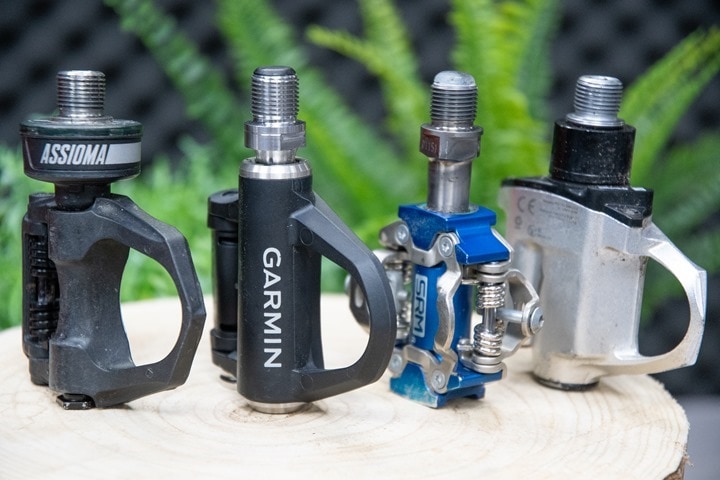
(Left to right above: Favero Assioma LOOK-KEO, Garmin Rally LOOK KEO, SRM X-POWER, PowerTap P2 LOOK KEO)
Next, let’s do a quick size and weight comparison. Here’s the two road Garmin Rally pedal bodies, plus Vector 3:
Then for comparison, here’s the Favero Assioma (LOOK KEO-ish), PowerTap P2 (Look KEO-ish)
Then we’ve got the SPD variant of Rally, plus SRM X-Power’s SPD option. Note that slight dust from actual use on both is included free of charge:
Oh, and some random weight tidbits:
Garmin Look KEO cleats/mounting weight: 37g per side
Garmin Shimano SPD-SL cleats/mounting weight: 40g per side
Garmin Shimano SPD cleats/mounting weight: 35g per side
Planned Wahoo Speedplay POWRLINK ZERO reference: 216g = 138g per pedal + ~78g mounting (cleats/baseplate/screws)
This seems as good a time as any to talk about stack heights and q-factors. Thus, here’s your q-factors:
Garmin Rally (all units): 53mm (55mm with spacer)
Garmin Vector 3: 53mm (55mm with spacer)
PowerTap P2: 54mm
Favero Assioma: 55mm
SRM X-POWER: 54mm
And then here are your stack heights:
Garmin Rally RS (Shimano SPD-SL): 12.2mm
Garmin Rally XC (Shimano SPD): 13.5mm
Garmin Rally RK (LOOK KEO): 12.2mm
Garmin Vector 3: 12.2mm
PowerTap P2: 14mm
Favero Assioma: 10.5mm
SRM X-POWER: 10.5mm
And then some actual pedal heights for the MTB side with some comparison heights:
Garmin Rally XC: 40mm (power pedal)
SRM X-Power: 33.7mm (power pedal)
Shimano PD-M505: 37.5mm
Shimano XT PD-M8100: 32mm
Shimano XT Trail PD-M8020: 32mm
And for lack of anywhere else to put it, max rider weight:
Garmin Rally Series: 105 kg (231 lbs)
Garmin Vector 3: 105 kg (231 lbs)
PowerTap P2: No practical limit according to PowerTap
Favero Assioma: 120 kg (265 lbs)
SRM X-POWER: No practical limit according to SRM
Then we’ve got side profile shots:
And a few more:
Ok, I’ll circle back here in a bit with a more detailed comparison post – like the power meter pedal shootout post I did a few years ago.
General Use Overview:
Getting the Rally power meter installed is the same for all three versions, and requires just a pedal wrench. If you’re coming to these from the days of Vector 1/2 where you needed a torque wrench, that’s not really necessary here. But yes, you’ll need a pedal wrench, because, like almost all other pedal-based power meters, the spindle houses the electronics (so you can’t stick an Allen wrench in there). But I suspect most people considering a pedal-based power meter will have a pedal wrench. If not, they cost $15-$25.
For the washers, you don’t need them by default. However, if the spindles are too close to the chain, less than 2mm, then Garmin recommends using a washer on each (to balance out the q-factor). My chain clearance is plenty, so I didn’t need it on any of my bikes. Also, yes, I cleaned my bike after this shot. Just not before. I ain’t got time for that.
You can simply thumb tighten the pedals on initially, and then once snug just grab the pedal wrench to go all the way. Technically speaking, you’ll install the pedals to 34Nm (25 ft-lbs) of torque, which is likely a bit tighter than you’re used to installing pedals. So don’t go crazy, but if you lack a torque wrench, just give it a bit of extra snugness. Pedals will tighten over time by design, so at worst it just means it might not be as accurate until you get some nice hard sprints to tighten things up.
Once installed, you can use the Garmin Connect app if you’d like to, to pair it up and check for firmware updates. It’ll also set the crank length – in case you’re using a head unit that doesn’t support that. The crank length is *incredibly important* on a pedal-based power meter, and especially if you’re not running 172.5mm cranks. It uses this length to calculate power. All Garmin bike computers/watches support doing the crank length on the GPS unit, but not all apps/devices do. So by using the Garmin Connect app, you basically hard-set it in the Rally pedal so other devices don’t have to worry about it.
Note that on a dual-sided Vector system, the left side is considered the master/primary pedal, and all communications funnel from the right side to the left side. Further, the ANT+ ID and BLE name shown on a bike computer/watch/app will match the ID shown on the left spindle, just next to the side of the crank arm.
For calibration, you can do it from the app or your bike computer. It’s a good idea to do it now, and then Garmin recommends doing a calibration before every ride, though after the temperature stabilizes (about 10-15 mins in most cases). This is one area I dive into in more depth later in the accuracy section. I saw a couple of quirks here that I haven’t seen on most other power meters in a while.
Here’s doing the calibration on the app:
On your bike computer or watch, you’ll go to the normal sensors menu to pair up Rally. As long as it supports ANT+ or Bluetooth Smart power meters, you should be good. If on a Garmin device, it’ll see that it’s Vector and ask if you want to set it up:
As part of that, it’ll ask for your crank length. Most other bike computers will do the same. This will overwrite what you put in via the app, but hopefully those two match.
Once done, you’ll do a calibration using a Garmin Edge device. Most other GPS bike computers work the same way. As always, ensure no load is on the pedals and that you’re unclipped.
With all that done, you’re done and ready to ride. However, for most power meters it’s good to do a few hard sprints to settle things – ideally 2-4 sprints and then ideally a few minutes of riding in there. Then do another calibration. With the Rally pedals it’ll automatically determine what’s called the ‘install angle’, which basically means it figures out the exact position how the pedal is screwed into the crank arm. Ultimately, there’s nothing you need to do here manually – it just happens in the background, and then may send a brief notification to your bike computer that an ‘Install angle’ has been computed/determined.
If you were to move the pedals to another bike, you should ‘reset’ the install angle on your Garmin or app, so it knows to recalculate it. You can see the ‘Reset Install Angles’ option here, and I just hit it after moving these pedals to this bike.
The side of the pedal is where the battery compartment/pod/door is. This is the latest gen battery door, and matches what is I think the 4th generation doors for Garmin Vector 3, from 6-8 months ago. For those not following that saga, the one-paragraph version is that Garmin had significant troubles when switching to the LR44 coin cell batteries, for which you’d use two of them. These batteries differed globally far more than Garmin expected, and also expanded/contracted, causing battery contact issues inside the battery pod, which in turn caused dropouts/suckage. That in turn led some Vector 3 owners wanting to throw their units into an industrial blender. There were other pedal thread material issues too. Garmin has gone through numerous battery pod designs, and the most recent one aims to handle all these better. At this point, issues with new Vector 3 pedals are basically non-existent.
The new pods/doors on Rally match the last set of Vector 3 pods, and as noted earlier in the post – if you’re on Vector 3, you can get these new pod doors too. Anyway, as part of that, they’ve switched to using CR1/3N batteries across the board, which is basically a double-stacked LR44 battery. You can see it below (left is Vector 3, right is Rally):
This reduces contact-type issues with two batteries. While I’d probably have suggested they go rechargeable, they say they’re confident in this battery cap design. The benefit for consumers is I suppose a much longer battery life, in this case a claimed 120-150 hours per charge. Further, the only difference Garmin noted in the newer Rally spindles is updated components which should get most people much closer to that 120-150 hour range, which was apparently heavily driven by how much your pedals slept (non-usage), more than straight usage. In this case, the newer components in the new spindles sleep better, thus saving more battery life. They must not have any small children at home.
Also, I noticed the baseplate of the battery contact area is slightly different too. It’s gone from an H-shaped contact pattern to a four-pronged uppy-thing. Again, left is Vector 3, right is Rally [Update: Some people have noted that if you bought the most recent Vector 3 battery pod replacement kit, it now includes the newer battery base used in Rally. My guess is like the battery caps, Garmin also changed this out later in Vector 3 too. My pedals are older though, and Garmin never sent out new battery bases to people unprompted, just new battery caps.]
Also, as noted, the pedal bodies now have metal threads vs the plastic threads, which should significantly reduce people threading their pedals from overtightening, an issue with earlier Vector 3 (they had iterated the thread materials once or twice already in Vector 3 in the first year).
Ultimately, as with Vector 3 – we won’t know for a while on Rally. Remember that with Vector 3 it took nearly 6 months for issues to start cropping up, because that’s about when most people started swapping out the Garmin-provided batteries for random ones from your corner store. Now of course, since these are the same pods that Garmin has been using for 6-8 months already (after 3 additional years of learnings on Vector 3) – it hopefully reduces the change of issues here. All I can say is that I’ve had zero dropouts/wonk on any of my rides here on Rally – and then we can check back in later this fall or so and see if that holds true.
In any case, by now you’ve probably stopped reading and have already paired up your pedals – but just in case, if not, the pedals pair on both ANT & Bluetooth Smart. In the case of ANT+, you’ll have unlimited connections.
In general though, you’ll virtually always want to pair on ANT+ over Bluetooth Smart, because the spec for power meters is more advanced/standardized there, and you’ll get more information – notably Cycling Dynamics. From an ANT+ standpoint, the unit broadcasts power balance, ANT+ power pedal balance, ANT+ pedal smoothness, and ANT+ torque effectiveness – those are all baseline specs you’ll get on pretty much every ANT+ bike computer. However, if you’ve got a bike computer that supports ANT+ Cycling Dynamics, you’ll get added information like platform center offset/seated & standing time, and power phase. Here, let me show you.
First up, is all the charts you get on a normal ride – you’ll see the cadence/power/balance, and then the seated/standing position bits of Cycling Dynamics are mixed in there:
As you scroll down, you transition entirely into the Cycling Dynamics related bits (Platform Center Offset, Pedal Phase):
Then, down below in Garmin Connect you’ll see much of that same info summarized:
But there’s also a secondary tab there, to see all the Cycling Dynamics information:
And then this same info is seen on your head-unit mid-ride as well, using the Cycling Dynamics page on a Garmin device:
Now – whether or not you find any value in any of this, that’s pretty darn debatable. I think there’s some benefit in bike fitting, and certainly some benefit in injury recovery. However, after years of having Cycling Dynamics in my ride, I virtually never look at it, nor really know what to do with it. Garmin has a few minor things they note, especially around PCO – but ultimately, there’s yet – 7 years later – any studies I’m aware of that actually demonstrate how, from a science standpoint, any of this is going to make us faster in training or racing (or more efficient). Lots of ‘might & maybe’, or ‘coulda/woulda/shoulda’, but very little concrete evidence.
Looking at other pairing things, if you use Bluetooth, you’re going to get total power, cadence, and power balance – assuming the head unit supports power balance (most do). You’ll likely use Bluetooth to pair to something like Zwift or TrainerRoad. Here it is enumerated and paired in Zwift for both power and cadence as a single source (versus dual-sources for most other pedals unless put into a specific mode):
And here it is enumerated and paired in TrainerRoad as a single source, for both power and cadence
Both correctly pull in the power from both sides of the pedals, so you don’t have to worry about toggling any settings in the app like some pedals. I’ve also paired it up to a Polar Vantage M2 GPS watch, and it paired up to it just fine, though, I did get data dropouts from it exactly every two minutes – which to me implies a Bluetooth power spec negotiation issue. Given Polar has a long history of not playing well with power meter pedals specifically (see: Any PowerTap P1 or P2 pedals, the SRM pedals, etc…) – I’m going to guess this is more of the same.
Next, rounding home here, I haven’t had any durability issues at this point across any of the pedal bodies, including the SPD ones while mountain biking. While I don’t have the super-rocky terrain of high mountain territory, I do have enough things to whack the pedals on during my recent rides. I’ve clipped more than enough tree roots on them, and a few rock clips too. I also managed to crash with them and had the bike (+ me) land directly on the right side pedal. No issues.
Further, in Garmin’s media presentation, they noted they use a cinder-block test where they have a machine that fires the pedal at the cinder-block representing a pedal strike on a rock:
I don’t have such a cool machine – so I’ll have to defer for now to that and check back in a year from now or so to see if my pedals are still alive on my MTB (after I go out and buy my own).
Converting Pedal Bodies:

Now, I’ve got an entire post – and video – showing how to do this. So I’m not gonna repeat that here, in an effort to save digital pixels or something. But you can hit the play button above, or here to see the full post on it (post coming shortly!).
However, the main takeaway you want to know is that you can convert any Rally pedal to any other pedal type, simply by buying the conversion kit (which is $200-$250). While that might seem a bit pricey for just a pedal body, if you consider the cost of a typical premium pedal, it’s not that bad. Plus, it’s a heck of a lot better than buying multiple power meter sets.
The process takes me on average, about 3-5 minutes. However, Garmin doesn’t really see it as a ‘do this every week’ kinda thing. Rather, they see it as a seasonal thing – and in doing it, I agree. While it’s easy to do, it’s an operation that if you tried to do it every week, I think you’d eventually wear down some of the pieces from ‘over-use’, such as the internal nut/bolt that connects the battery compartment to the pedal body, or the tiny jewelry screws that connect the battery compartment to the internal nut.
Anyway, you can see all that in the post/video in plenty of detail. And again, this also applies to Garmin Vector 3 – which you can convert to any of the Rally pedal body types.
Power Meter Accuracy:
I’ve long said that if your power meter isn’t accurate, then there’s no point in spending money on one. Strava can give you estimated power that’s ‘close enough’ for free, so if you’re gonna spend money on something it shouldn’t be a random number generator. Yet there are certain scenarios/products where a power meter may be less accurate than others, or perhaps it’s got known edge cases that don’t work. Neither product type is bad – but you just need to know what those use/edge cases are and whether it fits your budget or requirements.
As always, I set out to find that out. In power meters today, one of the biggest challenges is outdoor conditions. Generally speaking, indoor conditions are pretty easy to handle, but I still start there nonetheless. It allows me to dig into areas like low and high cadence, as well as just how clean numbers are at steady-state power outputs. Whereas outdoors allows me to look into water ingest concerns, temperature and humidity variations, and the all-important road surface aspects (e.g. vibrations). For reference, the Garmin Rally series has a claimed accuracy rate of +/- 1.0%.
In my testing, I generally use between 2-4 other power meters on the bike at once. I find this is the best way to validate power meters in real-world conditions. In the case of most of these tests with the Rally series pedals I was using these other power meters or trainers concurrently in three basic configurations:
Road Bike #1 (Canyon Ultimate CF SL) – Mostly road + indoors testing
– Rally RS200/RK200/XC200 (used all variants here)
– Quarq DZero power meter
– PowerTap G3 hub power meter
– with Wahoo KICKR V5/2020 smart trainer (when indoors)
Road Bike #2 (Giant DEFY) – Baseline indoors testing
– Rally RS200/XC200 power meter (SPD-SL & SPD dual-sided)
– Stages LR dual-sided power meter
– with Tacx NEO 2 smart trainer (when indoors)
Mountain Bike (Canyon EXCEED CF SL) – Mostly mountain bike testing
– Rally XC200 (SPD dual-sided)
– Quarq DZero DUB power meter
– 4iiii Precision Pro dual-sided power meter (on XX1 crankset)
– with Wahoo KICKR CORE smart trainer (when indoors)
So…yeah, I’ve got a lot of data across all the pedal types as well as in my conversion post I do a comparison on Garmin Vector 3 converted to Rally XC too. I’m going to try and distill all these data sets down though since I don’t really think you want to look at that much data. But fear not, if you do, I’ve provided links to it.
I’m going to basically chunk this section into:
A) Indoor data
B) Road data
C) MTB/off-road data
I’ll mix the pedal types between them. I have two sets of pedal spindles, and three pedal body types (all of them). So I’ve been moving spindles/bodies around as I see fit to make it all work.
First off, indoors. Starting off with something straightforward, a Zwift ride on the RK200’s (Look Keo variant), compared to a Quarq DZero & Wahoo KICKR V5/2020. This was the Titans Grove loop, with rolling terrain climbing up over the ridgeline and back down again, with a few sprints tossed in. Here’s that data set:
As you can see, the three units are all very very close, with the KICKR V5/2020 being slower/lower than the rest of them, as expected. If we look at one of the sprints, smoothed at 5-seconds, you’ll see very close alignment. There’s a momentary connectivity dropout from the Quarq to the head unit recording it, but setting that aside, these all look virtually identical.
Cadence is very similar as well – minus a few connectivity-looking dropouts that we see on the Quarq. Not sure what was up that day.
Next, let’s switch over to TrainerRoad and a pair of Rally RS200’s (Shimano SPD-SL road variant). In this case, this was some 3-minute intervals on a Tacx NEO 2 and Stages LR crankset. Here’s that data set:
As you can see, the NEO 2 was surprisingly a bit higher than I’d have expected, by about 5-7w (on ~320w). One could also argue the Stages LR (dual-sided) and Rally RS200’s were lower than expected. Generally speaking, the NEO 2 is a pretty stable beast since it has no calibration option and is well known for being pretty much spot-on. Granted, this is out in the shed with wonky temperature shifts, on this first day of spring.
In any event, cadence is virtually identical on this. The NEO2 of course has estimated cadence here, and you can see when that falters a bit:
Looking at the ride power curves, the Stages LR & Rally RS200’s maintain near identical values, even if the NEO2 seems offset:
Of course, whether or not the NEO was annoyed at me that afternoon seems to depend on what I was asking it to do. Just prior to the above set, I had the XC200’s on the same bike/trainer, doing some 30×30’s. That was before I then moved the spindles to the SPD-SL pedal bodies. So again, NEO2 vs Stages LR vs XC200’s (SPD pedal bodies), here’s that data set:
And frankly, that’s looking pretty darn happy if you ask me, as is the cadence below it. And generally speaking, 30×30’s can be fraught with ways things can go wrong, though this seems super clean.
But now we’ll take a left turn, into what is arguably the singular set that gives one pause. This was a TrainerRoad workout on a pair of RK200’s (KEO dual-sided). What’s notable about this is that in virtually all my power meter and trainer testing, I like to do a test where I specifically don’t calibrate at the beginning of a ride, to see how it handles. In 2021 (or frankly, for the past 2-4 years), virtually every power meter on the market has some form of active or passive temperature compensation, to correct for shifts in temperature (such as the day warming, climbing up a mountain as it cools, or going from outside to inside or vice versa).
And that’s exactly what I did here. The *day prior* I did an outside ride on my bike in the afternoon. Then, the bike sat downstairs in what is effectively a heated garage at the studio, but slightly cooler than the upstairs where my trainers are. So the next day I took the bike upstairs, put it on the trainer, spun the pedals a few times to wake up all the power meters to ensure head units were ready, and then left it alone for 15-30 minutes before starting my ride without re-calibrating. And unfortunately, this was the result – with Rally in purple offset above everything.
It didn’t compensate for the temp shift, clearly. And in theory, it should have. In talking to Garmin, Rally will both actively compensate for temperature shift mid-ride, but also will do its automatic zero as it goes to sleep (so the night before, but also slightly before my ride too). When it does its zero, it has logic to check if it perhaps has shoes on it, or is leaned against something – things that would apply for weight impacting the zeroing.
Either way, it didn’t compensate. Thinking it might fix itself by the next day, I left it alone again. And nope, still off on a quick test ride. You can see this easy trainer test below. The first half of the ride I just got on and started riding. Then I paused and calibrated (I also waited a couple of mins, as apparently Rally writes extra diag data to the file when paused, and Garmin wanted to see some of that data). But after the calibration (zero), you can see all is well again.
So, in my mind – that’s not ideal. You can see the Quarq DZero handled this just fine. And frankly, so does every other power meter I’ve tested in the past few years. And in this case, Rally had numerous instances to sort itself out. Thus, I’m less confident in how well it can actually temp compensate over time.
I asked Garmin about this, and this is what they had to say on how to handle calibrations when you take a bike inside/outside (Note: I’ve re-ordered these four paragraphs to make more sense, as they were part of two different e-mail responses but the content is otherwise untouched):
“For the best results you will still want the bike to have fully adjusted to the temperature it is in and then do the zero offset calibration. We expect that to take about 10mins per 10°C. If you were to calibrate immediately, you would be setting the zero offset based on a temperature that’s likely much closer to what it was inside.
There is a difference between our zero offset calibration and temperature compensation. The zero offset is influenced by temperature at the time it is done which is the meaningful difference we expect between your rides after looking through the data. Our temperature compensation is then used to ensure we maintain that offset throughout a ride if the temperature changes to protect against drift.
Additionally, our Auto Cal feature does have some limits on how much it is allowed to change the zero offset which we believe you would have been outside of from your outdoor to indoor ride. The reason for that is we do not want to accidentally get a bad zero offset in the middle of a ride if the customer stops and happens to say, have one of their pedals leaned up against something.
Like I said, this is an area I’d like to improve going forward and we have some ideas around how to do so. I don’t want our customer to need to know all of this and even more importantly, we want to do everything we can to prevent a ride with inaccurate power data that can then influence the rider’s training guidance and our quantification of their fitness.”
The TLDR version is to ensure you use the zero offset option, ideally about 10-15 minutes after a temperature shift – kinda like the ‘olden days’. And in doing that for all my other rides, the data is spot-on perfect.
Ok, so, let’s head out on the road for some data there. First up is a roughly two-hour road ride on a pair of RK200’s, albeit with a short mid-ride break for some filming (also a great unintended way to test that the auto zero/temp comp stuff isn’t doing weird things mid-ride). This is compared to a PowerTap G3 hub wheelset, and a Quarq DZero power meter. Here’s the data set:
As you can see, at a high level, it looks pretty darn close (spoiler, it is). Here’s a few sections close up. First, this nice steady-state chunk:
While it is very close, there are a few minor imperfections there – and in some cases the Rally seems a few watts higher than the others – but they all float very close to each other. And the same is said for the second half too:
Cadence is virtually identical across them too, save the PowerTap’s estimated hub cadences when you reduce torque/power for a split-second. In general, we actually see Rally pick up these faster than Quarq and PowerTap, which is notable (see how the yellow dips further than the other two, when they dip – note these are smoothed, hence why the dips don’t hit the floor).
Next, we’ve got another outside ride on the RK200’s. Same grouping of Quarq DZero & PowerTap G3. Here’s that data set:
Boring alert: Virtually identical again, even across 8 sets of sprints. Here are the first four sprints:
As always, getting power meters to agree to an exact value on a short 800w+ sprint is challenging, due to the precise sub-second time alignment issues with different power meters and head units and how they all transmit/receive. But nonetheless, it’s really damn close.
Same goes for the 2nd set of sprints. There does seem to be a handful of dropouts on the PowerTap G3 recording here, I know I changed the battery around this ride, but can’t remember if it was before or after.
As expected, the power curves here look awesome:
Next, a road ride back over on the Shimano SPD-SL pedal variant, on my primary road bike compared to the Quarq DZero & PowerTap G3 hub as usual. Here’s that data set:
It looks really darn good. Super crispy. Very happy with this. Especially since I had just moved this set to a different bike right before this ride. I merely did 3 short sprints, then calibrated (zero offset) again, and called it done.
The power curve below is pretty much spot on as well:
So with all the roadie adventures covered for now, let’s head off-road with my mountain bike. In this case that’s configured with a dual-sided 4iiii Precision Pro power meter on an XX1 crankset, with a Quarq DZero DUB spider-based power meter on there as well. But I’ve had some connectivity issues between the two sides of the 4iiii unit lately, so while I’m troubleshooting that, I’m just running the 4iiii unit as a single-sided (left-only) power meter. No biggie, but just wanted to be clear on that.
Note, analyzing power meter data from mountain biking is frankly…a hot mess. Mostly because the types of trails I have here in the Netherlands means very few climbs – thus, the data s constant surge and coast (or brake). Whereas something like high-mountain terrain you’re going to get longer ascents and more ‘clean’ data to look at. Ain’t nothing clean here.
Welcome to the party, here’s your first data set:
Oh, and I’m being kind to you – that’s smoothed at 20-seconds to make it barely readable. So let’s just zoom in on a few chunks, since that’s the only viable way to tackle this. Here’s a random chunk that’s somewhat steady-state:
As you can see, the Rally XC200 and 4iiii left-sided unit seem to roughly agree the most. Whereas the Quarq seems a bit higher than the others. For all these sets, I did calibration in two groups. First, after arriving at the MTB location, I took the bikes out and let them chill outside for 10-15 mins, then I did a zero offset. Then, 10-15 minutes into the ride, I did another zero offset.
Now, if you remember back to a week or so ago, I had the SRM SPD pedal power meter, and you’ll remember the Quarq also *appeared* to read higher there too than the others. However, what’s when I had smoothed turned way up (20-second smoothing). Take a look at it when I yank all smoothing off:
They start to look pretty darn similar, huh?
Here, let’s zoom in more – to just a 45-second section from above. What you see starts to explain it – just like with the SRM SPD pedals. At the second to second level, they’re all actually very similar. However, the moment I make a surge – the Quarq responds faster – and usually higher. What I suspect is happening is the exact same as with SRM: Everyone else is being slightly more cautious in their rough-terrain algorithms than Quarq.
So when the ground noise increases, it appears that SRM/Garmin/4iiii are basically being more hesitant on the surges, and recording a lower power value, whereas Quarq is letting it fly- and doing so faster. As a result, once you apply a longer average to it, those higher surges pull the whole line up above others.
Now – does that mean Quarq is more accurate? I’ve got no idea.
And frankly, I have no way to test that. That’d require incredibly complicated test rigs that can somehow determine force while being vibrated senseless like outside on rough terrain. Yet, it explains why on the same bike on smooth terrain, things all clean back up again nicely.
Anyway, here’s another example of MTB data analysis hell:
And then cleaned up with a 20-second smoothing average:
And it’s just like above. Any time my power significantly increases, the Quarq goes higher than the others, while at steady-state, it’s relatively the same. And because of the smoothing, even reduced to 10-seconds below, you’ll almost always see the Quarq as higher for any shifts of power. Now again, that could be totally 100% correct. It is what it is:
Note, before I forget, I did see a single clip-in spike oddity here – an incorrect 1,100w clip-in spike on the Rally XC200’s with an Edge 830.
And you can clearly see it’s still reporting 0-value for the cadence at that second, thus, an improper spike:
However, while Garmin might be more conservative than Quarq on power spikes, Garmin is clearly faster on cadence pauses. You can see in the cadence valleys below that Garmin goes lower, faster, to each time I briefly stop pedaling. It’s not really a meaningful thing in most cases, but just an interesting data thing I noticed both indoors and out.
And finally, for those that want yet another data set, you can check out this MTB data set as well, for more messy but normal mountain bike data to analyze.
So – with all that, where do we stand on overall power accuracy? Well, in short for both road riding and indoor riding – it’s great and spot-on with what I’d expect. I mean, assuming you calibrate (zero offset) if you move between substantially different temp ranges at the start of a ride. Everything I see in this realm looks great, and honestly basically what I’d expect from Vector 3 previously. I didn’t see any dropouts or such that would indicate any sort of battery cap/pod type issues – or any dropouts indicating connectivity issues at all on ANT+. I only paired via Bluetooth Smart once, to a Polar Vantage M2 watch for a ride, and that did see drop-outs – though Polar and pedal-based power meters via Bluetooth have a long and complicated relationship – and given both products released within one hour of each other, I couldn’t exactly tell either company about the issues to have them troubleshoot. I’m not worried about that though on the Rally front, I’d strongly suspect that’s a Polar BLE-spec negotiation thing (again, knowing Polar’s pedal pairing limitations historically).
For mountain biking, it’s a bit more complicated. Like with SRM a few weeks ago (or even the 4iiii on this set), it’s clear that Quarq is far less conservative with its power values during surges on rough terrain. On smoother terrain, all units are equal. But as the terrain variability increases, Garmin seems to become more conservative with power values, and won’t show as high of power values (or, Quarq’s are incorrectly high). Again, I have no way of knowing which are truly correct here. And given the variability of dirt/roots/rocks/mud/sand/etc on any section of trail, there’s no viable way I’m aware of to mathematically reverse engineer these power values like you can out on the road using something like Virtual Elevation from Robert Chung.
Which isn’t to say Garmin is inaccurate – not at all. It’s simply to note that it agrees with 4iiii (and by extension SRM’s X-Power SPD pedals), and that Quarq is higher. I don’t believe I have any viable tools in my arsenal to deduce exactly which one is 100% correct in off-road conditions. But for everything else that I do have plenty of tools for – it’s spot-on.
(Note: All of the charts in these accuracy sections were created using the DCR Analyzer tool. It allows you to compare power meters/trainers, heart rate, cadence, speed/pace, GPS tracks and plenty more. You can use it as well for your own gadget comparisons, more details here.)
Pedal Power Comparison:
I’ve added the Garmin Rally series into the product comparison database, to help you compare it against other power meters. You can always make your own comparison charts in the product comparison database, but for simplicity I’ve included a couple of main comparisons below. Notably, I’ve shown it compared to the Favero Assioma (LOOK-KEO) and SRM X-POWER units, as the PowerTap P2 series has been discontinued.
| Function/Feature | Garmin Rally Series | Favero Assioma Power Meter Pedals (Dual) | SRM X-Power |
|---|---|---|---|
| Copyright DC Rainmaker - Updated November 28th, 2025 @ 6:59 am New Window | |||
| Price | $649/$1,099 (SINGLE/DUAL) | $999/$1,299 (SINGLE/DUAL) | |
| Available today | Global | Global | Most major markets |
| Measurement Type | Direct Force | Direct Force | Direct Force |
| Attachment area | Pedals | Pedal | Pedal |
| Attachment limitations | SPD/SPD-SL/LOOK KEO | LOOK KEO COMPATIBLE CLEATS ONLY | Shimano SPD |
| Weight (additional/net) | 159g SPD-SL/165g KEO/221g SPD | 150g per pedal (inclusive of pods) | 172g per pedal |
| Wireless Connectivity Type | ANT+/Bluetooth Smart | ANT+/BLUETOOTH SMART (DUAL) | ANT+/Bluetooth Smart |
| Unit auto-turns on when on bike | Yes | Yes | Yes | Battery | Garmin Rally Series | Favero Assioma Power Meter Pedals (Dual) | SRM X-Power |
| Battery Life | 120-150 hours | 50 Hours | 30-40 hours |
| User or Factory battery replacement | User | FACTORY (SUPPORT ISSUE ONLY) | Factory (support issue only) |
| Battery type | CR3/1N | Rechargeable | Recharageable |
| Low Battery Warning | Yes | Yes | Yes | Features | Garmin Rally Series | Favero Assioma Power Meter Pedals (Dual) | SRM X-Power |
| Measures/Transmits Cadence | Yes | Yes | Yes |
| Ability to update firmware | Yes | Yes | Yes |
| Transmits Left/Right Power Balance (Measured) | Yes | Yes | Yes |
| Transmits Pedal Smoothness | Yes | Yes | Yes | Accuracy | Garmin Rally Series | Favero Assioma Power Meter Pedals (Dual) | SRM X-Power |
| Measures all power output | Yes | Yes | Yes |
| Claimed Accuracy Level | +/- 1% | +/- 1% | +/- 1.5% |
| Includes temperature compensation | Yes | Yes | Yes |
| Supports auto-zero function | Yes | Yes | Yes |
| Supports manual calibration | Yes | Yes | Yes |
| Supports hanging weights (static test) | Yes | Yes | Yes | Software | Garmin Rally Series | Favero Assioma Power Meter Pedals (Dual) | SRM X-Power |
| Phone App to Configure/Test | Yes | Yes | Yes | Purchase | Garmin Rally Series | Favero Assioma Power Meter Pedals (Dual) | SRM X-Power |
| Amazon | Link | Link | |
| Backcountry.com | Link | ||
| Competitive Cyclist | Link | ||
| REI | Link | DCRainmaker | Garmin Rally Series | Favero Assioma Power Meter Pedals (Dual) | SRM X-Power |
| Review Link | Link | Link | Link |
Note that aside from pedal interface type (SPD/SPD-SL/LOOK KEO), all remaining specs on Rally are the same across all units. And again, you can mix and match your own comparison charts in the product comparison database.
Summary:
There’s no question that Garmin sees Rally as the one-size-fits-all answer to pedal-based power meters. And the mix and match pedal body concept makes a ton of sense, the idea that you can buy one Rally power meter set, and move them between bikes with different pedal types seasonally is something that will undoubtedly appeal to a lot of people. And basically, unless you’ve got Speedplay or Time, this pretty much covers most of the most types people use.
And while Garmin’s Rally XC200’s with SPD compatibility makes it an option for mountain bikes, I suspect the biggest focus area there is really gravel bike conditions more than nasty rock-laden terrain of some mountain bike trails. Certainly, I’ve been using it mountain biking just fine, but for most people it’ll be cheaper to go with a crankset-based power meter on their mountain bike – unless they are actively moving the pedals between bikes with different bottom bracket situations. But hey, it’s an option.
Obviously, the elephant in the room continues to be Garmin’s history with Vector 3. And no amount of shorter-term testing from me on Rally can really solve for that in comparison to 6-12 months of longer-term pounding/testing. Sure, design-wise, it’s effectively the same spindle inside the same pedal body (now with metal threads) with the same most recent battery pods that have been out for 6-8 months already on Vector 3. So that risk is reduced substantially, but I certainly wouldn’t blame anyone for saying they’ll check back in 2022 to see how they are going.
But for those looking for an SPD-SL option, there’s…well…no other options in the pedal-based realm. And for those wanting to shift pedals between pedal types, this seems like your best and only option as well. If you’re on LOOK KEO and trying to decide between Favero Assioma or Rally, I’d say it’d honestly depend on whether or not you plan to shift to other pedal types down the road. If not, I’d probably save the cash and go Favero Assioma (since you can literally buy yourself a Garmin Edge 530 GPS with that savings). Whereas, if you plan to mix and match pedal bodies, then I’d probably go Rally.
With that – thanks for reading!
Found This Post Useful? Support The Site!
Hopefully you found this review/post useful. At the end of the day, I’m an athlete just like you looking for the most detail possible on a new purchase – so my review is written from the standpoint of how I used the device. The reviews generally take a lot of hours to put together, so it’s a fair bit of work (and labor of love). As you probably noticed by looking below, I also take time to answer all the questions posted in the comments – and there’s quite a bit of detail in there as well.
If you're shopping for the Garmin Rally Series or any other accessory items, please consider using the affiliate links below! As an Amazon Associate I earn from qualifying purchases. It doesn’t cost you anything extra, but your purchases help support this website a lot.
Here's a few other variants or sibling products that are worth considering:
And of course – you can always sign-up to be a DCR Supporter! That gets you an ad-free DCR, access to the DCR Shed Talkin' video series packed with behind the scenes tidbits...and it also makes you awesome. And being awesome is what it’s all about!
Thanks for reading! And as always, feel free to post comments or questions in the comments section below, I’ll be happy to try and answer them as quickly as possible. And lastly, if you felt this review was useful – I always appreciate feedback in the comments below. Thanks!





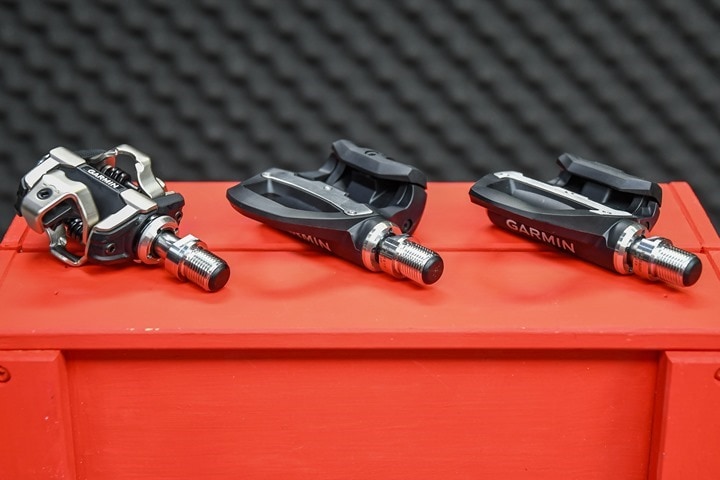


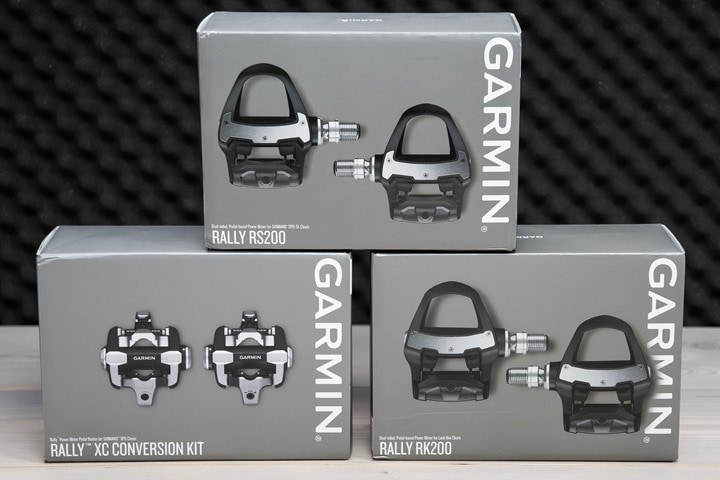
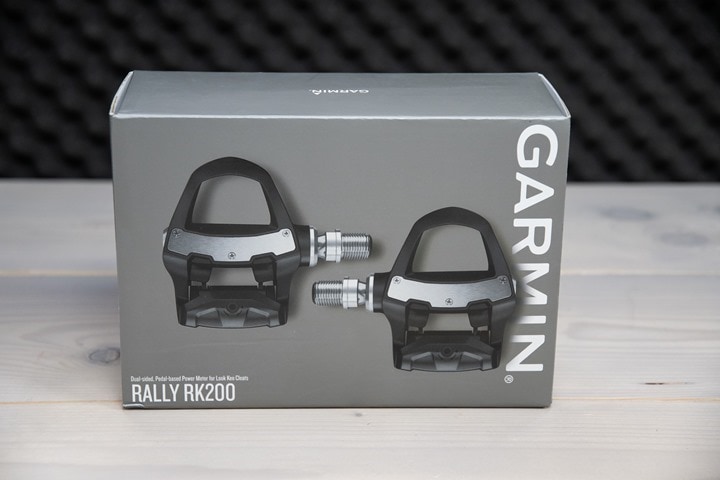
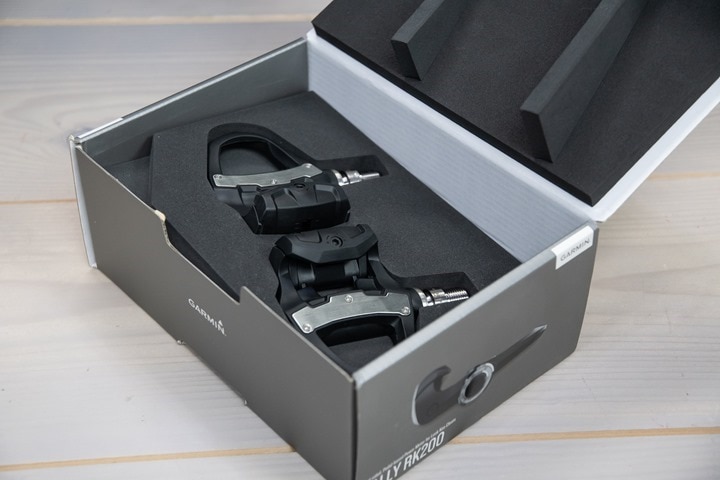
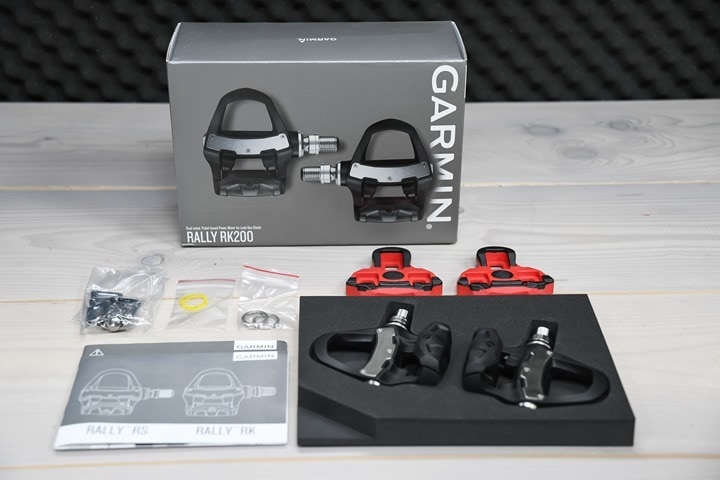
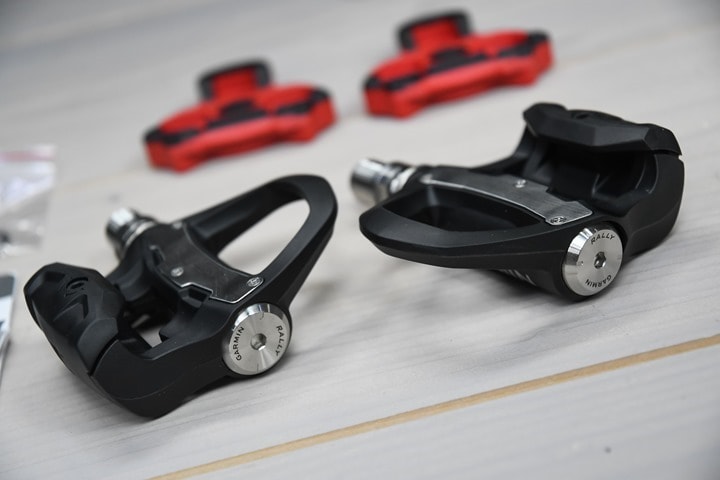

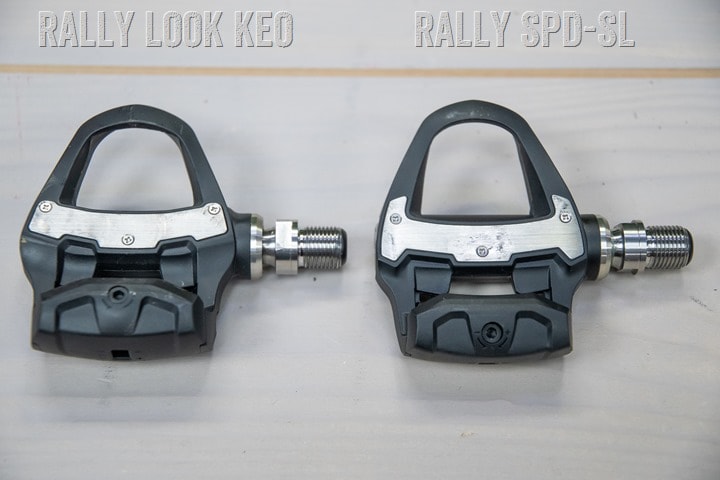
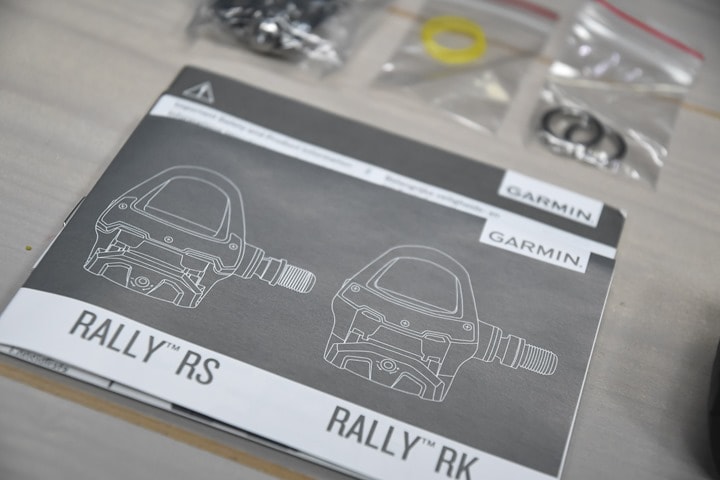
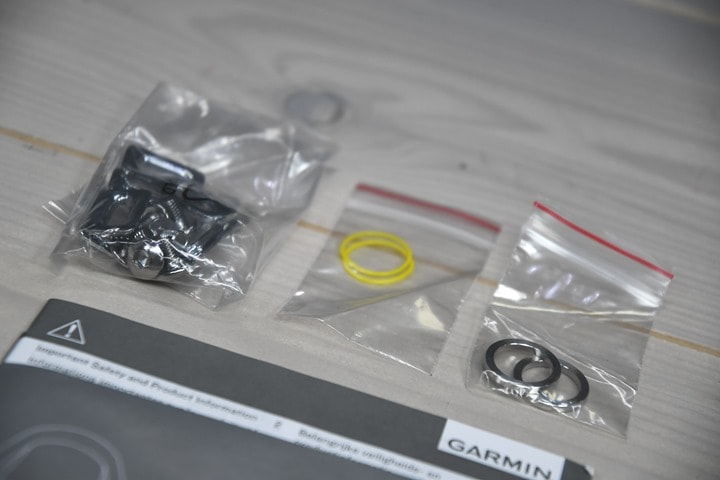
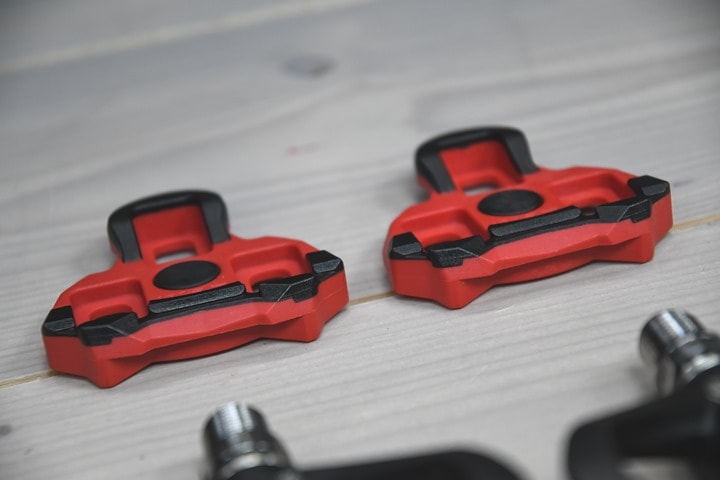
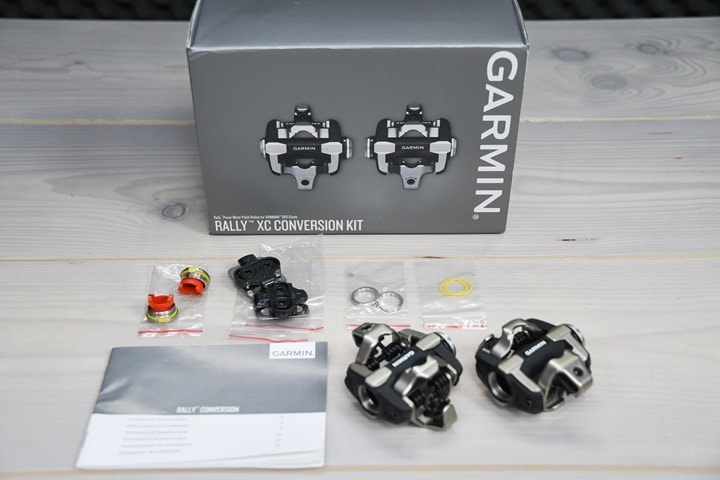
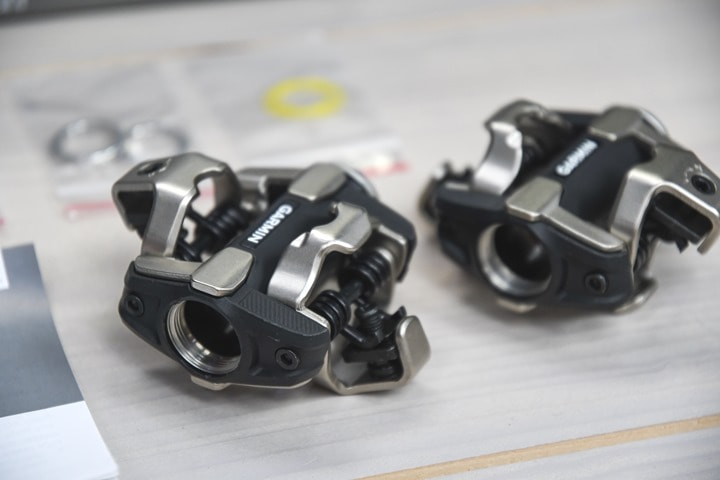
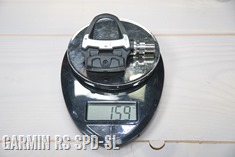
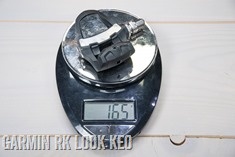
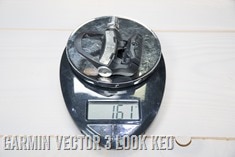
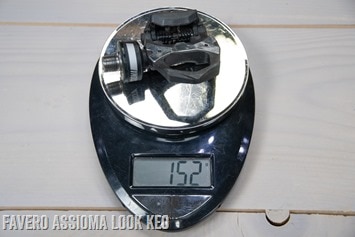
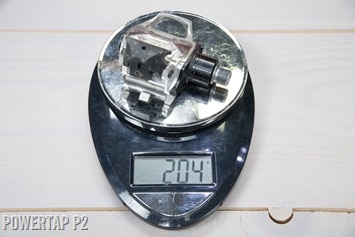
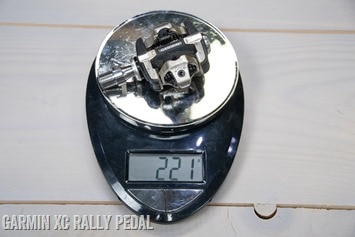
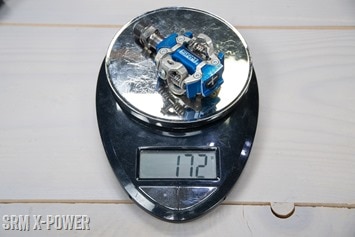
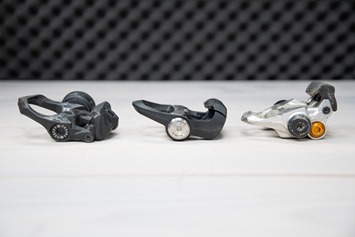

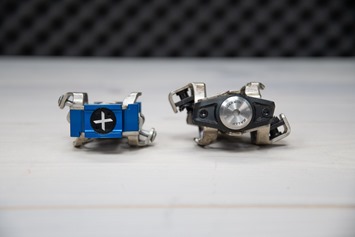
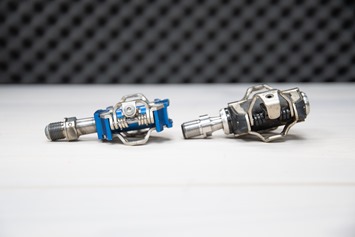
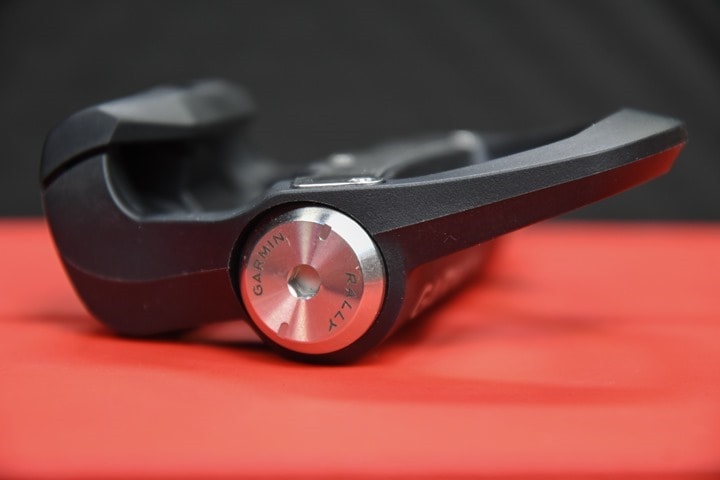
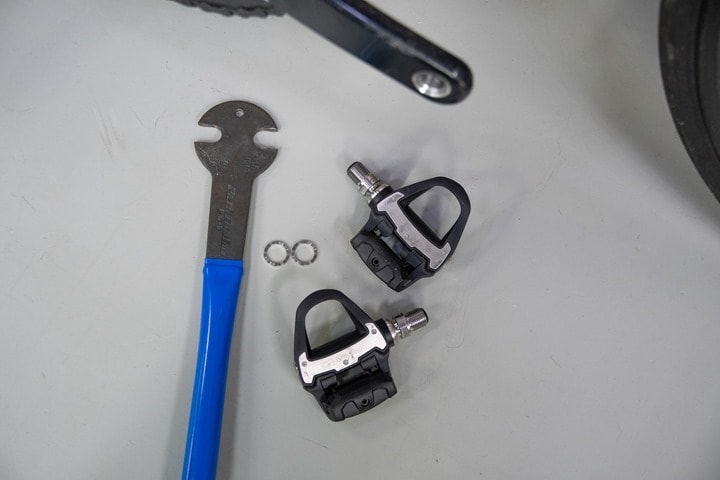
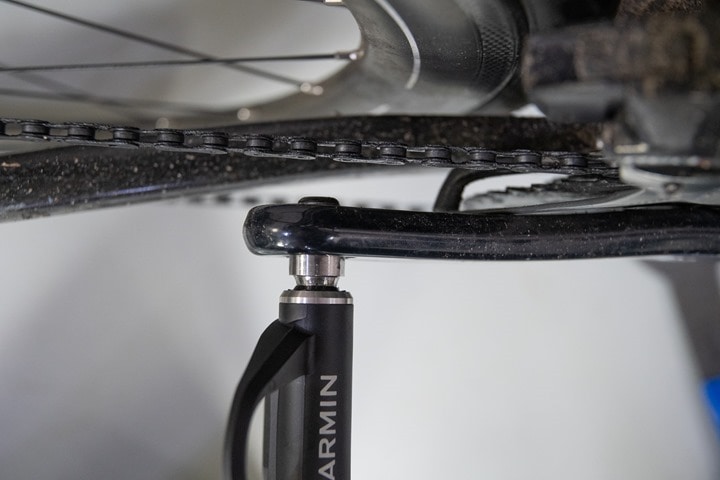
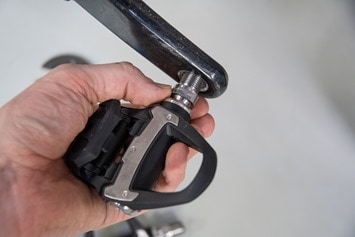
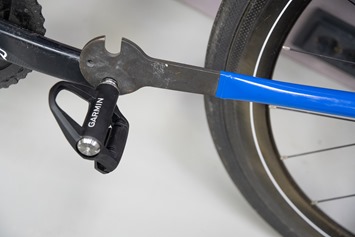

![clip_image001[6] clip_image001[6]](https://media.dcrainmaker.com/images/2021/03/clip_image0016_thumb-2.png)
![clip_image001[10] clip_image001[10]](https://media.dcrainmaker.com/images/2021/03/clip_image00110_thumb-2.png)
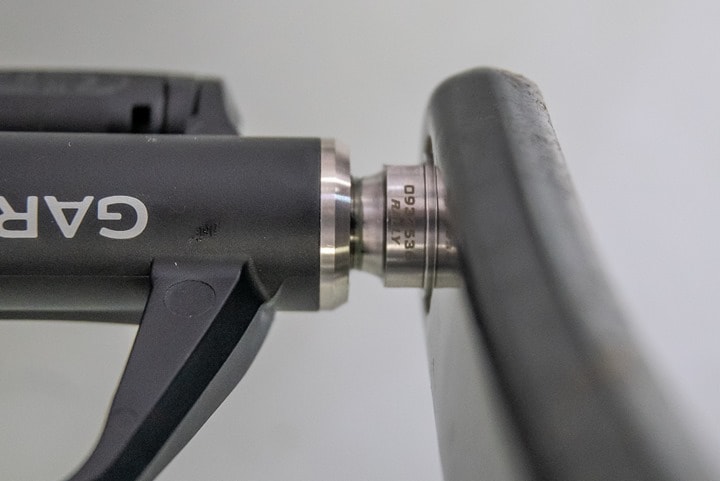
![clip_image001[12] clip_image001[12]](https://media.dcrainmaker.com/images/2021/03/clip_image00112_thumb-2.png)
![clip_image001[16] clip_image001[16]](https://media.dcrainmaker.com/images/2021/03/clip_image00116_thumb-1.png)
![clip_image001[14] clip_image001[14]](https://media.dcrainmaker.com/images/2021/03/clip_image00114_thumb-1.png)
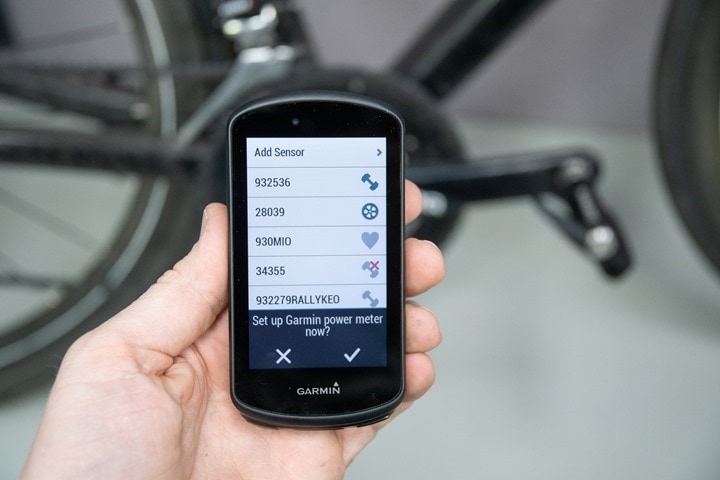
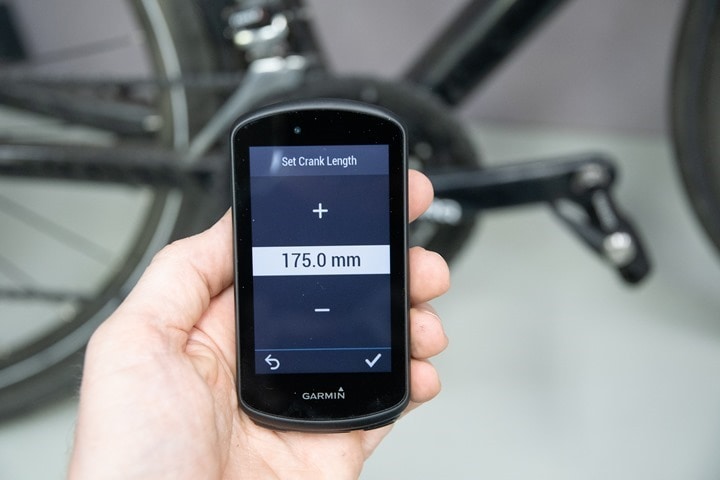
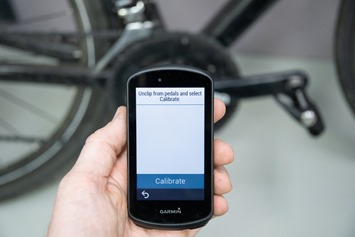

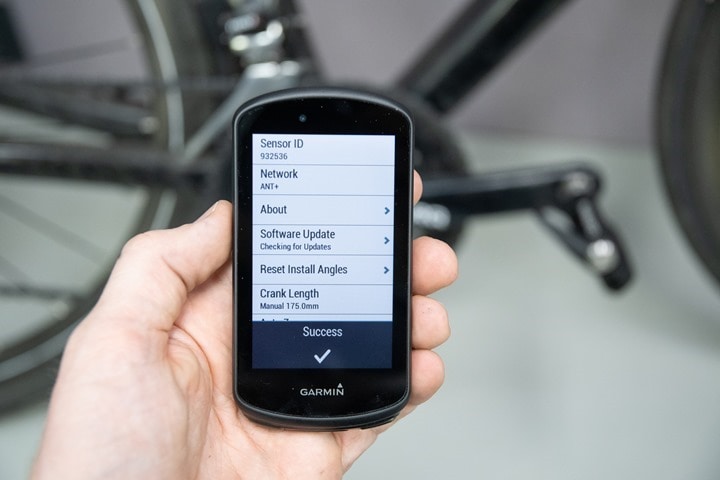
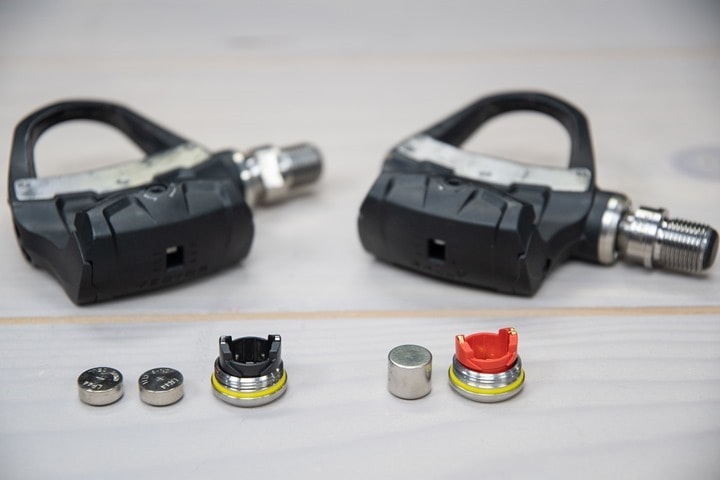
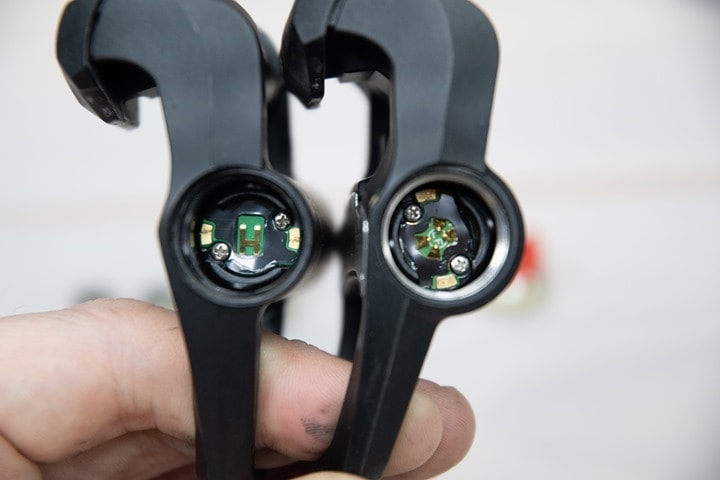
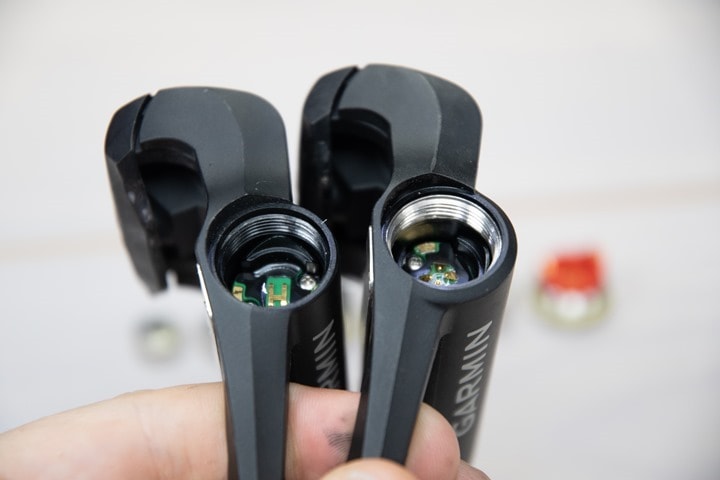





![clip_image001[22] clip_image001[22]](https://media.dcrainmaker.com/images/2021/03/clip_image00122_thumb.png)
![clip_image001[18] clip_image001[18]](https://media.dcrainmaker.com/images/2021/03/clip_image00118_thumb-1.png)
![clip_image001[20] clip_image001[20]](https://media.dcrainmaker.com/images/2021/03/clip_image00120_thumb.png)

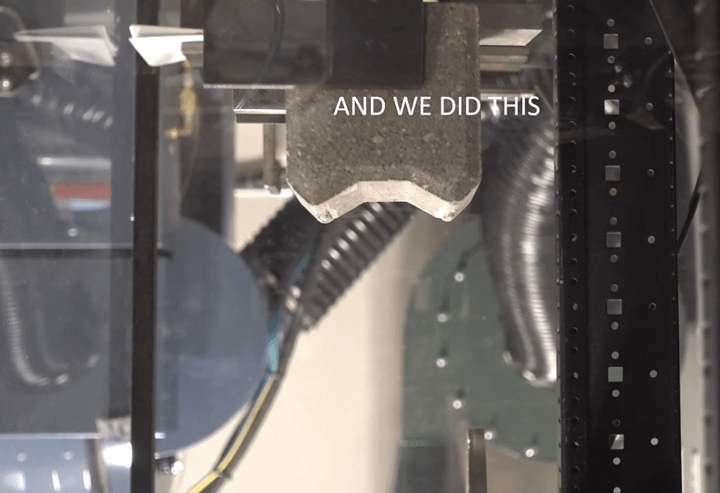
































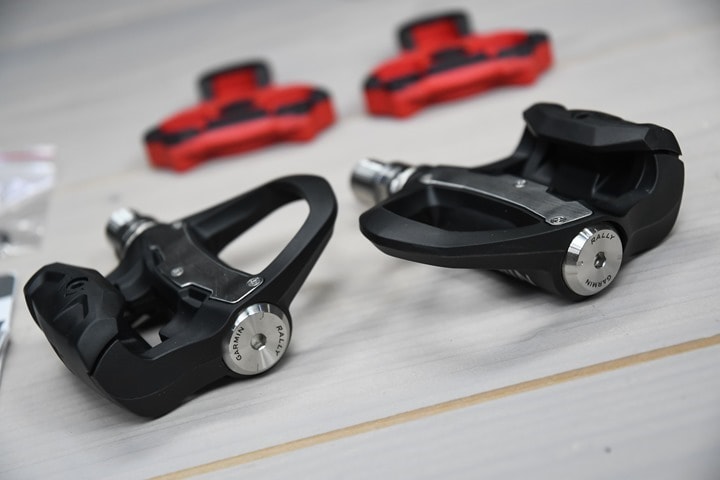
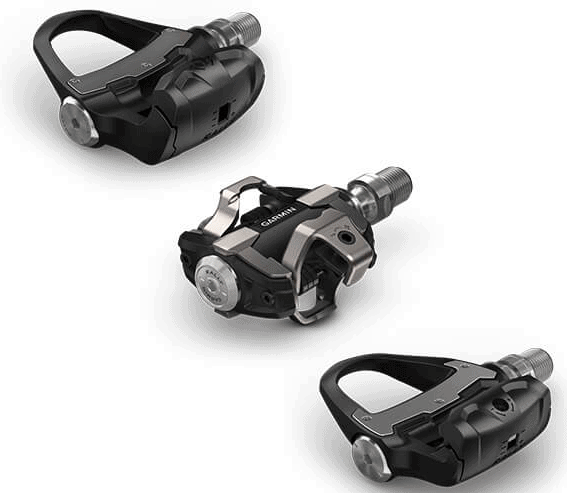

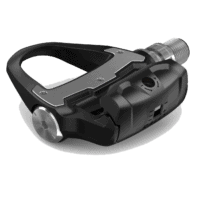
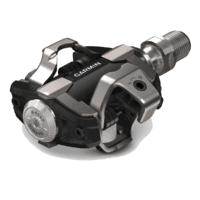
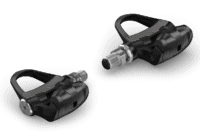
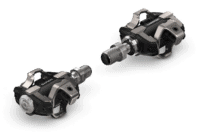
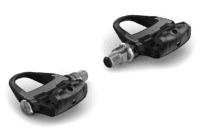





















Favero is working on SPD-SL compatability :).
link to cyclingtips.com
Hope to see it soon. I have a new wheelset to replace my PowerTap and all I need are the Favero’s
I hope the existing Favero spindles can accommodate the shimano body.
Hi Thanks for the clear instructions on how to use the conversion kit. I don’t have the torque wrench nor the right socket of 12mm. Can you advise me on where to order that? Thanks!
This is really exciting news! Thanks Ray for a great review!
Hi Ray. Is there any real difference between the Vector 3 and Rally pedals other than the pedal threads/spindle? I have always been tempted by the Vector 3 but was waiting for SPD-SL compatibility. Looking at prices though, I can get a pair of Vector 3’s for c.£600 (maybe even cheaper now the Rally is out), and then buy an SPD-SL converter for c.£180, so total cost of £780. Or I can buy the Rally RS200 for £970. Surely it can’t be worth spending the extra £190 just for the threads/spindle? Thanks
Note: If you got the pedal body conversion you would get the new threads. The only part I think you do not get with Vector 3 and conversion would be the newer electronics. Eg. Battery life. I stand to be corrected.
That’s all correct!
Hi Ray, as far as I watched in your body replacement video, all the electronics is belong to the body, isnt it? so conversion kit will supply new electronics so old spindle + body can give us new electronics?
well, see it again, the battery holder and maybe some parts put on the holder is reused. but strain guages will came with the new bodies? After all, do we need open-end torque wrench to mount it on the crank arm? does the ant ID staty same or changed?
In the video at the start I show the contents of the conversion kit. There’s no electronics/pieces there. Just pedal bodies and battery caps.
But the battery bases come from your old pedals, as do the spindle which has the strain gauges inside them. ANT+ ID stays the same, because that’s on the spindle.
I have heard that people with battery door replacement claims now get the new complete set: Both sides of the battery carriage and the PCB.
Interesting as ever, I do wonder about zeroing each ride, something I nearly always forget to do with my P1s, it does make me wonder my manual calibration is needed though!
Hey
The comparison table is only showing the SRM and Assioma pedals, thats on both my laptop and phone
Thanks. Had wrong time entered for the product database entry (an hour later). Live now!
And there was me naively thinking that Garmin’s power meter prices might be reducing over time.
Nice review and video. Thanks.
At least in Europe, they have to have a high starting price so they can boast about how much discount they’ve given you over time. The Vector 3 (which appear to be discontinued?) are down to about £600 now for dual sided from about £1000 at launch. I don’t anticipate it being long before the Rally get discounted because they are still competing with Favero and Rally are effectively just Vector 3. My guess is that the launch price will last long enough to get rid of Vector 3 stock.
In the price fixing USA though, who knows what the future holds! In the land of freedom, market forces are considered good for everything except pricing ;)
Just an FYI, You commented on the different base plate for the batteries on the Vector 3 vs the Rally, is really not quite right. The updated plate for the Vector 3 has the same design and came out over a year ago with the update kit along with the new outer cover. You might want to get the replacement for your Vector 3s, it is better
Ahh, good to know! Yeah, they only ever sent the new battery caps.
yes Ray
please update your review accordingly in order to not get wrong your readers.
link to buy.garmin.com
link to youtube.com
link to youtube.com
I got my kit from Garmin support, all is now fixed, pedals work fine.
currently it is not really fair for the previous models which had a very bad reputation
thx!
I’m not sure I understand. At the end of the day, Garmin didn’t send out new battery bases to people unprompted. They did however send out new battery caps.
Thus, while it seems – like the most recent battery caps, that the battery bases were also available to Vector 3 folks, for at least quite a while (likely years), they weren’t.
And while I totally agree that most Vector3 owners are fine, I’m definitely not going to remove the portions of the review that discuss the very real reality that it sucks for untold numbers of people.
Cheers!
sorry if I got you wrong, I was not asking to change the portions where you talk about redundant issues for a group of V3’s owners.
Issues are actually there and unfortunately garmin was not able to make all people happy with their pedals. I was lucky to solve by myself in 2018 reset issue by adding a piece of cork because the metal plate was too thin….
In fact I was just highlighting what Steve said about the new battery caps & electronic plate.
At the end I don’t see the real interest for a V3 owner (who is satisfied) to buy the Rally as they are quite identical excepted the better battery life.
Now I’m wondering if I have to buy a spare of V3 before stock gone…
anyway thanks a lot for great reviews, you are the reference on the internet!
cheers
Gotchhya. Thanks!
Yup – added in the notable about most recent battery bases a few mins ago and the link to buy the $30 kit. I can’t change the video, but will update my Vector 3 conversion post before it goes live (was going to publish it yesterday, but might wait a few days for kits to become available).
Cheers!
Ray,
The comparison table is only showing the Favero Assioma’s and the SRM X-Power, and not the Rally’s. Using Chrome.
Thanks. Had wrong time entered for the product database entry (an hour later). All set now!
I see that it comes with the red cleats. Can you use the Yellow Cleat (Float) or does that negate accurate power?
Yup, in fact, I used the standard Shimano yellow cleats, as I’m too lazy to swap cleats.
Just to be shure – it also would work with the blue cleats?
mig
I was seriously considering getting some Favero Assioma pedals, but was reluctant to move to Look, so this looked like the perfect solution.
Then I saw the price, and I guess I’ll be getting used to Look pedals after all. Garmin’s site quotes a 3-5 week delivery timeframe for the RS100’s in the UK anyway.
Garmin Vector 3 are now priced at about £600.
They should be shipping out immediately (in fact, some went out Monday at a local bike shop). However, as Will noted, you could pickup a pair of Vector 3 and then a conversion kit. In some cases that might make financial sense.
As always, Garmin will fulfill their retailers/distributors first, over Garmin.com orders.
I did look at that, but the conversion kit is disproportionately expensive if you’re only interested in single sided. I might hold off and see what comes of the Favero SPD-SL rumours.
But the conversion kit is just the pedal bodies, so you’d need that either way. Meaning, there’s no electronics there – hence why the price is the same (and only one kit).
I mean I can get Vector 3s for £380. Add the £180 conversion kit, and you’re not far off the £580 that Garmin is listing the newer RS100 for (granted, retailers can undercut that, I’ll have a look again once some actually list them)
Compared to Vector 3 for £660, add £180 conversion kit and you’re significantly lower than the £970 that Garmin is listing the RS200 for.
So although the Rallys are approx 50% more expensive than the equivalent Vectors, the fixed price of the conversion kit eats up most of the saving on the single-sided ones (but not for the double-sided)
Steve,
I switched from SPD-SL to Look (Assioma) two years ago and found the conversion to be quite seamless. In fact, now that I switched, I can use the look Keo memory thing to swap cleats quicker.
I use regular Keo cleats (non grip) with clear covers when I need to walk. My only gripe (as many) Assioma pedals spin a little too freely off of a stop sign/red light, and the fact that non grip Keo cleats I use tend to slip on the asphalt from time to time if I can’t pedal away and have to push my self with the unclipped foot.
Given the price difference, I would definitely go with Assiomas.
Nice to have the pedal body options but utterly stunned that Garmin haven’t gone to a rechargeable battery after the fiasco that was Vector 3.
There’s still time. If anything it’s reassuring that the battery cover is identical to Vector so if and when there’s a mk4 battery cover with rechargeable inside (there’s plenty of room!) we can all take advantage.
From a mountain biker perspective, all things being equal… I think I’d go with the SRM.
If I used road style pedals at all it might be a difference decision though.
Just out of curiosity – what’s the driving reason for the choice (I presume pedal height, but just confirming…).
Yeah, stack height is a big part of it (they’re going to get smashed to pieces on rocks). I don’t particularly trust Garmin either when it comes to power pedals.
another Garmin power meter? ver 1 and 2 were GARBAGE and ver 2 had a gazillion issues…
thx but no thx… I will wait for assioma mtb pedal or keep using my crank.
nice review as usual Ray!
You haven’t seen GPLama’s assioma “hack” to convert the assioma’s to gravel/mtb versions?
link to youtube.com – that is probably a lot easier than to wait for them to come out with a real version. I’m pretty sure they are aware of that hack themselves and see that as a market enabler without having to make different models. – even though i’m sure it would void warranty.
For me the question is this:
£970 for RALLY RS200 or:
Buy some vector 3 now going cheap and then convert them to SPD?
That would save at least £200. Is the Rally worth that?
Are the new Rally pedal bodies available as replacements? I have been using Vector 3 but the threads in the end of the pedal body are now really naff and it takes ages to replace the battery caps.
I suspect if you call Garmin support they’ll help you out there. While people had product troubles with Vector 3, the one thing that pretty much everyone agreed upon is that the Garmin Vector support team was usually willing to go well beyond the extra mile/etc to sort out things…
Thanks DCR, email sent to Garmin UK.
Off topic, but as a cyclist who has used Time pedals for over 30 years, do you think SRAM is working on a power pedal option?
Thanks
Undoubtedly, since they acquired PowerTap explicitly for the pedals and hubs. And while some might say they did that to get PT out of the market, that doesn’t make much sense. Quarq/SRAM have long argued that having more ways to put power on a bike is better than less ways.
Hello,
is this really Garmin wording:
Rally RS = Rally Rally Shimano ?
I would have thought it more like
Rally RS = Rally ROAD Shimano
Rallly RK = Rally ROAD KEO
Rally RX = Rally Xross Country
Makes sense?
BR
JOe
Uh- typo:
Rally XC = Rally X (Cross) Country
Hi
Did you test how well this power meter handels the sticky watts effect on Zwift? link to zwiftinsider.com
Thanks for your help
I haven’t tested, but I can’t imagine there would be any change there since that would be a fundamental change to how Vector and other power meters broadcast.
I’m a little surprised at how high the pricing is, given the issues with the Vector 3 pedals and the fact their new product doesn’t compensate for the temperature shift at the moment.
I also think Garmin should be willing to upgrade Vector 3 owners at a cheaper price point as a good will gesture.
I really hope these work in the long term, but I have a hard time paying any sort of premium for these given the broken Vector 3 pedals I have sitting on my shelf.
Finally a decent SPD-SL solution. Still love my shiny alu Dura-ace pedals, which I can now still use on another bike.
Can you use the “dual-side” version also as single sided? So use one pedal instead of two?
If so, would that work for just the left or the right pedal or maybe both sides can be used single sided?
Hi, I’m also interested if the xc200 pedals can work independently so you could have one of each bike when needed? Would work out a bit cheaper or even split them with a mate or something?
No, you always need a left pedal unfortunately.
im wondering the opposite: if you have two single pedals, can they convert to a double? ive got a single vector 3, thinking of buying another single so ive got power on my tri and road bikes…but with all these conversion kit options it would be neat if someday i couldmove to singles together on one bike. suspect the answeris no though.
Really interesting – I am curious to see what Favero comes up with for SPD-SL. One small thing. The review says “you’ll need a pedal wrench, because like all other pedal-based power meters, the spindle houses the electronics (so you can’t stick an Allen wrench in there).” While true for Garmin, this isn’t the case for Assiomas (unless I’ve been doing things way, way wrong – in which case please tell me!).
Ahh yes, I meant to change that. Thanks!
Why are we now suddenly seeing SPD-SL power meters (Garmin here, and Favero working on it)? I thought manufacturers had deferred from doing this all this time due to patent issues and Shimano holding the patents. What has changed?
Shimano’s patents relating to SPD expired in early 2019.
Correct, though, the SPD-SL patent is a bit fuzzier to me. I’d be curious if someone can find that exact patent and expiration date.
I believe the patent expired a couple years ago.
I still kind of doubt that the patent in question was in Shimano’s hands: SPD (without SL) seems to be licenced to just about anyone and it doesn’t seem like their own offerings are suffering too much from that. Why would they do it differently for road? Of it was a Look patent (that happened to be sufficiently general to include SL), the situation we were seeing would make far more sense: Look willingly licencing to anyone as long as they stick to Keo, reluctantly to those who do their own exclusive format (like Shimano) and not at all to anyone who aims for cross-compatibility with something from the second group.
this one? link to patents.google.com
I’m with you on the “fuzzy” part. it quite clearly states: Status expired, but there is a fee? and the anticipated expiration was supposed to be 2025.
Properly read through now, nice review as ever Ray.
Re what you found on auto temp compensation, I’m guessing that’s going to be a problem on a long climb, (say an alpine one) where you could calibrate at the bottom in a toasty 35 degrees C and then be riding along in 10 degrees C an hour later.
Presumably in that scenario you’d need to stop and calibrate half way up if you wanted accuracy still?
That’s a massively important point and one DC can’t test living in the flat lands. Any decent mountain climbing is going to mess the power up on these and instantly crosses them off as a viable option. Ironically, on a mountain climb is where I most need/use a power meter.
Temperature usually drops 0.5C for every 100m you climb….
So, I’m a bit unsure there actually. Garmin’s answer is basically saying that the algorithm protects against a snap change in temp (such as going in/out) between zero offsets, rather than the drift issue within a ‘known good’.
Meaning, they took a ‘known good’ offset and then applied temp comp from there. But for whatever reason, it didn’t appear to accept it’s autocal that should have happened either time it went to sleep (the night before, or about 15 mins before I used them, after I checkced pairing and such).
Thus, I don’t think in this scenario it actually impacts the climbing. It’s funny, I’ve long had the idea to build a small mini-greenhouse sized chamber to test this exact climbing scenario, using heating/cooling to slowly shift the temp over say, 30 mins.
Though ironically, I think I can roughly accomplish the same thing by heating up the shed, and then jumping on the bike, turning off the heater, and then just opening the doors to let it cool down to outside March temps at night.
The only challenge here is having a ‘known good’ baseline. Meaning, if everyone fails…then, it’s like a tree in the forest – does it make a sound?
It’s called the “lapse rate”, and it is indeed about 5C/km (varies with the presence of water vapor). Even here, where the mountain tops only rise 1200 ft (365 m) above the valley, you can occasionally see light snow or frost on the mountain tops where there’s nothing in the valley. In the summer, the temperature in the mountains is far more affected by foliage and winds and the presence of running water than the altitude. (And which way a slope is pointing; right now all of the south facing slopes are clear while the north facing slopes still have a little snow on them.)
Chart shows Assioma Duo for $649? Where can I get that price? Quick search around and all priced in the $700s at least.
Ahh, good point. That was there in the database from before their price change policy. Nowadays it’s $719. Thanks!
Ray
Can you explain a bit more about what Garmin means by “Cycling Dynamics
Dual-sensing pedals provide cycling dynamics while single-sensing pedals provide power only.”
Trying to understand what I get/dont get for my £390 price difference
I believe that should say “dual-sided” and “single-sided.” Both pedals (dual-sided) must provide power data so that the detailed Cycling Dynamics metrics (L/R balance, power phase, etc.) can be calculated. Single-sided power meters just double your power output from one side, and there isn’t a way for other metrics to be calculated. It really depends on your use case.
Hi Ray,
thanks for the review!
Now with both Garmin and SRM offering their SPD options there is no reason for using a crank-based power meter on a road bike anymore (unless you already have one).
I wonder though why the SPD version is the most expensive one. Pure material cost or added durability as well?
I suspect durability related, and honestly, probably also simply because SRM is priced there.
As for crank based power meters, the big thing though is that they’re just far cheaper. Quarq & Power2Max float at the $500 range for some models, and then you’ve got crank-arm options too from Stages, 4iiii, and others.
I agree with Ray. The “price of entry” will probably make a big difference for some people. For $300 you can get one-sided crank-based power, which makes it an easier “starter” purchase than $650 for one-sided Garmin SPD pedals. Of course, the pedals can move between bikes. For example, for a total of $600, I can get one-sided crank-based power on my two main bikes and I don’t need to worry about swapping pedals back and forth all the time. Or for $650 I can get one-sided power pedals from Garmin, but have to swap them among bikes AND take a sizeable weight penalty. It’s not a clear win for the pedals.
Secondly, there is the question of weight that I alluded to: The Mountain Bike style SPD powermeter pedals from Garmin weigh 442g for the pair, which is 132g (0.3 pounds) more than standard Shimano XTR pedals (310 grams). By contrast, 4iiii’s newer crank-based options only add 7.5 grams to the weight of your bike. Is an extra 124 grams of weight a huge deal? No, but it is another small benefit of the crank-based power meter option.
All that said: I’m really happy to see more options for off-road (or at least recessed cleat) power meter pedals! When Assioma hopefully make a cheaper SPD pedal option (that doesn’t involve hacking apart pedals), then I think the pedal options will get a stronger “win” for situations where rock-strikes are not an issue. Right now, the price difference is still quite large.
Hi Ray,
Where are those trails shown in the movie? Is it near Amsterdam?
I am Living in The Hague and always on the search for mtb/gravel paths.
Cheers
What about new garmin edge? :)
I doubt there will be a 5xx or 8xx edge upgrade until next year. That’s what I’m waiting for.
I think they have missed the point here. Really expensive pedals. Right now you can buy Favero pedals for half the price and can be converted to mtb too (it is a bit clunkier but it can be done).
Rest to be seen wahoo, but seeing how wahoo prices their products ther will be closer to 1500$.
I agree that these are expensive. Hopefully some official Favero Assioma SPD pedals will be coming soon and be more reasonably priced.
Many of us are not interested in hacking apart both our pedals and our shoes for a non-warrantied SPD pedal option. At that point, I would just buy a one-sided crank-based option for $300 (though it limits usage to a single bike — or involves some annoying moving of crankarms among bikes — not something I would want to do regularly, even though it is not particularly difficult.
What do you suggest? SRM of Rally SPD?
What sort of warranty do the Rallys have? How does it work with the conversion kits, especially if you convert a Vector 3?
Hi Ray, great review, thanks! Does the Vector 3 suffer from the same 0 offset temperature calibration issues that you experienced with the Rally?
I ordered Vector 3s yesterday, now I have to decide if I should cancel that order and get the Rally RS as I would prefer Shimano over Keo, plus the new threads and updated electronics. When I ordered the V3 yesterday, the price was not discounted, and now the V3’s no longer show up on Garmin Canada’s web site.
Hy Ray,
how do I get the new Battery Cap for the Vector 3?
Hi, you can get new battery caps from Garmin online store directly or seach the Internet for the part number (S00-01030-00) link to buy.garmin.com.
When new caps where released in March last year I received an email from Garmin with a personal discount code and was offered the replacement for free. If you havent gotten your code try to call Garmin Support and maybe you will be offered the same although I’m not sure if this was time limited offer. Good luck.
Ray, you have the batteries listed a couple of times as 3/1n instead of 1/3n.
Maybe you already mentioned this and I missed it, or maybe it’s old news, but there’s no trace of any Vector pedals on Garmin website any longer.
I don’t remember what the cost of Vector 3 was, but as always, I’m flabbergasted at the cost of power meters.
I’m sure there’s more to it than I realize, but having built some simplistic power measuring devices in college several decades ago, it was just a set of strain gauges arranged in a wheatstone bridge about a shaft. Super cheap. I don’t get it. Yeah, there’s the broadcasting and recording, and battery, etc. But I’m still shocked that no one can bring these to market for half or less of these prices.
There’s a trace of them on the UK site
link to buy.garmin.com
£789
I think the thing with pedal based power meters is that you can get to 95% of the development process with no problems, but getting to the point of a finished product is insanely hard; just look at the first two Vector attempts. Because pedal-based power meters are situated in such a vulnerable place they take such a beating that they have to be sure that they operate reliably. It has taken four years for Garmin to come up with a new version, that is scarcely different to the Vector 3, and the main differences having been requested years ago.
And, answering your question about The cost of Vector 3 pedals, they were first released they were £850. Freewheel.co.uk was recently selling them for ≈£650 with a free HRM-DUAL (£60), which is pretty cool. They have removed them from today. At trade price they cost £491(including VAT).
Wait, does this mean I can buy used spindles from aliexpress.com and then turn them into full pedals using a conversion kit? Would these be missing any of the needed parts?
If they *JUST* included the spindles only, then you’re short a few minor parts. Notably, the base of the battery connector (check out my video above to see where I take that apart). You’d also be short the two small custom o-rings.
Honestly though, I’d be pretty hesitant to buy used Vector spindles. I mean, maybe they work, and I buy all sorts of random stuff on Aliexpress too – but this…eeks.
Thanks for the reply. I think the Vector 3 Small Parts Kit might include some of the missing parts, but from what I can tell, it would still be missing the nut at the end.
Anyway, I tend to agree with you — this could turn into an expensive waste of time; best to save up and buy the real deal.
I think there is a great deal to like about the Rally series. I wasn’t expecting this much modularity with the pedal bodies. Given all the prior commentary on SPD pedals & rock strikes it is good to know their testing regime brought the cinder block on into the laboratory.
I don’t know that I’ll specifically wait for it, but suspect zero offset calibration/temperature compensation improvements will eventually help facilitate my specific use pattern. Bikes almost always in full climate control & PR hill only a few minutes into the ride. Ultimately either their logic will be more accurate than what I had before or they’ll adapt to be closer to the other models if not. Pulling weather through GCM or doing post-ride adjustments in the extreme cases similar to elevation corrections seem like options, but I’m not volunteering to do the code. Assuming it is actually a significant issue to being with.
This definitely pushes my Index scale upgrade substantially lower on the list.
“On your bike computer or watch, you’ll go to the normal sensors menu to pair up Vector 3. As long as it supports ANT+ or Bluetooth Smart power meters, you should be good. If on a Garmin device, it’ll see that it’s Vector and ask if you want to set it up:”
Maybe pair up Rally here?
What’s funny is I literally had a note to myself at the end of my review, before publishing, to check every time I typed Vector and meant Rally. Looks like out of the umpteen million times I typed it, one slipped by. Thanks!
Will it be possible to use after beta testing ? Stage beta testing ends on the day of removal from production, in two years? 
And still no Keywin power option :( But given their multiple custom axle widths, not surprising. Now if only they made a “Garmin Rally compatible” set (trade custom fit for low stack with power.)
link to keywin.com
Anything on bearing replacement and servicing?
That was the killer on Powertap P1s
Not talking about the bearings in these pedals is a HUGE omission in any review imho. I had 3 pairs of Vector 3. All of them developed battery problems, but what’s even more of a dealbreaker: ALL of them needed bearing replacement within 4 months. I’m around 70kg max 1300 Watts, so neither heavy nor a watt-bomber and all riding was done in dry conditions.
All repairs were covered by Garmin and I eventually returned the pedals for a refund. BUT: If the bearings have not been redesigned on those Rallys, I would have zero confidence in the product and would not use a pair if they were given to me for free.
As yes, the bearings as well. How could I forget. They got so stuck that it felt like needing extra 10 watts just to rotate them.
Garmin uses its customers as free testers.
Bearings are part of the pedal body which are available as conversion kits. Conversion kits will work just as well as spares for bearing or body damage. Apparently the body swap well in the realm of user-serviceability (Ray has a video of the process).
Conversion kits seem quite expensive as far as spares go and in the video it isn’t obvious wether the bearings can easily be separated from the bodies or not. Favero bodies are meant to be separated from their bearings (they do sell a bearing kit) and even there it is isn’t always easy (particularly when the super low profile inboard bearings are so trashed that the inner rings separate from the outer rings). This looks harder, perhaps impossible without destructive process (parts glued in the path where the bearings originally entered?)
Yeah, honestly, out of the 1,279 comments on the Vector 3 review – not a *SINGLE PERSON* complained about bearings on Vector 3 and needing changed. Not kidding. I just went through every reference to ‘bearings’. Folks (rightfully) complained about all assortment of other things, but bearings was never one of them.
Not saying a few people haven’t had issues, but as noted, for the handful of comments I can find about bearings on the Garmin forums, Garmin support took care of those.
And if for some reason that doesn’t happen, one can still buy replacement pedal bodies, though that’s certainly expensive at basically $200/set.
I can only talk about my own personal experience and a handful of folks I ride with. ALL had bearings failing within 6 months. The point is:
1. The bearings cannot really be serviced by the user.
2. To make such a compact pedal, everything had to be miniaturized, including the bearings. The smaller the bearing, the higher the wear or the lesser the force it can deal with…
Would be really informative for a review to compare the size of bearing balls, races, seals of the available PM-pedal to regular Shimano/Keo pedals…
In all fairness, Garmin handled all repairs/exchanges well and (of course) free of charge within the warranty. But as soon as the warranty runs out you are stuck to replacing pedal bodies at 200$ a pair… In my case that would have been 800$ a year- way to high a cost for upkeep of a PM.
The Garmin Rally have an ugly issue by design, which cost me a lot when I bought used Rally XC.
There are two bearings in each pedal, one ball-bearing SKF HK1010E, which is integrated (both running rings – inner and outer race – are part of the bearing) and one needle-roller bearing SKF 628/7-2Z, which rolls directly on the power meter spindle – it has no inner race, the inner race is the spindle itself!
This means that when it wears out the inner race, you can throw your Rally away, there is no economic way to fix.
Assioma, for example, has all integral bearings, so if any race goes bad (and it does!), just change the bearings and off you go.
Thanks for the review and such a great level of detail. I did just have one question though. Can these power meter peddles be used in conjunction with oval chainrings. I know Vector 3 can’t but what about the new Rallys?
Can’t I just buy a vector 3 on sale for $770 + Rally RS body for $200 to get the same product for $130 less than msrp?
I appreciate it a lot that the “old” Vector3 can be converted to SPD.
But for all the grief I’ve had with them, I’m not spending the money anytime soon (fool me once, shame on you; fool me twice…)
As such, it would be a nice token of good will / mea culpa if they would offer a discount on the pedals to registered Vector3 owners IMHO.
I bought a pair of Vector 3 pedals three weeks ago 😂. Thankfully they are basically the same as the RK-200 pedals. I just want to say what a rubbish name ‘Rally’ is. I mean… ‘VECTOR’ just sounds cool and “physicsy”, but Rally sounds like a running race.
Great video as usual ! Look cool ! However, this is vaporware! 😜 Garmin announced a new scale, back in October 2020, can you buy it now ? No, I will believe this product is for real, the day, that I can order it on their site, or my local retailer. Up here in Canada, it is still impossible to get their new scale, in a retail store, or any web site…. They seem to be doing this with some of their products: They announced it, create a buzz on the Internet, and YouTube, and it is not available for months,…
While it would have been nice to see a bit more newness here, I think my main frustration is that Garmin seem to have waited for competition to release these. I doubt it’s a coincidence that these followed Wahoo and SRM and based on the Vector 3 announcement we can only assume that these were always planned and have probably been ready for a long time. I get the patent thing, but that was a while back so in March 2021 not an awesome excuse.
You have to wonder what cool stuff we’d have by now if manufacturers released all the cool things they could without a thought to business plans. Elon Musk did a great interview where he said there are too many MBAs in boardrooms who don’t get their products and only understand money.
Oh well, they’re here now so good effort Garmin. Now about that Fenix 7 that actually works with modern headphones?
There is some value in that perspective, but the business side of the house contributes by making sure the company can consistently research, design, and produce good stuff for as many decades as possible. In recent years focus has settled on the crowdsourcing model that suggests a “great idea” can overcome everything if we all just throw money at it. The truth is likely a mixture of all these things. They all need to happen from time to time in appropriate measure.
To your specific point, Garmin is likely successful enough that they don’t need to worry so much about timing with this specific product introduction. They did have Coros release product just after the FR745 in the watch space a while back, but whether that really mattered to them or not is debatable.
Yes I know that really, it’s just disapointing :)
Garmin said they could swap bodies when they released the Vector 3, it was one of their main design principles and I’m certain Ray mentioned it at the time. Back then patents were an issue but I can’t believe Garmin didn’t have those bodies ready the day the patents expired.
Either way, we can all start confidently buying power meters again without so much worry of being blindsided by announcements which is a step forwards. I bought a TT bike in 2019 and have been swapping my Vectors onto it while waiting for this announcement rather than giving Garmin more of my money. Now they can have that money :)
Why wouldn’t you buy Vector 3 pedals? They are cheaper, still compatible with everything, have the same accuracy, cost £300 less, are lighter, and have decent battery life. You could buy the converting kits with the savings. I am genuinely interested. Thanks
Because they’re probably discontinued so may not be available.
Ray,
Do you know / think the Vector 3 pedal firmware will be updated/stay in sync with the Rally models? I’m wondering if Garmin will continue to maintain the Vector 3 firmware.
Gilbert
Manual, 2 page. link to www8.garmin.com
The FCC ID IS Located in the Battery Compartment. FCC ID: IPH-03220, M / N: A03220
These are the same FCCID and M/N that in the vector 3 link to fccid.io, for August 18, 2017.
Or is it a typo, or the difference is only in the firmware. Smiley
For they are obliged to pass the radio controlling, even if the resistors of another nominal value of the class accuracy fell.
They must pass a radio controller, even if the resistors of another nominal value or accuracy were replaced.
Ya same FCCID. Now’s it’s possible they did permissive change and we’re not seeing it yet. Permissive changes are allowed for changes in non-rf components, or non-rf-impacting. It could also be that the changes they were referring to was mechanical or in the strain gage internal sensing bit. For instance slightly higher resistance gages could result in lower consumption. They might have went “close enough” on a replacement chip and not even filed a permissive change.
Or it could all be marketing hand wavery and you’re the first to notice (I was literally looking this up then). If so glad I’m not the only one doing this.
So I’m not well-versed in power meters, but looking for a a decent one to put on my tri bike. My brother gave me a hub based power meter and I like it for my road bike, but when I wanna use my race wheels I’m SOL.
It doesn’t seem like this would be your pick, but I’m also confused when you mention vector’s reputational issue or the elephant in the room. What’s that issue that I don’t know of?
Vector 3 has a long history of power drop-outs and premature battery depletion related to the battery covers (the knurled silver caps on the outside of the pedal spindle). I think they’re on version 3 or 4. Garmin has been great about sending replacements as the design has improved over time, but its taken several years for Vector to become reliable. In my case, I’m really happy with them on the most recent battery door iteration, which as mentioned above, also included a new battery holder/circuit board inside the pedals. This was sent out free of charge last year.
had some battery cap issues that caused water to get into the pedals but those issues have been resolved
I kinda hoped they would go down to $999 for the set. At $1099, the Garmin at 40% discount is basically the same price as the Assioma, considering that I would have to pay sales tax on the discounted Garmin price.
Definitely waiting for long term rest results before pulling the trigger.
I can never trust Garmin with another pedal based power meter. I had 3 pairs of Vector 2 and 4 pairs of Vector 3’s and never managed to have a race where everything was working. Both models had obvious design flaws that made the faults inevitable. With Vector 3’s they redesign the faulty caps and sent them to ONLY customers who were heavily complaining. The new caps also worked for a few months and then had the same issues. I get a mild stroke every time a think about “Right sensor missing” error messages.
Garmin is notorious for misleading their clients and offering solutions to not functioning products that they know will not solve anything. They should have done a full recall for all Vector 3 pedals. Properly fixed them and only then send new ones.
There is a reason why none of the Pro Cycling teams that Garmin sponsors use their power meters (Astana, Canyon Sram, EF Education).
I literally threw them all away and went with Quarq and never looked back. 20 000km later not a single issue.
Well, that’s correct question. the “right sensor missing” issue – was it ever properly described? And Garmin stayed at the old solution with doubtful solution-
1. one battery against two (and double battery much more expensive and hard to buy) and
2. some cap replacement?
And they hope people will buy “the same” erroneous pedal for the same price?
I have been solving this with the first generation pedal. then “zero power” issue and then right spindle loosened (gap between pedal and the screw – link to images.app.goo.gl
).
All of the errors were “somehow” solved. cap version 2.0 was sufficient for me, but have to clean the contacts regularly, and I had to glue the spindle with the thread lock – the toughest one. But the issues are reappearing in the worst suitable moments (race or ftp test etc). And thinking all the time that the replacement of battery is Not enough, I should have some alcohol to clean the contacts and paraffin oil to lube them.
Could the “right sensor missing” be Problemidentifikation weaker left sensor low battery?
Does new version of pedals still send data via one pedal?
It’d be unlikely you get a right sensor error with a left-sensor battery, since that’d simply that the left side could get the bad message from the right side, when in reality the left-side was the one that dropped out (so you’d get a standard drop-out).
Rally currently sends data via the left pedal. Virtually all dual-sided systems have a defined ‘master’, the only exception I’m aware of is 4iiii, which can swing both ways (crankset based).
My Vector 3s from July 2020 look to identical to the Rallys with the same ‘prongs’ contacts and battery container. They were supplied with CR1 batteries
Is the comparison table only showing Favero and SRM, or am I really a dumbass? It can be both too.
I opened and it still got the old version of the site… see, dumbass
Simple question all of the CR1/3N are one and done batteries – so you may go through 20 a year or so. Is there any rechargeable option?
I’ve been using CR1/3N batteries in my Vector 3s pedals from almost day 1 (now on 3rd warranty replacement set and probably 3rd set of various designs of replacement battery doors — I was an early adopter). 20 sets of batteries a year is an over-exaggeration. I buy batteries online and keep a handful in my toolbox because they can be hard to find in stores. I change the batteries every 2-3 months, and probably well before I need to. I ride 10-17 hours most weeks.
Every set of Vector 3 pedals I’ve owned has been replaced under warranty after the pedal body separated from the cartridge, but battery life has never been an issue. I will say that Garmin support has been very good and has never given me a hard time about replacing my pedals.
Just as a data point, I have 3 sets of Garmin pedals: 2 sets of Vector 3 and 1 set of Vector 1 (with the Vector 2 upgrade kit). Maybe I’ve been lucky, but I have not had any significant issues with any of them.
I’ve been using the original Vector pedal on my gravel bike for the past year while waiting for a SPD pedal with power and did lose one of the old style battery covers (not the Vector 3 style threaded caps) while riding some washboard, but I had an extra cover from the upgrade kit. Glad that the Rally XC200 pedals are now available and looking forward to trying them out with the gravel bike.
I have the vector 3 dual sided pedals, they have been ok. My 4iii has been way more consistent and trouble free.
My question is, should I bother spending 250$ on the new spd housings for my vectors 3 pedals? My concern is that they dump support for fixing errors with the vector 3 pedals then I would have spent money on new bodies for nothing. Or are the vector 3 electronics the same as the rally?
Thoughts?
Hello,
Thank you for your great review.
What are the differences between the Rally System and a Vector 2?
I have a Vactor 2 and the pedal is still working. But I’m interested in a new Rally pedal…
Hi Ray! Thanks for a yet another great review.
Does those Rally-pedals work well with kneesavers, or will the readings be way of?
My understanding from the threads previously on Vector 3 is that the accuracy is fine with kneesavers/spacers, but that there are other concerns Garmin has. Full details here: link to forums.garmin.com
Thanks Ray! Radio problems does not seems great. Alså threading issue seems problematic.
Would you expect similar problems with SRM-pedals?
I like pedal-based power meters, and I’m still using my original Vector S. I’d really like to upgrade to a new dual-sided set, but I think Garmin is pricing me out of sticking with them. Their customer support is awfully hard to top, though.
I’m looking forward to seeing the Wahoo POWRLINK release and anything new from Favero. Thanks for keeping us well-informed, Ray!
I feel like I’m in the minority – I haven’t had issues with my Vector 3 (owned for just under 2 years). I received the new doors from Garmin, and the pedal bodies are in great shape. My question is why would I want to purchase a conversion kit?
Do you think Favero is going to launch any significant upgrade soon? I mean more battery life or something like that rather than just spd compatibility.
I’m was going to buy some Assioma Duo, but maybe I should wait a little longer.
After years of power meter prices going down, they’re suddenly headed up again? I expected a bit of Garmin premium, but was thinking maybe $1000, not $1200. This seems like overkill.
Totally agree. This seems like a huge opportunity for wahoo and favero. stay at $800 with a comparable product, develop an off road version, can’t lose. Both companies have great followings, shouldn’t be a problem to grow.
I’m really surprised garmin went with such a high price. Quarq, P2M, Favero – all have great options at lower cost.
Ray,
How is the cleat engagement and disengagement? I’ve run Dura-Ace on my main road bike and Ultegra on my other bike. I’ve notice a difference in engagement/disengagement between DA vs Ultegra. Granted, they were Ultegra from 5 years ago and perhaps they are better performing now.
Thanks Ray for the great review! I’ve an interest in the SPDs but they seem stacked kind of high and I’d worry about durability on my MTB. I bought my Favero Assioma Uno just last year and am pretty happy with them. Is there a strong preference of SPD-SL over Look Keos? They look almost the same.
Sean
I think in general SPD vs KEO is roughly like Pepsi vs Coke – mostly a personal preference thing. People from both sides swear their side is far better.
I can swap back and forth and after the first few pedal strokes I don’t notice the difference anymore. To each their own I suppose.
I love my 12-year-old Shimano 7810 pedals so, so much, but it’s the pedal itself that’s great, not the cleat. I guess if I wanted to wear the same shoes with both regular road pedals and power meter pedals, I would want my power pedals to be SPD-SL. In isolation though, I don’t see a meaningful difference between a Garmin pedal with a Keo interface and a Garmin pedal with an SPD-SL interface.
I never used SPD-SL therefore Keo is better! :D
This is really interesting. I currently use Shimano SPD-SL cleats, but if the Look cleats are comparable, then I might as well buy the Vector 3s and just change my cleats, rather than buying the Rallys or the Rally Conversion Kit.
(I have no intention of using the power meter on a MTB or gravel bike.)
I can get the Vectors for only £600, but the conversion kit is £180, and the Rally RS200s are £870.
So I’m tempted just to get the Vectors whilst they are still available and just change my cleats.
Any thoughts on this would be much appreciated! Thank you!
I wish there would be a flat pedal version for this.
So a couple years ago at Interbike, Garmin actually showed that. Kinda. See attached pic I took. They used it in the booth so people could see Cycling Dynamics in action.
Basically it’s a flats adapter for LOOK KEO pedals. Not sure where one finds such a thing, but it’s nifty!
Actually, now that I look on Amazon, a few options:
LOOK KEO to flats adapter: This is definitely the sexiest of them all, and only $16. Though, not quite as much pedal square-inches as others. link to amzn.to
Another adapter: Sorta fugly, not well ranked, but more inline with what Garmin showed: link to amzn.to
Or an SPD-SL variant for $9, similiar to the first one – a bit more cool looking, an well ranked: link to amzn.to
There’s a few others out there too.
or you just head to your next Decathlon, they have similar adaptors for 17 EUR:
Nice! I just ordered one for fun from Amazon DE, looks/priced identical. Woot!
Hi Ray,
did you have the chance to test power measurement with the flat pedal adaptors? I had a look into the one offered by Decathlon, they are quite soft rubber made, I wonder if those would give meaningful data.
No, they did actually finally just show up this week. No idea why it took so long.
Hi Ray
Is Garmin Rally compatible with oval chainrings?
I’m not aware of any changes there (was previously no). Will add to my question list.
Following..currently running AbsoluteBlack rings on my gravel bike.
I got a response back last night on the oval chainrings – no change there, still not supported (it’ll still inflate power. A bit more older backstory here that’s still the same: link to forums.garmin.com)
I run circular chainring (XTR) on the stationary TACX Neo 1 trainer and AB Ovals on the 1x 29r MTB bike. (LOVE them! – GREAT guy!)
Difference for me has been minimal when comparing perceived effort in watts outdoors vs. indoors. I’m more concerned about the consistency than the actual numbers. If the mtb numbers are reporting the same for each “A” loop ridden – they’re good for reviewing and adjusting training plan(s) for both indoors and outdoors – same weak legs! hahaha!
D-
Very interested in your experience here! I’m an XC100 user and while reading about power meters in general, discovered the potential oval issue….never had occurred to me and I use Absolute ovals on my trail bike and my fat bike and round on my Wahoo kickr trainer (100% used with Trainer Road which now has AI FTP detection).
My question is whether if having oval is a problem if you really only care about tracking your power and FTP progress for yourself and have no use for power data otherwise….meaning I don’t really care what the FTP number is, just how it is changing.
My experience so far is that the trainerroad FTP detection, which uses both indoor and outdoor data (round and oval mix but much more this time of year on oval) and the garmin FTP detection on my fenix 6 watch, are within 2-3% of each….which is pretty amazing since its all just math based on a ton of highly variable inputs.
Did you try pairing an old Vector3s left side with a Rally RS upgrade (or RS 200 right side) pedal? Or upgrading a Rally 100 with a Vector 3 upgrade right side pedal? Just curious if that works and under what name it appears then :) Could also be interesting for someone with 3s who wants to upgrade later when no more Vector 3 are available …
I didn’t, but I was chatting with DesFit, and he did give it a whirl and said it works. I’ll re-confirm with Garmin on a volley today that there’s no unexpected blockers there.
Two questions regarding the single side power pedal (XC100):
a) Is it possible to adjust the 2x signal of the singel-side power pedal? (E.g if you know left foot produce 52% of the power you should be able down reduce the 2x so the power doesnt show 104% of real-power)
b) Does the XC100 box contain two pedals. One with sensor and one dumb-pedal?
A) Yes, you can. You’ll use scale factor for this. Here’s more on it from Garmin’s support site, and notably the section for Vector S (which is simply the single-sided version. I’m sure that article will probably shortly be updated to use the Rally branding as well): link to support.garmin.com
B) Correct.
Just a heads up for folks, I just added in the Wiggle EU/UK links to the end of the post. Interestingly, they appear to have stock for all the single and dual-sided units. I don’t see conversion kits linked yet, but everything ships today, including for arrival tomorrow (apparently if ordered in the next 3hrs and 10 mins). Once I see the conversion kits posted, I’ll drop a comment.
Of course, using these links helps support the site, thanks!
Full Rally pedal page on Wiggle: link to awin1.com
Way overpriced as usual. I’ll stick to my trusty 4iiii.
I had 4iiii left side only as well, but I am considering Faveros now because:
– changed bike and shorter crank length
– could sell my 4iiii without problems
– would like to check L/R balance
– pedals+flat adaptors would allow my to track power on the commuter bike as well
– I could use Rouvy on our dumb Spinbike at home…
Glad to finally see the Vector 3 pedals get replaced. I was working for Garmin product support during that debacle and we really did what we could but it was never a fun call. Personally, I would like to thank everyone who worked with us and stuck around to see all the issues resolved.
Is there a limit to the crank length compatibility?
I wear a size 16 shoe (only available in MTB models), and have custom 220mm cranks with disk wheels. So power meter options have been limited…
Good question….I am on opposite side and run 155mm cranks.
Using a Fenix 6x (Solar) and a Perhaps a XC200 (L&R unit) is it possible to see separate left and right values on the watch screen (head unit)?
Coming back from a leg injury now, that would be an advantage to see per leg output…and what is a priority to build…. (for trails Intense Sider Comp X01)
Great info as always thanks!
D-
Hi Dave-
Yup, you’ll see left/right values on the Fenix 6 just fine. In fact, I actually used a Fenix 6 Solar for some of my tests this go-around, specifically on a power balance screen showing me left/right (it’s how I was gut-checking things were working well). But it’s the same on a FR745/FR945/etc (virtually all, if not all, of Garmin’s watches that support power meters).
Cheers, and thanks for being a DCR Supporter!
Thanks for the info!
Looking forward to working with these metrics – just placed an order directly from Garmin for the XC200, looks like they’re now shipping 1-3 business days.
Why subscribe? – long time lurker and have used your reviews to make final decisions through the years! I needed to kick some money your way outside of using those affiliated links! Tacx Neo (original – 1) as a trainer. Think I bought that one through your link when that release. 6X Solar through your link….just to name a few – great job keep the content coming!
Thanks Dave – appreciate it!
And, best of all – I just sent out a new DCR Quarantine Corner Episode (video) about 5-10 mins ago, landing in your inbox for DCR Supporters. Enjoy!
Just bought and installed the Rally RS200 on my Cervelo P3!!!
I have a 5 hour ride lined up for Saturday starting in the early morning when the temps will be in the 40’s and finishing in the afternoon when it will be in the upper 70’s. Would you recommend rezeroing mid way to compensate for such a large temperature shift?
Ray, is there a requirement to have both pedals or can someone get good use from a single power pedal? Back when I had a Computrainer, my L-R power numbers were pretty close even over long rides (usually 51-49ish), so I wonder if I really need power on both pedals. It would sure save a lot of money if I went with only one. Also, if you went with only one, would it make sense to install it on the weaker side or the stronger side? Thanks in advance, and thanks for another great product review.
The single-sided pedal is left-only, so installation is only an option on that side. If you know you have a significant offset (like 5-6% or more), you can use the scale factor function to compensate for it. Otherwise, I wouldn’t dork with it for anything less.
Ray
It seems that the Vector 3 bodies differ from the Rally RK as the stack heights are different.
Garmin Rally RK (LOOK KEO): 12.2mm
Garmin Vector 3: 12.5mm
Are there any other differences in the pedal bodies?
Nick
They’re the same. It’s that I pulled my numbers from my Vector 3 review, and at some point along the way Garmin updated the official Vector 3 height numbers. I caught in time for my video, but forget to update here – both identical. Fixed!
Thanks Ray,
Makes more sense.
Nick
Ray,
Do you think it is worth getting these for just using on the older model Peloton? I remember you seeing the drift when the bike warms up, but is the calculation close enough?
As usual, great review of a product. However, love my Favero Assioma Duo’s and have no plan to go from them.
I had no issue with the Look Keo system. But Garmin doing this creates competition and should yield some great back and forth now.
HI. I have a V3 left only pedal. if I buy the rally update pedal will it be compatible?
No. there is no backward compatibility between the spindles per Garmin.
I’d be interested to know if Garmin have made any changes to the material of the pedal bodies. I find this to be the real weak point with the front of the cleat wearing the pedal body away and after about 5,000 road miles I need to replace them.
Oliver,
Over 20,000 Miles and the pedal bodies are ok on Vector 2.
Nick
DC Rainmaker,
I had a terrible accident on an early set of PowerTaps clear road, new pavement and uphill sprint with no-one nearby. I without notice went over the bars with a last power reading of 735 watts. It took a bit to determine the cause of the accident, but the clue was damaged fabric to the rear strap of my toe covers.
The purple circle in the attached image shows the issue. It appears as if the claw was not able to close fully due to the strap. On a Shimano pedal with this Sidi shoe the gap is 4mm and that is deliberate.
Any chance you would be willing to report on this “gap” going forward as you review new pedals? I am aware that SRAM introduced a new lower profile claw for the PowerTap pedal.
Wrong photo, that is the Shimano pedal, here is PowerTap:
Do you think it will be possible for third parties to produce their pedal bodies, compatible with rally or vector3 spindle?
Every now and then i come back here and these are always the best reviews. Or, to be frank, actually reviews, rather than a sponsored advert for a new product.
Thank you for your hard work
Hi Ray,
Quick question. If you own a single sided vector 3 will this pair with a Rally pedal if you decide that you want dual power at a later date?
Hello Ray, thanks for the great review. When available at a good price (~700€) would you consider the Vector 3 or go for the Favero Assioma Duo?
Reviews of recent Vector 3 sound more positive.
Thank you for your feedback. Other’s opinions might also be valuable 😁.
Favero Assioma are great power meter pedals, and if you’re on LOOK KEO with no plans for SPD-SL or SPD, there’s few reasons to pay extra for Garmin Vector 3 or Rally.
Now, if you want SPD-SL or SPD down the road, then, you’ve got few options. Sure, you could take apart your Favero Assioma, voiding the warranty, and then trim bits of your shoes off – and that’d save you likely $200-$300 all-in. Or, you buy Vector 3 and then eventually swap pedal bodies as needed to Rally bodies.
I assume that if you have the 200 series and are lazy you can do a Left only pedal swap to a different bike. Is that software recalibration as simple as say a double pedal swap or does it get quirky? Not that it’s necessary, but I’d find it interesting to quickly spin off a pedal and go play around pulling kids or on the cargo bike. Swapping 2 pedals would be beyond the threshold where it would be worth it to me. And yes, I’m considering that the bodies may have slightly different dimensions.
Thanks for the detailed review as always Ray.
I purchased the Rally RS200 as soon as I read your review due to the compatibility with Shimano SPD-SL. I have a pair of Vector 3s that, while now flawless; I had to go through the three battery cap revision journey. However the biggest negative (for me) on Vector 3 is that I just prefer the SPD-SL system over Look (even though I got used to the Look system and it was definitely good enough). I got my Rally RS200 pedals this past weekend and I got a couple of rides on the SPD-SL system. It felt like coming home to me. I could have ordered the conversion kit but I wanted the newer electronics and didn’t want to mess around with changing internals (I just wanted to install pedals and go). I will sell my Vector 3 pedals (which are working flawlessly now). I would have no problem recommending the Vector 3 with the newest battery cap systems. While Garmin had to go through various battery cap redesigns, they did not give up until the issues were fixed (to their credit). So far, with the two initial rides on the RS200, I report no spikes or dropouts. The pedals paired easily to my phone and my Garmin 830. So far it appears to be a solid product from Garmin.
I have a discount on the garmin website and would buy a pair of RK200 rails for € 770. The old Vector 3s cost around € 690 in the store. Which one should you take? From what I understand are Vector 3 and Rally RK (Keo) the same?
For 80EUR, I’d buy the newer ones. Not because you’re going to get much different (you won’t) but simply because at that price point it’s close enough that if Garmin were to decide a year or two from now to offer some Rally-only feature, you’d get it.
I have *ZERO* information that they’ll do so. Rather, my thinking is more tech-general on this one.
Many thanks for the detailed and thorough testing (as always). I have been using a Stages Ultegra L/R for 2 years and am rather satisfied with them*). I do consider buying the Rally RS200 but there is one thing holding me back, and that is the temperature dependent accuracy. If I understand your review well, I cannot calibrate the pedals in my garage (~ 17 degrees C) and ride outside with an acceptable accuracy when it is below 10 degrees C. And what about transporting your bike in the car in winter, take it outside for a ride. I do not want to wait 10 minutes before I start biking. As I am living in the Netherlands too I do not experience temperature changes because of altitude, but temperature may vary 10-15 degrees C during the day. As I do not like coffee stops, I am not happy to stop for another calibration.
Do I understand the impact of temperature -as described – correctly?
Sorta.
The main issue I was outlining was a cold/hot-snap type issue (going inside to outside without the 10-15 minute period, for calibration). Which is very different than the natural warming of the day automatic compensation. Garmin says that’s still good, and based on what I know on what is and isn’t happening, I believe them there.
That said, the hot/cold snap issue I outlined – they’ve already sent me over a beta firmware for it to try out. That’ll basically get smarter about the auto-cal that happens when a unit goes to sleep, to correctly calibrate when you take your bike in after a cooler-weather ride, so that the next time you’re on the trainer, it does correctly have the right value because it went to sleep in the warmth.
Note that hot/cold type initial going-outside temp swings have always been a concern for power meters, and that doesn’t change here. The guidance there will largely be the same (about 10-15 mins after temp settling, do a calibration). That’s true across virtually every brand. All of which is different than the inverse, which is that it was rejecting auto-cal when the temp swing was too high, thus breaking the ‘storing your bike inside after a hot/cold ride outside’ type situation. As well as the secondary autocal it should have done in my situation that didn’t happen.
I recently bought a set of Rally pedals, but stupidly did so before reading your article. In south Texas, I take my bike from an air-conditioned office, out into 100°F + temps to commute home every day. I encounter the cold/hot-snap type issue each and every time. As I ride, I can tell the power is under-reporting more and more as time goes on. I stop to calibrate and things seem perfect. 20 minutes later things are off again. Stop to calibrate, perfect initially, but under-reporting increases as time goes on. Rinse and repeat all the way home.
I was using PowerTap P1s before and never had any issues like this. I feel like the Garmin rep’s expectation for us to allow the pedals to acclimate after a temperature shift for 15 minutes is ridiculous. Unacceptable at this price-point.
In your beta firmware you referenced 2 years ago, did you find it helped with the cold/hot-snap type issue? I feel like by now, any attempts to fix this are probably baked into the latest firmware (which I ensured I have). Curious if you or others are still experiencing this issue.
I contacted Garmin support about it, and they were totally shocked I was having any problems. They suggested they’d never heard of this cold/hot-snap type issue. They are going to send me a replacement. I linked your article to illustrate I’m not the only one who experienced the cold/hot-snap type issue, and they promptly thanked me for the link and ended the chat lol.
Is it possible to pair the Rally XC100 with a Wahoo Elemnt bike computer?
It should work just fine. I have the RK200 paired to my Elemnt.
Regular Elemnt right? That would be awesome!!!
Mine is the Bolt, but should be the same across the series.
Vector 3 & Rally work just fine with the ELEMNT/ROAM/BOLT.
However, there are no Cycling Dynamics metrics on the Wahoo series. So keep that in mind.
How do you set the crank length on any of the Wahoo computers?
You can do it in the app. This video from Shane Miller covers it all well: link to youtube.com
Hi Rai. At this point there aren’t still available? Not even through 3rd parties like in the Garmin IQ store?
Not sure i understand? For Garmin devices, it’ll show up just fine on any Garmin watch/bike computer to configure. And for non-Garmin devices, you can do it with the Garmin Connect app.
No, I was replying to a Wahoo head unit thread. If in a Wahoo head unit, paired with the garmin rally pedals, we can see cycling dynamics like torque efectiveness and pedal smothness. Thanks in advance.
Good question, I was wondering about that as well.
Is there any estimate how long the Vector3 upgrade kit will be available? For the time being it is still listed in the Garmin Shop.
I tried to reply to the question regarding Vector 3s compatibility with Rally upgrade kit..
Just a warning or a tip if anyone has the same issues my set did. My XC200’s came with a dead right pedal out of the box. It took a hard reset(and several hours) for the right pedal to actually come to life. This involved unlinking the pedals in the app, doing a hard reset by removing batteries, rebooting them(putting battery back in, left first) and eventually re linking in the app. After like two hours, finally the right pedal came to life. Garmin was about to RMA my set, however the backorder is long so I kept tinkering with cycling power and relink steps.
Ouch – I received XC200s directly from Garmin on Weds. Trainer ride that afternoon – today trails.
They work perfectly – love the metrics! Head unit – Fenix 6X Solar. (Thanks Ray for all the great answers!)
D-
Is there a need to enable or disable auto zero / auto calibration for Garmin power pedal meters on my cycling computer / head unit?
What is the recommended setting?
I wouldn’t disable it. Auto zero is something that SRM folks like to disable back in the day…when they didn’t trust their power meters to handle it correctly.
But these days, 9 out of 10 times people who disable auto zero screw it up. Auto zero algorithms are far more advanced too now, using numerous sensors to ensure things like auto-zero’s don’t trigger if there’s weight hanging from the pedals, leaned up against a building, etc..
Ray, now that the Rally pedals are on sale, the Vectors have dropped in price. I know there were an awful lot of issues reported and documented about them but, I’ve also seen comments from you (I think) that they have been addressed and the pedals seem to be a solid offering so, my question is, are they a good option to buy now if you can’t stretch to the cost of the New Rally pedals?
Or are the Assioma pedals a better bet, although I’m not sure of the extra pods on the side
At the risk of sounding like a fanboy, pods never get in the way and blend much better with the crankarm when installed. On standalone photos of the pedals the pods look much more pronounced, but once installed it’s really subtle.
Personally I recommend the Assiomas.
I think if one looks at a late 2020 Vector 3 vs a Rally pedal, the only tangible difference is the slightly improved real-world battery life and metal threads vs plastic ones. All other components are the same (including upgraded battery base, upgraded battery caps, new battery type, etc…). The firmware will be identical shortly too.
Thus, if the savings are significant, frankly, I’d pickup Vector 3. Whereas, if the savings are say, $100 or less, I’d probably go Rally. Main reason being aside from the aforementioned improvements, if there’s some long-term firmware update say 2 years from now, maybe you’ll get that on Rally but no on Vector (really folks, I have no idea, just looking at tech patterns for Garmin and all companies). Thus, I wouldn’t pay much for a potentially non-existent privilege.
As for Favero vs Vector/Rally, I’d say that more simplistic: If you plan to switch pedal types, then go Rally/Vector. If not, then go whichever one you think is prettier or fits your budget. I don’t think it really matters without getting into the nuanced details (like battery type, or PCO vs not, etc…).
Cheers!
.
Thanks for replying. The Vectors are on sale for £645 now, as opposed to £970 for the Rally and Assiomas are £699. So both a good deal cheaper. What, if anything does the Assiomas give you that the Garmins wouldn’t, and vice versa?
There’s not much that Favero gives you that Garmin doesn’t in Vector. There are a handful more settings on Favero (such as Zwift single-channeling or travel mode) that Garmin doesn’t have – but those are mostly there because Garmin has that stuff baked in without the need for a toggle.
Favero gives you a rechageable battery vs coin-cell on Garmin. That has all the pros and cons as normal. Garmin gives you PCO (Platform Center Offset) within Cycling Dynamics that Favero can’t from a spindle design standpoint. Realistically, you’ll likely never care/use it.
Check out my full shot-out post here on a ton of nuanced differences: link to dcrainmaker.com
You can basically replace the word ‘Vector’ for ‘Rally’ anywhere you want. Plus, since that post Favero added Cycling Dynamics as noted above.
Also, as mentioned earlier, I’ll also do a 2021 power meter buyers guide in early May, to account for anything that might pop-up during the typical Sea Otter timeframe. And then aside to that, also a power meter pedal buyers guide (akin to the shootout post from a few years back).
I disagree with you Ray. I have a feeling that you are not impartial.
You refer to the rechargeable battery vs coin-cell with a simple “pros and cons”, when they are known to many all the problems that the Garmin has had due to the battery (and I am one of those users who has found himself with a Garmin to use as an ornament). We will see how many problems the Rally will have since the technology is the same. It is true that the Favero does not have the PCO, but it is also true that it is the only power meter on the pedal that has compatibility with oval chainrings (I know because I bought it for this too) – but I don’t find this information in the comparison table between the power meters.
It’s almost, I mean, almost, as if you somehow didn’t read the entire review, the entire in-depth overwhelmingly long sections about batteries, and history, and everything else and just decided to randomly type up a bunch of words. Almost.
I’ve never had a request to add in oval chainring support (or PCO support) to the product comparison tables – ever. I’m happy to do so, but I generally don’t bother doing things when people are rude about it.
No flaming intended here –
I personally prefer swapping out batteries over rechargeable…after all you break the warranty if you attempt to replace a rechargeable battery. Swapping a battery can help fix a system. I’ve been using my XC200 since the end of March, ride 30 minute split concentrated training workouts (less is more) 6/7 days per week. (I ordered from Garmin on the Friday release and the received the following week – see previous post) So since end of MArch until now – XC200 battery status is still full.
I run AB ovals on my “plastic” Intense Spider 29 comp, XO1, pro build… I run a Specialized Epic with XTR on a TACX Neo (v1). Not seeing enough difference to talk about in Cycling Dynamics – I say use at will, ride a ton and see if you can find a difference. I do not! Rider mileage may vary, I’ve been competing since mid-late 70’s. at 60 years old 50/50 spinner at a compfy70- 80 rpm sweet spot. Perhaps metrics may vary using a different style… I’m just an old weak rider these days.
NEVER an issue – XC’s run great every time. Bit of a soft spindle wrench flats, be careful installing/removing. I use Park wrenched/crow foot (no out of spec cheapies for me) and Torque — still arrrgggghhhh rounded left spindle edge on a slip! mortified!!!
IMHO – Ray is certainly impartial and shares his honest thoughts – tough to do for both at the same time and I’ve read plenty of his reviews to confidently suggest he does it VERY well.
Just my humble $.02 and perhaps worth the same – and that’s ok!
Train smart – train hard,
D-
I have a pair of the Garmin Vector 1 pedals (upgraded to Vector 2), two pairs of the Vector 3 pedals, and I just purchased the Rally XC200 pedals.
I had one issue with a pair of the Vector 3 pedals before Garmin released the fix for the battery cap, but outside of that I’ve had no problem with the 4 pairs of pedals (and the original Vector pedals are still in use after 9 years).
I prefer to be able to change the battery rather than having a rechargeable that cannot be easily replaced, but everyone’s needs and preferences are different. All that said, I feel the Garmin Vector/Rally pedals are a good product if their features line up with what you are looking for.
“The firmware will be identical shortly too.” – early 2022 and the Rally has had updates, the Vector 3 has not. Sad Panda.
Garmin confirmed, no more SW updates for Vector 3.
Understandable I suppose, but frustrating none the less. More so given the history with the product.
Do you think the Vector 3 firmware will be updated to stay in sync with the Rally? Last year you mentioned that you said it would be released shortly. The 3.80 firmware seems stable and the Rally pedal bodies and battery cap changes have resolved the intermittent battery issues.
I received my Rally XC pedals last week and I’ve been able to do 5 rides on them.
I paired my 6X solar to the Rally pedals and my Garmin 1000 to my 4iiii left crank arm PM.
I haven’t downloaded both files into Ray’s cool comparison software yet but the mile-high view seems to be ok.
My question is about the Pedal Center Offset. If it averages +5 left foot and +8 right is it worth getting a 5mm shim or moving the left cleat over 5 mm (if your shoe allows it). Of course, I would move the right one out 8mm.
I moved the pedals to my backup bike today since I’m putting new chainrings, cassette, and chain on my main bike and the P.O.C. Averages were the same. Not sure if this is because I’m using the same shoes and both bikes have Shimano XTR 11 speed or if P.O.C. Doesn’t really change regardless of the cleat / pedal lateral position…
Either way I enjoy all the extra data and now I will obsess about my 46/54 left right balance.
I received my XC200 pedals today and went for my first ride. Love all of the data points, only issue is my power is 100+ more than what I get on my trainer (Tacx Neo 2t). What is causing this issue? Is it calibration (which I did and it said successful)? Is it tightness of the pedals?
Thanks for the help!!!
I’ve got a long post on troubleshooting power meters: link to dcrainmaker.com
But, for something crazy-high like that, my quickie bucket list is:
A) Does the Left/Right power balance look roughly normal? Meaning, one side isn’t like 80/20 or something weird where clearly one side is badly calibrated
B) Was calibration done without cycling shoes on the pedals or clipped in?
C) Did you move the pedals between bikes after calibration (and without re-doing the installation angles)?
Obviously, the NEO 2T is a fairly well trusted entity, so for the pedals to be off by 100w, that’s kinda crazy town.
Today I received my RS200 pedals and replaced my Shimano Stages Ultegra LR. The reason for replacement were the reviews by GP Lama and others about the asymmetric spider causing underestimated power with the Stages. But also because I like performance data and was curious about the Rally pedals. Earlier this week I compared the Stages with a Tacx Neo2T, and repeated that today with the Rally and Neo2T. The results were:
– Monday (Cobbler from the Sufferfest): Stages 243W NP, Tacx 247W NP
– Tuesday (Do as you’re told from the Sufferfest): Rally RS200 283W NP, Tacx 263 NP
With regard to Ray’s remarks: 52/48% L/R, calibration without shoes, no swapping of pedals).
I would expect the Tacx to have a lower NP because it is measured in the rear axis (loss of power in the drive train), whereas both Stages and Garmin measure power in the crank. The lower values of the Stages are as I expected, but the Rally has higher than expected values.
I’m not concerned yet, just wanted to share my first impression.
Thanks Ray for the quick response, that is tremendous.
My L/R is 40/60, so that may be causing the issue a bit, though I don’t know what normal would look like yet.
I did the calibration off the pedals and haven’t moved anything yet. I installed them (then re-installed them because I had to add the spacer), then calibrated and went on my ride.
Will look at your troubleshoot post and re-calibrate and see if I can get a bit closer. Thanks again.
One thing to do, since you mentioned re-installing with spacer. If you rode a bit before re-installing with spacer, do ensure you do a ‘Reset Install Angles’ in the sensors menu. I think in theory it actually will automatcally do this at some interval behind the scenes. But it is important to reset the install angles anytime the installation is changed.
Note: Read this message from T-Smit (Garmin Rally/Vector Engineer) on install angles, and what happens if a spacer is added, and how long it takes to reset: https://forums.garmin.com/sports-fitness/cycling/f/vector-3/139057/vector-3—setting-the-install-angles
Seems like it could be the cause here.
Help to beginner.
I started riding indoors last year, and the indoor trainer have powermeter, and now i would like to add it to outdoor riding too.
Would a one sided crank arm powermeter like tje stages or 4iiii be good enough, that is more in my price range.
Or should i go for a two sided system like the Garmin.
GP lama was a bit negative to the crank arm and Shimano in a review. Might have changed since that video.
I am kind of in the Garmin Ecosystem.
I use SPD shoes, so if i change pedal type, I would have to buy new shoes too.
I have a gravel bike with Tiagra components, so a dual sided Garmin set would be almost as expensive as my bike.
Any recommendation would be appreciated.
Sincerely
TheMoose76
Hi,
One of the nice things about the rally pedals are that you can by one (XC100) then upgrade to using two in the future! Probably a bit more overall, but cover that budget! I train using the metrics that the XC200 provides and have 0 (ZERO) buyers remorse.
For me, absolutely useful data as I switch between outdoor MTB and indoor (Tacx Neo 1) – numbers are VERY close with Tacx Neo 1 reporting similar numbers…taking in account hub reading vs pedal drive train differences. Considering that numbers resolve to within 10w on my setups. (Fenix 6x Solar for head unit, uploaded to Garmin Connect/Training Peaks/WK05) For me, it’s consistent values over the true numbers. In both, Rally does really well!
Go with your budget – as Ray reviewed – – torque properly and calibrate each ride. (In San Diego that takes about 30 seconds or so…)
Train smart, train hard!
D-
Thanks DC, you’ve just saved me from making another consumer-mistake. I currently have a single sided 4iiii precision on my road bike. It drives me mad on longer rides which invariably are beset by temperature variations (I start early in the morning). I find the 4iiii wildly inaccurate due to these temperature variations.
I was all set to purchase the Rally as I’m not only a Garmin fan but Shimano & recently purchased a Tacx Neo BikeSmart so am not only in need of a reliable outdoor PM but also a secondary power source (pedals I could interchange between road bike and) on the BikeSmart.
Looks like I might need to swap pedal systems to the Assioma.
Thanks again.
I bought the rs100. I got it to turn on one time, and link with my other gear. Has not turned on since then. I’ve spent over an hour with Garmin support. 2 calls and a web chat. Went and bought batteries, and I’ve with the caps and the installed the battery five times and swapped them.
It does not work, and the return process has been a huge hassle. I don’t think this product is ready, and I really wish I would have avoided it.
I think I just talked to the wrong people at Garmin. Finally found someone who solved the issue in about 3 minutes. Very excited to get out and give it a try.
Hello,
Great article as usual ! Looks cool ! However, this is vaporware! 😜 Garmin announced a new scale, back in October 2020, can you buy it now ? No, I will believe this product is for real, the day, that I can order it on their site, or my local retailer. Up here in Canada, it is still impossible to get their new scale, in a retail store, or any web site…. They seem to be doing this with some of their products: They announced it, create a buzz on the Internet, and YouTube, and it is not available for months,…
??? I can and did order these on the US Garmin website.
I bought the XC200s on their site the day they released. The usual other websites had them in stock and for sale as well. See they’re now many stocked out, but I’ve been riding the XC200s starting last days of March. Normal consumer channel. No inside deal, just a weak old rider!
Recommend them! Back to work so I can ride later!
D-
I ordered and received a set of Shimano compatible from Garmin. they were listed in their replacement parts section, not as an upgrade. They came with new battery doors, holders and seals.
working fine.
Inspired by Ray’s review (many thanks!!) I purchased the XC 200. In a nut shell: I simply love the product. Shipment was within 7 days from a dealer in Germany specialized in power meters. Installation went very smooth. Just a few rides so far, but many more to come. This is my first power meter and I have been waiting for this product for years since I only use SPD pedals on my road bikes. So far I swapped the pedals twice between two bikes. Also this went smooth. As a German, I would have loved to buy from SRM. But only Garmin seems to be able to ship products in larger quantities.
Manfred
Hello,
Unfortunately, the browser is automatically shifting to the ca Adrian site, all the time. I cannot order on the US site.
I’m able to access the site in San Diego – location issues – perhaps reach out to your IT/ISP.
Clear Cache – link to buy.garmin.com
XC are sold out
Estimated availability is 3 – 5 weeks.
“This product is currently sold out. Please sign up below and we will email you when it is back in stock.”
Thank you for the tip. It will have to wait.
I just bought a digital piano ! 😜😜😜
Hi,
I noticed that the left pedal (the one with the power meter) is rattling a bit when I take it off the crank arm and shake it. Seems like the lid where the measurement unit sits behind is a bit loose. Is this supposed to be that way? Could somebody please check if it’s that way with theirs?
Thanks!
Howdy –
Curious, I just uncrewed off my left XC200 – No noticeable rattle or rattle feeling when shaking.
Maybe a battery spring issues causing a little play?
Dunno hope this confirmation helps – love these pedals! (No fan boy – just love the data!)
D-
Sorry, should have mentioned I’m speaking about the SPD-SL
My (spd sl) pedals do the same rattle when assembled. They don’t work, and being replaced by Garmin. I figured that loose rattle noise was the problem, but if yours work, maybe the loose rattle is within functional parameters.
My work flawlessly. I’m just a bit confused since the right Pedal (the one without power meter) doesn’t rattle. Do you have the RS 200 and do both rattle?
Ray- Which brand socket are you using to remove the spindle? I have visited 2 bike shops and neither have a 12 mm socket that fit inside the pedal body of the Vector 3.
I’m not at the office at the moment, but I’m pretty sure it wasn’t a bike brand, rather, just a hardware store one.
Home Depot or Lowes should have the appropriate socket. Just bring the pedal body with you to see that it fits. I did it myself with a standard Lowes sourced socket.
I also have tried multiple 12mm sockets (Husky, Dewalt, Craftsman) both long and stubby and none of them fit inside either old Vector 3 or new Rally pedal body. Making these tolerances so tight was a real design flaw in my opinion. I’ve tried other socket sizes and not being is appropriate so I’m off to fine a narrow-body 12mm I suppose.
In your summary I would add that the Rally for MTB is a great option for those with Super Boost spacing and very limited options for crank based power meters.
Hi Ray (and all Garmin enthusiasts), can I please check if I need Garmin power meters i.e. Rally or Vector if I want to see real-time power on the Garmin Connect App? I do a lot of indoor training and would like to see my training power output on the phone/laptop screen. OR can I use 3rd party (thinking Favero Assioma) power meter but still see “live”data? Thanks in advance! :)
It doesn’t matter what power meter you use. The Garmin Connect app cannot record or display sessions at all. There are other apps that can (Strava, for one), but not Connect.
In general, you need to know one thing, whether you need ANT+ or Bluetooth to connect with whatever you want to record with. If your power meter supports the protocol you need, it should work.
Great review Ray. After reading (and re-reading) the review, it sounds like the temperature offset issue is easily accounted for by the zero-offset option. More importantly, do you feel like Garmin is trying to address this issue and possibly improve it with some sort of firmware update in the future?
good question.
I bought a pair of Vector 3 duel off Ebay for 500 and spent 200 for the Shimano bodies. They track favorably versus a Quarq and Wahoo Kickr so i’m happy for 700.
Still fewer calibrations to account for temp compensation would be nice.
If you are trying to order directly from Garmin, the expected availability date of the Rally XC-200s is in May 2021. This is what I received from Customer Support today. I just wanted to pass it along.
“Thanks for writing into Garmin Product Support. Unfortunately at the moment we are expecting to have more of the Rally XC200 available sometime in late May. I apologize for the delay on these. It appears our supplier was not prepared for the level of demand we would have for this product. Hopefully we can get these in ASAP.”
lots of places have it in stock though. i just bought from REI.com. will be here on tues/wed
Yup. I was just sharing the info. Garmin customer support was quick to respond and really helpful.
In the UK, I tried to buy these direct from Garmin last month. They were showing as available, so placed the order. 3 hours later came back as Credit Card issue!
So tried again, same problem.
Message to support, they said must be my credit card, but checked the card provider, and used it for other purchases no issue. Garmin insistent, perhaps arrogant.
So tried one more time, same issue.
It seems the orders were cancelled cause they didn’t want to sell me them direct, as per DCR Garmin prioritise the third party seller, which is good, but they could have saved me a ton of time if they were honest with me, instead of lying.
Anyway, sale lost to Garmin, finally realised that it would be more cost effective to get 2 x crank power meters (I’ll miss a couple of features) for my Road and MTB bike, and the bonus is I won’t have to even swap them over, and I can run flat pedals on the MTB when I want to.
I call this fate. And in the end sent a message to Garmin thanking them for saving me £1,059.
Much as I love a lot of the Garmin equipment, over the years they have failed me on the following:
Car DashCam – No support for known faults – device binned and replaced from another OEM
Virb Cam – No support for known faults – managed to get it working with help from YouTube, sold with full disclosure to someone, complete with a bucket of accessories and spare batteries, I now have a GoPro 8 Black
Garmin Smart Scale 2 – Not available from Garmin. – This time I did get the scale from Wiggle, but went for a Withins
If Garmin UK read this, it should act as a warning. When a customer is willing to drop over £1,000 on a pair of pedals, probably best not to annoy them before they have an epiphany that it really isn’t a necessary purchase.
does anyone have a part number? i’m having trouble finding a compatible socket as well
I used one sourced from lowes. You may find it by searching for a thin wall socket. Automotive suppliers might be best for thin wall
yep advanced auto parts to the rescue. thanks!
Folks upgrading to new pedal bodies have had trouble finding a 12mm socket that fits inside the pedal body.
here is what I used:
link to lowes.com
My socket is several years old so they may have changed the wall thickness, but mine worked fine.
Hey Ray, what head unit are you pairing the rallys to? i’m using the edge 830 and my first ride yesterday was great but i noticed there seems to be an issue with how the 830 (at least) is calculating calories with these pedals. it’s calculating via the power meter data, which is great and very accurate, but i noticed that it is ONLY calculating calorie burn via the powermeters. as in, if you stop pedaling for say hike a bike or coasting downhill (or taking a breather at the side of a trail to cool off), all of that time equates to 0 calorie burn. it seems to be completely ignoring any metabolic hr data in determining calories. so a 2+hr ride that i’ve done countless times before that gives between 1200-1500 calories burned yesterday gave only 600 with the rally xc’s. i started to notice there was a problem when i was hiking my bike up a ridiculous section of trail and my hr was in the 160s. i looked down and it showed 218 calories. 3 minutes later at the top of the hiking section it showed…218 calories. same when i was navigating a long-ish downhill section. calories were frozen until i started pedaling again and producing watts. this is obviously incorrect…
That’s the way that Edges have always worked. They’re showing you extra calorie burn due to the activity. When you’re not pedaling, you’re not burning. With a power meter, what it actually shows is total kJ measured by the power meter to that point of the ride (for muscle efficiency reasons, that’s numerically equivalent to the calorie burn), and it’s only tangentially related to anything going on inside your body. Without a power meter, it shows some heart rate based estimate. I don’t see how they could possibly do otherwise without invasive internal body sensors.
Yup, AFAIK all power meters measure the actual kjs used to produce the power. They don’t measure calories, but kjs of energy.
Caloric measures are estimates. kilojoules is precise.
Except when you’re not pedaling and producing kjs, in which case it’s not accurate at all. It’s a deeply flawed methodology when applied to a sport like mountain biking when you may not be spinning for 5 straight hours without a break. Honestly it’s making me think a PM isn’t for me for MTB…
They are doing it with the 1030+ apparently. Last couple of firmwares (beta) added metabolic calorie tracking as well during an activity. Unfortunately I have the 830, which seems to have been abandoned.
Fair enough, although my impression is that “pumping” isn’t a major source of power, so that a power meter can’t measure that (all of them) is only making a minor error, and when you’re descending you’re not producing power. PM’s for MTB or even gravel must be hard simply because of the noise from the rough surface. The PM feels what you feel, which isn’t simply a smooth transfer of power to the pedals like on good pavement.
“They are doing it with the 1030+…”. That’s not good. I only hope that they have a way to turn off the new behavior and revert to the old one. Or at least that the “upgrade” never makes it to my 830. I’d much rather have the “extra calories due to the ride” count, especially one that is power meter based that has a chance of being accurate, rather than one mixed in with “metabolic rate”.
The primary purpose of a power meter really isn’t to measure calories burned. If that’s the metric you are most concerned with, then there are many other cheaper solutions that can give you an estimate of your calorie burn.
True that it’s not the primary purpose, but it does a better job than the estimates. I’d much rather have clean data that I understand rather than have it polluted with poor estimates. Calorie burn cannot be accurately derived from heart rate.
i understand the science well and agree completely (btw great read here for those interested link to trainerroad.com), but using pm watts as the only metric for calorie burn, regardless of proven accuracy, doesn’t work for cross or mtb as you might be off the bike for a decent amount of time. hopefully not, but in the northeast trails here with the ridiculous rocks it’s a certainty. anyway, i’ve had a whole of 2 rides with the rally xc so far and other than this issue, i’m loving them.
What I don’t understand is why you want bad estimates mixed in with good data. As the Trainer Road article you link to says, HR based estimates of calorie burn can be 10-20% off (and I think they’re being generous). So that’s 300-600 C for most of us around here per day. Given that, the fact that you burn a little when you’re off the bike is in the noise, unless you’re talking about walking miles rather than just getting across particularly bad/steep sections. (And then there’s the other end; the calorie counts on food labels are off as well.) If you’re worried about your weight, using a scale is a much better idea than using an Edge.
I live right in the middle of Pennsylvania, so I know about rocks.
my point is that if i’m happily riding along with my hr monitor alone, as i have been for years, a ride will say i burned 1300 calories for that ride, and it *feels* pretty accurate. yes there’s a margin of error, but as you said regarding food labels, it’s part of the process.
now suddenly i spend $1200 on some shiny new power meters and for the same ride it tells me i burned 580 calories. now, that 580 calories may in fact be gospel based on direct math and science and is a rock solid 580 calories, but there is no way in hell that was the total calorie burned for that ride. it’s simply not possible. so there’s a lot of data that is missing here.
again, i don’t own a 1030+, but what i would assume (and hope) they do is use the pm data to calculate real calorie burn based on real watts, but when there are no watts they use the hr data to fill in the gaps. yep it’s an estimate, but if it shows that same ride splitting the difference and showing a far more believable 900-1000 calories, i’d take it
keep in mind here that nobody uses power meters (relatively speaking). i’d wager it’s less than 2% of garmin’s customer base, if that. garmin produces and sells a LOT of hr monitors, fitness watches and bike computers, all built around fitness tracking and calorie tracking (and you can further divide that population into buckets of who’s using the more accurate hr strap vs wrist based pulse). if 98% of their install base is working with garbage data, there’s no reason for garmin to be around in this space. there has to be a balance here
the rally just hit the market so ppl like me are a rare breed currently, but i’d say they need to get this addressed on the mtb/cross end of things as more ppl buy them or there are going to be some confused/unhappy customers
bought 2 sets of the xc200’s(one for me, one for my wife). My wife’s set has been flawless. My set has experienced a ton of little power drop outs while maintaining cadence. I’ve contacted Garmin and they want them back. hopefully this is just a fluke!
Thanks for the review. I miss information about the difference between one sided /double sided versions. What things do I miss in garmin connect when I use a one sided version?
As you said that you rarely look at the cycling dynamics info’s – should i then still get the two sided version?
I’m using the Garmin Rally XC200 for four weeks now. I calibrate the pedals before every ride. I do it as the last step before starting to ride, when I’m already outside.
On Monday I rode the same route as the first time using the pedals, a month ago. I could compare the power on the same segments, in very similar conditions. At the same speed and over the same time the pedals measured on average 65-80 watts less than four weeks ago.
I attach a Strava screenshot with a comparison of the time/speed/power on one of the segments.
I’m starting to have doubts about the reliability of the measurement. Any advice?
That’s strange. Perhaps it would be better to review if You could also provide the graphs. (small view would be enough)
1) Are there any “drops” of power – e.g. some intervals with 0 power?
2) Are there larger “teeth” in either of rides?
3) Is there any difference in NP – normalized power (there could be shorter drops not visible) – but that would need tot zoom in shorter intervals.
(I still think that garmin is somehow (with SW) approximating the power when there is a power drop).
Thank you for the reply, Martin!
Here’s more or less a comparison of the longest climb on the route. Upper – first activity, lower – the most recent activity.
There don’t seem to be any “drops” of power.
Just consistently lower readouts over the period of the whole ride.
Well, nothing special to see there, really :-( both records look normal to me.
The issues of previous Garmins – Vector3 – were with coroding batteries and battery contacts.
The corosion created thin black “layer” of metal which was isolating the contacts. And made communication drops – with “right sensor missing” messages. I think this was then fixed a bit programmatically – with “averaged”(?) power not to show power drops, when pedalling.
But it does not look like that. The only check which comes to my mind is to measure the batteries voltage, weather not discharged (voltage under 1.4V?)
Magda, have you found if was indeed a problem of the pedals or just lower power from you?
I have a single sided Vector 2 which is still working, and double sided Vector 2 which is not,moroblem seems to be software issues, the two halves are not talking to each other. Garmin s software update can see both but they don’t communicate. So I’d be Beverly reluctant to get another Garmin
Good idea :) I think this problem remained in Vector 3. But after I clean the contacts when changing batteries and lubriacate with “liquid paraffin” or “paraffin oil” or “Paraffinum liquidum” (petroleum based product – oil which is not isolating contacts), I have much less “right sensor missing” messages.
Actually I have checked some home chemicals, and found the oil in “Aviril” – baby oil, for example :-).
I notice that garmin is offering Garmin XC pedal bodies for sensing and non-sensing. As the non-sensing are in stock and the sensing are backordered for quite a few months, do you know if can I use the existing internals from my Vector 3 in the non-sensing body? I believe the big difference between sensing and non-sensing is that the sensing comes with the updated components such as the battery compartment. I’d be happy to get the non-sensing if I can just use my Vector 3 components instead.
On the Garmin site they are the same price, so I’m guessing there is no substantive difference. I defer to Ray, but they are likely the same thing.
Hmm, I’d agree in theory they should be the same, but honestly, I’m not sure (just in case there’s some weird ‘missing o-ring’ type of thing).
That said, my bet is if you shot a note to Rally support, they’d be able to give you the nuanced difference, since I’m sure it’s on a cheat-sheet somewhere of the part pieces. The Garmin site doesn’t seem to list the components pieces.
thanks!
I’ve been riding with the rally 200 pedals for 3 weeks. The power numbers seem high compared to my Stages (crank) and Pioneer (crank) bikes. I tested the pedals on a trainer with the Stages meter. Garmin pedals gave me 187 watts and Stages gave me 177. They seemed diverge more as power increased. I suspect 25w difference at 300w (stages) 320w Garnin. Ugh.
I always found my Stages crank arm power meter to measure lower than my PowerTap hub. As a result, I wondering if Stages tends to measure low?
Hi Peter-
Indeed, with a left-only Stages (single-sided), what you describe is actually totally normal. The fact that your power diverged more with intensity increases is totally normal. Ultimtaely, it’s only capturing half your power and then doubling it. Many people have shifts in left/right balance during intensity shifts.
Fwiw – if you use the DCR Analyzer you can overlay the left-only channel of Stages against the leftright split of Rally, to see how those left sides compare specifically: link to dcrainmaker.com
Cheers!
I enjoy your in-depth analysis of products, great work.
hello, i need some advice, i have the vector 3, no problems, no issues, i whant to upgrade to dual,should i buy the right pedal sensor, or sell this and for the same money, buy the assioma duals? thanks.
Rally RS200 or Vector 3
Hi Ray – would love your views on this.
I’m a road cyclist only, with no interest in switching the power meter between different types of pedal.
I currently use Shimano cleats.
I can get the Vector 3s in the UK for £600, but I’d have to change my cleats to Look. I guess changing cleats is not such a big deal.
Alternatively, is it worth spending £860 for the Rallys (in which case I’d be able to use my shimano cleats).
My instinct is to save the money, buy the Vector 3s, and change the cleats on my shoes, unless you think there’s a good reason to opt for the Rallys….?
Any thoughts on this?
Thank you!
Hi, I just got the XC200s, and notice that there is what appears to be a Garmin branded spd type cleat in the package. I assume I can continue to use the cleats I have on my mtb shoes? I use the multi-release spd cleats usually.
Thanks for the great review,
Mark
i was checking here for this too so the garmin cleats link to garmin.com with id of 010-13139-00
so for the next person looking, check the video in this later comment which mentions they are fully SPD compatible and work with SM-SH51 cleats link to dcrainmaker.com
I can’t decide between these and the Assioma Shi-Duo. Is the temperature issue something I’m going to have to care about often vs. the Assioma’s “out of the box” nature?
Last week I picked up some new Vector 3 pedals now that they are on sale, and the Rally SPD-SL pedal bodies. I did the conversion to the letter and was very precise with torque values on tightening the caps and nuts. After bedding them in and calibrating, the pedals are reading 15-35 watts low consistently when compared with a known good source of power (my Wahoo Kickr Bike). Using the DCR Analyzer, I can see that the cadence numbers are the same between the Kickr Bike and the converted V3s, the power is just low. Additionally there’s no significant L/R imbalance. I’ve run numerous tests and used different means of calibration and recording (have used my Karoo 2 and my Fenix 6 watch to calibrate and record). I think I have some defective pedals… what a waste.
Could be that the KICKR Bike is off. I had one KICKR Bike that was 3-5% higher than my Vector 3 pedals. The KICKR Bike that I have now is 1-3% higher than the same pedals. Regardless, they (or any 2 power meters) likely will never match perfectly.
Only problem is that the Kickr Bike has been consistent (within a couple o percent) with a pair of Favero Assioma Duos.
And we are talking about a 10% difference in average power and a 14% difference in peak power. Something is definitely not right. The Kickr Bike also “feels” like the wattage it’s reporting.
Just to add another datapoint, I purchased a set of new RallyXC 200 pedals a few weeks back. I”ve compared them to both my Neo (first gen) and my KICKR Core. What I am seeing is they match my KICKR Core almost perfectly. They report approximately 6% low pretty consistency compared to my TACX Neo with cadence matching up throughout the ride. I found that to be a bit of a surprise. Also my Neo uses a different bike than my Core but both have same cranksets on them. I’m happy to post links to DC Analyser tool if anyone is interested.
Sounds like it might be the Neo that’s wrong there, then. I really wish I had another source of power so that I could see for sure if the V3s are wrong or my bike is somehow off now.
I wonder if the Garmin pedals read electromagnetic resistance differently somehow
In case anyone cares, I think I found the issue. My left pedal is reading very low. Just did a ride outside and averaged 115watts on the left side and 142 watts on the right. I’ve never noticed more than a 52/48 split on a ride before with other power meters, and even that is pretty rare. Anyone ever seen power differences like this?
Sooooo…. Remember when I was convinced that it was the Garmin pedals… a set of Assioma Duos now agree with the Garmins.
What did you do with your Kickr Bike that was reading high?
And, fun alert, I now remember that the Kickr Bike that was consistent was my first one, and not this one.
I recently compared my Neo2 to my Power2Max spider based meter and my Assioma pedals simultaneously. I fount that the Neo2 read higher that the other two (which agree with each other) and that the difference got worse as the power increased. At about 300W the P2M and Assiomas were within about 6W while the Neo2 was over 20W higher. Then I compare the Assiomas to my Kickr Bike and they agreed perfectly. So, the Neo2 is high for some reason. Now I use it powermatched to the P2M.
Wondering if anyone out there has had a similar issue. I have a set vector 3 that havent had connection issues at all since swapping to cr1/3n batteries, even use the old battery doors. I got a set of rally xc bodies to convert into for mtb usage. After converting I kept getting “right sensor missing”, although it would seem I retained power readings from the right while losing cycling dynamics 80-90% of the time. Cleaned contacts, swapped to new batteries, and even reinstalled back to vector 3 bodies to see if I had damaged something in the swap. Totally secure connection while keeping cycling dynamics again.
I replaced the rally xc with a new set assuming a problem with the ones I had received. Same issue with the new pair! Im beyond frustated. I plan on contacting support during the week.
Im wondering if the rally bodies transmit less signal through them. Anyone else?
Hi Ray, another very smart review! I am considering a pair of XC200s.
I know you’re all about the tech and the data here, but could you say anything about how pedal engagement, release and float while engaged feel, compare to Shimano XT or XTR pedals? Is the float angle identical to Shimanos? Is maximum and minimum retention spring tension comparable?
Lastly, is the front retention plate fixed (only the rear plate moves when you click in) or spring loaded? The original SPD-M737s had front and rear pivoting plates, so you could just mash down to clip in, but later pedals have rear-only pivoting. The Rally XC could be either, because the front plate is not an L-shape connecting to the pedal body in two dimensions as Shimano currently uses, but is bolted between the sides of the pedal like the rear plate.
Bedankt!
I am riding the XC200s and was riding Shimano XTR PD-M9120 pedals. I feel like these are a little easier to engage/disengage. They felt loose when I was using Bontrager SPD cleats, but now that I am using a new set of Shimano SH51 cleats they feel great. Check out this video by Desfit, he discusses cleat tension.
link to youtu.be
Cheers,
Tim
Thanks for the useful information!
One thing worth noting. If you use these power meters with a Hammerhead Karoo 2, currently they only support power & cadence, and no cycling dynamics, L/R pedal smoothness, etc.
Hopefully the K2 will get patched at some point to capture and display these metrics.
I am using a Hammerhead Karoo 2 with a set of Garmin Rally XC200. I’d like to perform a static weight test to compare the calibration of these pedals with my Assioma Duos.
Does anyone know where I can find instructions on how to perform the static weight test with the XC200? I’ve downloaded the Garmin connect app and although I can see where to enter a scale factor in the app, there doesn’t appear to be a “static weight test” option in the device settings.
Following is the interaction I had with Garmin Support relating to performing a static weight test with the Garmin Rally XC200.
TLDR – you can only perform the static hanging weight test if you have a compatible Garmin Edge head unit. If you’re using a Karoo 2 like me you’re SOL.
[12:37:02] bdb : I can’t locate the manual for how to perform a static hanging weight test for the Garmin Rally XC200
[12:37:03] Session started between bdb and Samuel. Please give me a moment to look into your issue and I will be right with you.
[12:37:46] Samuel :
Hello, thanks for contacting Garmin. You’re speaking to Samuel.
[12:38:06] Samuel : Have you looked at this – link to www8.garmin.com
[12:39:09] bdb : I don’t think there’s any information in that manual for performing a static hanging weight test
[12:39:18] bdb : Have I missed it?
[12:39:23] Samuel : Thank you for this information, please give me a moment to look into this :slight_smile:
[12:43:04] Samuel : Rally RS/RK/XC – Performing a Static Torque Test
[12:44:22] Samuel : You can also view it on page 12 of the manual
[12:44:24] Samuel : This is an automated message, I haven’t heard from you in a while. Would you like to continue chatting?
[12:45:00] bdb : There is no link to “torque test” Rally™ XC200 | Garmin Support
[12:46:31] bdb : In the manual, it only describes doing a “static zero calibration”. There is no information on how to perform a static hanging weight test.
[12:46:53] Samuel : One moment please :slight_smile:
[12:48:52] Samuel : Is this what you are referring to – Vector Power Meter Advanced Torque Test /
‘Vector owners can perform a static torque test on each pedal to see if it is operating within spec. The range should be +/- 2% of expected torque by hanging a known load on each pedal.’
[12:49:15] Samuel : If not can you explain in more detail please? :slight_smile:
[12:50:57] bdb : Yes. That is the test I’m referring to. It looks like I have to have a Garmin Edge device to perform the test. Is that correct?
[12:52:41] Samuel : Yes that is correct :slight_smile:
[12:52:50] Samuel : The static torque test is intended for advanced cyclists and installation experts. This test is not required under normal circumstances to achieve good results with the Rally™ system. This test is available for compatible Edge® devices.
[12:54:50] bdb : I don’t have a Garmin Edge head unit. I’m using a Karoo 2. Can the test be performed using an app instead?
[12:55:03] Samuel : I am afraid not sorry for this
[12:55:33] bdb : So there’s no way to perform the static torque test without a Garmin Edge?
[12:55:41] Samuel : That is correct :slight_smile:
[12:55:49] bdb : Oh no.
[12:56:14] Samuel : Apologies for this, is there anything else I can help you with today
[12:56:34] bdb : This isn’t made clear in the literature. Can I return the pedals for a refund?
[12:56:48] Samuel : Where did you purchase them from and when?
[12:57:08] bdb : I purchased them from Sigma about 1 week ago.
[12:57:22] Samuel : Okay well you would need to talk to them :slight_smile:
[12:58:15] Samuel : Is there anything else I can help you with today?
[12:59:10] bdb : I don’t think so. Can you suggest to Garmin that they make the static weight test available through the app so that there aren’t more disappointed customers like me?
[12:59:28] Samuel : Many of the comments/suggestions we receive (such as yours) are often evaluated towards potential implementation into future Garmin products or current unit software releases. We cannot guarantee that what you have suggested will be implemented, however we do appreciate you passing along your opinions. Please share your ideas with us at the following page on our website: Share Ideas | Garmin
[12:59:39] Samuel : Thanks for contacting Garmin today, you will shortly receive a copy of the chat transcript via email. If you need any further help please visit our Support Centre. I hope you have a good day! :slight_smile:
[12:59:47] Samuel : The conversation has ended. If you still need help please get back in touch!
I bought Rally XC and am returning after warrantying once already. First set had serious slop in the connection between the Garmin provided cleat and the pedal. No amount of spring tension solved it and my shoe rattled like bad dentures on any gravel road. Second set are better but still sloppy and have the bonus of dropping power reading randomly across both pedals (with good battery levels). So…thank goodness for a great return policy at my retailer. Now looking for another brand/option…
How do the pedal body conversion kits work with single vs. double sided?
Let’s say I buy the single-sided SPD-SL pedal, and then the conversion kit to SPD/XC. Does the conversion kit contain two sensing pedals and I just leave one of them empty?
Then I want to upgrade to dual sided. It looks like I should buy the SPD-SL upgrade kit, and then use the spindle in my conversion kit? Confused about the upgrade paths given that Garmin sells a sensing and non-sensing pedal replacement…
Power measurements are coming from the spindles!
If you have a single sided kit then by changing the pedal bodies you will still have a single sided kit.
If you want to convert to a double sided you get the ‘upgrade kit’ with your chosen pedal body.
I have read the review and all of the comments.
Can someone explain why they are having firmware issues with the Rally pedals, (temp. compensation)?
If the internals are so much like the Vector3 then why is there a temp. compensation problem at all?
It makes me think that there is something significantly different inside the Rally pedals and potentially to a future feature that Vector does not have.
If that is the case then it makes choosing between a lower priced Vector3 and the Rally much more difficult considering possible feature developments.
thanks for any info
Thanks for the great review on Garmin Rally Pedals.
I have a Wahoo Bolt, paired with XC100 it all looks good until I Calibrate. Failed comes up and once in awhile (5 tries later) it works. Any idea what I am doing wrong? Also, “Forget Sensor” comes up when I first turn on. Appreciate any ideas here, Thank You Fleck
I have the XC200. I noticed a lot of squeaking since the beginning. I heard others complain of this also. Can this be remedied by taking them apart and regreasing them? I did it once, but not sure if I need redo and to add more grease.
Feedback welcomed.
Same here and I’ve seen multiple forum posts and a support article now. Garmin phone support told me the squeak was “by design” which I presume means a design flaw.
I’d be interested in Ray’s comments on this one.
Garmin are finally replacing mine as Teflon lubricant only improved for 10k or so.
I think spraying WD5/WD40 on the screw tightning the SPD (+/-) helped for some 20-40kms – like mentioned above.
I would say on place where screw is pressing on the pedal, not under the head of the screw. But spray is spray, it sprays all around anyway ;-) but spraying on the spingr did not help, my feeling.
Hey Ray, did you test these with original original shimano cleats? I’m curious how the experience was compared to shimano pedals.
So, there is a new firmware. Seems it fixes one issue with the temp calibration. Any idea if that works?
Anybody else having issues with getting messages with the xc200 saying cadence is too high if you go over 50 rpm? I’m using an 830 head unit and used the conversion kits to convert my vector 3 to dual sided rally xc. Never had this error message with the vector 3 and now all the sudden it pops up on my screen every 2 minutes or so if I’m pedaling faster than 50 rpm. Contacted Garmin but haven’t heard back yet.
You have set cadence alert on 50rpm, that’s why you get this message!
Go to Alerts on your 830 and delete the alert, that simple :)
In my experience, Rally Power Meter pedals (and Vector 3 pedals) have serious accuracy problems. During the year 2021, I’ve purchased and returned 2 pairs of Rally XC200’s as well as one pair of Vector 3s. All of them have been way off compared to my Tacx Neo 2. I spent 3-4 weeks trying to make each pair work properly before giving up and returning them, including always doing the zero offset, giving them time to “bed in”, spending time calling/chatting/emailing Garmin technical support, and trying to adjust the scale factors to align the power readings with my Tacx Neo 2 (which I believe to be very accurate).
All of the pairs of pedals that I bought indicated that my left/right balance is way asymmetric, whereas my Tacx Neo 2 generally puts me very close 50/50. The right pedals generally seemed to be more inaccurate than the left pedal, but from what I can tell the left pedal also consistently fell far short of the claimed accuracy.
I’m kind of bewildered that I can’t find more information about other people having this same problem online (given that it happened to me with 3 different pairs of pedals bought over a 6 month period). Not to be a cynic, but it really makes me wonder about all these reviews I’ve read endorsing these pedals. From my standpoint Garmin has obviously had some serious manufacturing problems with these pedals, or the accuracy claims were just total fiction to begin with. I had hoped problems would get worked out, which is I why I purchased the subsequent pairs, but after the Vector 3 had the same problem I’m just confused. I would actually be excited to buy these pedals again if I knew they would live up to their accuracy claims, but as it is I have to strongly discourage anyone from buying these based on my experience.
In my experience, the readings are so inconsistent and inaccurate that these pedals are basically garbage. The information is so inaccurate and so inconsistent that it would harm your training far more than it would help. You would not be able to target specific power numbers and they wouldn’t help you pace yourself. I hate to say this because I’m a fan of Garmin and I’ve bought lots of Garmin products going all way back to the Garmin FR305. Nonetheless, these Garmin pedals are just a waste of money, not to mention a big waste of time for me.
FWIW, I have 2 pairs of Vector 3 pedals and a pair of the Rally XC. All 3 are consistent with one another and I have no reason to doubt the accuracy. Left/Right balance seems to be believable for all 3 as well.
I’ve had a number of indoor trainers (including 2 KICKR bikes) and I am less confident in the accuracy of the trainers as I have seen differences in wattage between the same model (as much as 5 percent between 2 different KICKR bikes). The left/right balance on a trainer has to be estimated since it is not actually measuring each leg independently, so it might not be as accurate as separate pedals.
The NEO 2 doesn’t actually measure Left/Right balance, it just estimates it using pedal position. It’s about the lowest bar you can have when it comes to estimation.
Do you have any charts that show the differences you’re getting? Or how different they are?
“Not to be a cynic, but it really makes me wonder about all these reviews I’ve read endorsing these pedals.”
That’s the magic of data. I’ve provided all my data (and continued to provide even more data sets in further reviews of other products). Same goes for other reviewers I trust. The fact that you can’t find many cases of the people seeing the same (despite easily being the best selling power meter on the market these days, purely due to Garmin’s distribution breadth), is probably a good indicator that accuracy problems are pretty rare these days.
Ray:
To be clear, my suspicion here is that Garmin picks the unit that they send to you (as well as the ones they send other reviewers). My guess is that they also do a ton of extra quality control on those units before they ship them to you, in order to ensure that what you receive works well (even if they are selling lots of units to the public that have serious quality problems).
All the other reviewers said good things about the Rally pedals too. I believe you all actually had good experiences with the units, but I also know that the units you all received are not at all representative of the units that I bought. (Imagine that, a corporate marketing executive trying to game the system to get good PR. Do you really think they would do such a thing?)
I’ll be more than happy to share my data with you if you are interested. I’ve got lots of rides on which I was dual recording from both the Tacx Neo 2 and the Garmin pedals. I was generally having my Garmin Edge 1030 record one of the power series while my Garmin Forerunner 935 was recording the other power series.
Also, I showed these discrepancies to the Garmin support team and they pretty quickly decided that there was something very wrong with my Rally pedals. They asked me to ship the pedals back back to them so their engineers could look at them. (I just chose to return the pedals instead, to save myself the time.) I had shared with them the data files from both the Rally pedals and the Tacx Neo 2. This tells me that they agreed with me that the problem was with the Rally pedals, not the Neo 2. I’m sure you know a lot more than I do about how the Neo 2 records power, but I’m also pretty sure I don’t have a 40/60 power imbalance, which is what the Rally pedals said on some rides.
I do appreciate and admire the work you do, and I value your opinion and these reviews. I have faith in your own personal ethics and integrity. Nonetheless, my experience was so far from what I expected from your review that I have to take your word with a grain of salt. I don’t blame you for this, but it seems pretty easy for the manufacturers to game the system and have you review products that aren’t actually representative of what they sell me.
Let me know if you want me to share the data with you. I’ll be happy to. I know I saved data series from the first two Rally’s I bought. I had to crop them down to 59 seconds to “hide” the bad data so it wasn’t messing up my power curve in Garmin Connect, but I think it’s easy to uncrop them. I have at least one recording from the Vectors, but I might not have a lot from those. By the time I was on those I was tired of having to crop the data so I started just been deleting it at the end of the ride because it was obviously wrong. Let me know what would be useful for you and I’ll try to pull it. Should I use the “Export Original” feature for a few dual recorded rides in Garmin Connect? You might need to give me some guidance on how to pull the data and share it with you.
How would that even be possible for Garmin to do such a thing? A “good” factory and a “bad” factory? They reserve the “special” software for the reviewers? They are manufactured by the thousands.
I ended up returning my Rally XC 200 pedals and getting a refund owing to the issues I had with inaccurate readings. I posted some analysis on a trainer road thread – link to trainerroad.com
I also had a nightmarish experience dealing with Garmin Support in the UK, which was sufficiently painful as to put me off ever buying another Garmin product. This is a shame as I had a good opinion of Garmin until the debacle with the XC 200 pedals.
I am seeing frequent drops of instantaneous PP readings on the right pedal only. It’s interesting in that it does not seem to impact cadence, power or any other data that I can tell. I’m suspecting it’s been there a long time but gone unnoticed as I usually just look at a power screen. I”ve put quite a few rides into the DCAnalyzer and it does not seem to show there nor does it look obvious in m Garmin data after the workout. It seems that JUST the PP drops in and out. I am going to record more data again at home tomorrow where there is less possible signal interference. I have video of what I am seeing if anyone has seen similar or has a solution.
I should clarify my post. I am seeing power phase drop-outs. I have video posted on the TrainerRoad and Garmin Forums.
link to trainerroad.com
Hi Ray,
Great review thank you. Please may I check your thoughts about the Rally RS200 (or other 200) models 9 months on.
Hi there! Since you make the most of detailed and expert reviews ever I’m reaching out to you. I have this question nobody seems to be able to answer. Has to do with the float of the cleats. Maybe you know the answer. Shimano has the three colors with their own float: 0 degrees (red), 2 degrees (blue) and 6 degrees (yellow). At Shimano this means TOTAL float range, so on each side that means respectively 0, 1, 3 degrees float to left and right. Now Garmin has Red and Black for their Rally RS, claiming 4,5 and 0 degrees of float. I’m convinced that means 2,25 degrees each side and (of course) 0. Issue is: nowhere this is made explicit. So, the one million dollar question is: does 4,5 degrees at Garmin mean a) 9 degrees in total or b) 2,25 each side (4,5 total)?
Looking forward to your response!!
Thanks in advance
I’m not sure what the Garmin float is, but if you need a specific float why not just use Shimano cleats with the Rally pedals? I’ve always used Shimano cleats with my Rally and Vector pedals.
Hey, thanks for your reply. Answer is simple: yellow Shimano too much float/loss of energy. Blue just a little too narrow float, bit scared of injury. 2,25 each side would be just perfect in between
HI,
Does anyone know if Garmin have fixed the pedal body wear problem, perhaps with harder materials?
I’m about to have my third set of Vectors replaced, with is good of Garmin, but I’d rather just have a pair of pedals that lasts for years.
Thanks
Richard
Hi, did you get any feedback on the wear? I am on my 5th set of pedals, last 2 due to this exact problem!
Good day DC Rainmaker,
I have read you analysis on temperature compensation, garmin apparently released a 3.0 version of their firmware to fix that issue. Do you have any feedbacks on that? Did you continue testing the pedals for a long term review?
I’m planning to buy them but want to be sure.
Thanks for the help.
Thanks for the review! Since outdoor season is starting again I‘m super interested in an update and long term review, especially with the new firmware release.
Are you still planning to do so?
Hello Ray,
Did Garmin sent out a software update for the XC100/200 pedals that corrects temp compensation issues?
Also, did an update also include auto-cal for temps?
Before I drop a lot of money on these pedals, I want to ensure they’ve fixed the issues. I’ve also emailed Garmin US support basically asking the same questions – curious to see what they say, too.
Thanks
Hello all,
Below is the reply from Garmin US Support regarding my questions:
Thanks for reaching out for support.
There’s no need to let the pedal become acclimated before calibrating. As long as you are within the operating temperature range, your calibration data will be correct.
Rally Specifications (link to www8.garmin.com)
Garmin Power Meter Zero Offset Calibration Process
Thank you for choosing Garmin,
I bought these and they simply don’t work reliably enough to justify recommending a purchase. Trying to calibrate these are an exercise in futility. Garmin connect will only connect to these pedals 50% of time whereas the Fenix 3 100%. Calibration works 5% of the time, the other times it just errors out. The axle is slightly too large or the internal seal too small or the body as these are significantly less smooth than the Vector 3s. Not worth the money.
Hi Ray,
Thank you again for another very in depth and impartial review.
I have a question that i have not been able to find an answer to on the internet yet. I am a tall rider weighing in at just under the 105kg max weight limit the Rally pedals have. would using these pedals work near the max limit or would you suggest going for another pedal system that has a higher max rider weight? Hope you can help.
Many thanks and all the best
Andrew
The max rider limit for the pedals isn’t actually about accuracy, it’s about breakage. So the max limit is the lower safety limit (the real limit is of course higher).
There can be some gauges that have a max threshold for total force, but I don’t think you’ll run into it. One of the things to keep in mind is that there’s basically two ways to hit that threshold. First is by having a higher body weight but a lower max output (force). Inversely, the second is by compensating for lack of body weight by just outputting more (like a pro rider).
Garmin (and all companies) have to effectively design for a pro rider that can hit 2,000w (or, if you’ve ever been to a bike convention, some random dude that walks up to the prize bike and throws down the same). So, assuming you’re not throwing down 2,000w bombs at the same time as being 104kg, then you’re fine.
But again, the main limit here from Garmn’s perspective (having discussed this in the past with them), is specifically the safety tolerances of the mechanical design. But also, there’s a solid safety buffer built into that design too.
Would you hang your bike to the wall by these powermeter pedals (or any such pedals)? I have a Borgen wall mount, but hesitate using it without removing the power pedals. I do not know if hanging the bike there and putting the strain gauges under stress for a long period may damage them, or put the calibration permanently off.
That’s an interesting one. I’ll ask some people I know the next time I see them.
However, my gut says that’s probably a bad idea (long term). Short-term (like a day), probably shrug. But for long periods, I’ve gotta imagine there’s little good about that. But again, I’ll put it on my ‘curiosity’ list, which is usually best asked in person to get the most honest answers.
I have the same wall mount but didn’t think much about it. I just assumed the pedals would be fine holding a lightweight 20 lbs.?
Thinking a little bit more about it … if the strain gauges are along the pedal axis measuring its deformation, hanging by the pedal applies some force perpendicular to the axis in a non-instrumented location, and some longitudinally as you would pull the pedal away from the bike. In this case it might be OK. If the gauges are where the pedal attaches to the crank levers measuring compression forces, then … no. Definitely, an informed opinion will be useful.
Would you buy the SRM X or the Garmin?
Maybe a stupid question, but is it normal there is a lot of resistance/friction that you feel when turning the pedal? My old normal pedals would turn multiple times when giving them a spin (by hand), e.g. not a lot of friction – which is good as energy you put in is not wasted.
With the single side Garmin pedal, it doesn’t spin at all, so I conclude there is a lot of (extra) friction. Maybe that friction is needed to do its job (measuring power), I am just not sure?
PS: great detailed review!
Hi, I couldn’t work out whether it is possible to do a ride without a Garmin bike computer or watch (although I do have Apple Watch S6). Does the data get stored in the Rally pedal itself for me to download post ride? I feel like I want to try and manage with just my Apple ecosystem of possible, because then I get my heart rate as well.
You don’t need a Garmin head unit, Wahoo or Hammerhead or any number of others will work just fine, just not an Apple Watch (unless there’s an app I don’t know about). No, the pedals don’t store data, they broadcast it. The “Apple ecosystem” is just junk for this kind of thing (I’m wearing an AW series 7 at the moment); I never use my AW for cycling. Health doesn’t show much of interest for cycling. You’ll probably want to use something more serious (Garmin Connect, Strava, any number of others) if you’re using a power meter. Buy yourself a HR chest strap/arm strap and a proper cycling head unit if you’re thinking of getting a power meter. (The AW can’t be used for HR for this because Apple doesn’t broadcast HR to anything but the paired iPhone.)
Anyone else getting poor battery life with their Rally pedals? I have the 100 1 sided, it came with a dead battery. I put in another new one, rode it once. Put it on the stand for a couple weeks due to inclement weather and that battery was dead. This is a new model with new battery caps. My P2Max on my road bike sipps juice by comparison….
Not sure if this was already highlighted, however I believe there’s a typo in the accuracy section for the mtb portion:
“So when the ground noise increases, it appears that Quarq/Garmin/4iiii are basically being more hesitant on the surges, and recording a lower power value, whereas Quarq is letting it fly”
shouldn’t this read:
“So when the ground noise increases, it appears that SRM/Garmin/4iiii are basically being more hesitant on the surges, and recording a lower power value, whereas Quarq is letting it fly”
?
thanks
Luca
Huh, indeed, good catch!
Thanks, fixed, and thanks for being a DCR Supporter!
Hi, thx for the review. I was looking to buy them. Until I read about squeaking. Looked further into it. Wherever I look: complaints about (horrible) squeaking.
Did you not experience this, Ray? Thanks!
I’ve had mine replaced for squeaking, as have friends. Seems to happen after 6 months or so and gets progressively worse. Looks like a design fault to me in that the metal isn’t attached to the body at as many places as I’d like.
TK – did you just work a replacement with Garmin? I assume a simple video is all they need. Mine definitely squeak, and you are right, it seems to worsen over time.
Hmm, odd. I haven’t had any squeaking yet (horrible or otherwise), on any of the three sets I own (one of each type).
That said, it wouldn’t surprise me if there’s some sort of environmental or maybe specific usage factor at play too. But given it’s been about 14 months since they became available, I haven’t heard too many cases outside of the handful here.
Seems to be the XC pedals of which mine are. Garmin have a support article at link to support.garmin.com but they said to me that it’s only really temporary relief and eventually replaced mine. Lots of forum posts if you search XC200 squeaking
Thanks Ray…it’s the XC pedals for me and admittedly I live in New Hampshire where it’s a bit (very) humid. It seems to come and go. I am also working a dropped Power Phase data issue with Garmin (US).
Overall happy with the pedals thus far with the minor issues I am troubleshooting.
Yes, I meant the XC – sorry.
That’s my replacement set now squeaking. 5 months on after Garmin replaced and another Garmin support ticket opened now. At this rate I think I may get to set 4 before the 2 year warranty runs out and then might need a consumer rights claim to arrange replacements after that!
I think it’s because the only connection between the metal mechanism and the plastic pedal body is the one bolt they pivot on. Over time and a little wear, I suspect the metal flexes and rubs over the exposed fibreglass where it rests in the body. Some glue or a couple of small screws might be a better fix than lubricants. It would also explain why shoes with deeper set cleats aren’t as bad as they press down on the metal reducing movement
Hi Ray,
Small typo:
– Switched to pedal threads for the pedal body
Should be “metal threads”, no?
Also, looks like Garmin significantly increased the conversion kit prices from what’s in your review. The XC conversion kit is now $399, which seems very steep for pedal bodies. And $249 for the SPD-SL/Keo ones.
Garmin has released a new firmware update for these with better auto-zero calculations. Do you think you’ll post on update on the temp issues you noticed?
Hi Ray,
since the launch of the rally pedals (I’m thinking specifically about the xc200) have you managed to make yourself an idea about real world feeling on them?
I was tempted to go for them, and I quickly went through all the comments here in your review, but I was still trying to undertsand if there’s general consensus over their reliability and consistency, or if there’s still too much bad reporting and too many issues to justify leaving Power2Max.
I know the quesiton is not an easy one, but if you have a personal opinion now that they’ve been out for some months, I’d be interested to hear it.
thanks as always,
Luca
Fyi only: I ended up buying power2max 🤓
Sorry! Missed this! In shorty, I haven’t seen any reliability/consistency issues with them (either personally, or even in comments from others). At this point, we’re 15 months down the road, and undoubtedly the Rally series is the best selling power meter out there (simply because of Garmin’s distribution reach).
And apart from a handful of one-off reports here or there (like any product), it’s basically quiet, which I’d take to be a good thing.
no need to apologize, I perfectly undertsand! and thanks for your reply now.
I agree with you that they must have had good sales % considering the reach they have, but I was wondering if there’s any official figure you have in mind, or if this is just good common sense?
and I’d also add, looking a bit more closely at my personal case: how much of those Rally sales are actually MTB pedals? I’d be inclined to believe that people are skeptical in applying power to the pedals in a discipline where pedals might get hit more strongly and more frequently than what happens on road riding.
Let’s say that at least everyone I’ve talked about this solution here in Italy raised this concern.. I’d not be over-concerned for this specific problem, but I cannot completely tick the box away to be honest.
No official global numbers, but I look at stuff like unit sell-through on affiliate links (e.g. Favero vs Wahoo vs Garmin vs etc…), and then also interest levels in reviews (both on the site, YouTube, as well as Google Trends) – to get a pretty good grasp on things.
In terms of MTB, it’s hard to say the breakout, but there are a lot of Rally SPD units out there. Garmin also did make some minor hardware tweaks not long after launch around tweaking a few bits on the SPD units from a durability standpoint to shore up a few edge cases.
But I know Des uses them on his near-daily MTB rides in Colorado, and he’s what most would consider to be a pretty high-level/aggressive rider (seriously, go watch my GoPro Hero 10 Comparison Footage video where I gave him the camera at the top of a mountain in the Swiss Alps and said go, it’s insane: link to youtube.com – 25:52 – also on Rally in that shot, FWIW), And his are all good.
love your reviews
The tension on my Rally xc200 is too strong – I like easier release. I’ve turned the 3mm hex as far to the negative sign as possible but still too stiff. Any recommendation on how to lessen the tension further?
I’m not 100% sure but I believe Shimano makes more than one model of SPD cleats. You may investigate a bit to understand if this is actually true and if a different model could have a easier release.
I say this as I’m under the impression that the difference was right in the ease of unclipping (recreational use case) VS strenght of retention (agonistic/racing use case).
Have you tried oiling them?
Does anyone know the platform size differences between the XC, RS, and RK version? I think I saw the RK were 777 mm2 but I cannot find anything on the other 2 models. Thank you.
I tried putting the RS200’s on my Kickr bike as a second source of power for dual TR/Zwift sessions but noticed “drivetrain” clearance issues, even with the metal washer. Any recommendations on how to fix that issue, if at all? I think a second washer would work but Garmin says not to do that.
I currently have a PowerTap hub and love it. When it quits (unsupported), I may go for the Garmin Rally XC200 but I have a basic question about the technology.
If the power reading is based on the pressure on the pedal, this gives you the wattage that your body is putting into the bike, not the power that that you are putting to the pavement as the PowerTap hub and other crank-based power meters do. For example, climbers with poor standing technique might be putting a high load into the pedal at the bottom of the stroke but that power is not going to the pavement.
I would assume that Garmin would be analyzing the wave form of the pedal stroke and inferring the position of the crank arm to calculate the ‘effective power’. I called Garmin support and was told that the power meter pedals tracked the pressure on the pedals but DID NOT factor in the crank position. Clearly the power to the pavement is greatest in the middle of the stroke and is minimal at the bottom. The Garmin support told me that the pedals measured the power being put into the pedals and NOT the power to the drivetrain.
When refining pedal technique it’s important to know what technique is most effectively putting the the power to the pavement. The PowerTap hub supports this and I would imagine that drivetrain-based power meters also give this feedback.
Hopefully, I’m missing something here. I look forward to being informed.
Alan
Look back at some of the screenshots from Garmin Connect in the review above and you can see the details about Garmin’s Pedal dynamics, including how they track the power phase of each pedal stroke. You get data on the average and instantaneous degrees (out of the 360 degrees of pedal travel) where the pedal stroke starts and ends, in addition to platform offset, and standing/sitting statistics.
If you want more real-time high-speed data, the Pioneer/Shimano crank based PMs can show force vectors spaced throughout the pedal stroke in real-time. I have both, and can say that while riding and working out, I rarely if ever would be looking at the realtime power phase data and adjusting my pedal stroke. But I’m not at the pointy-edge of competitive cycling trying to eke out 0.25% performance gain.
Thanks for the quick response to my inquiry!
Yes, I have looked at the Dynamics graph and see that they track the pressure on the pedals and have a wave form that would allow them to infer the crank arm angle to calculate the power to the drivetrain. Pretty straight forward.
I was surprised that the fellow at Garmin support said that they don’t do this and simply look at the area under the pedal pressure wave form.
Alan
On the squeaking issues with the XC range I’m seeing more reports and I’m now on my third set. Looking at link to reddit.com it seems Garmin have claimed it’s only affecting 75 or 1% of their users but if it’s a product fault I don’t get why the replacements are so repeatedly failing too.
This is how mine sound just before I’m sending them back to Garmin again link to youtube.com If I smother them in dry lube I get 20 mins or so of quiet.
@ray – can you ask your contacts in Garmin to comment?
On the rally xc 100 can you upgrade the non power pedal with a power meter spindle?
I purchased the XC200 pedals recently, and I have a lot of trouble staying within a specific power zone while riding my bike outside, using the 3s average gauge
Is this something which takes a while to get used to, pedalling smoothly, or could it also be a faulty reading from the pedals.
Realistically, I’d recommend using the 10s and 30s values instead. It’s what I (and many others) tend to use.
Totally agree: I have the 3s value on the screen but I really consider it the “instant” value.
10s, or even better 30s, is what is probably the one to be taken in consideration as the short term pace, and be looked at when training (together with the lap average, I’d say).
Have you seen any changes to the temperature adjustment? Having to calibrate mid ride just feels like 2010, even more so if racing and you start cold and go into higher temps which is normal.
@kevin benkenstein or @DC rainmaker, also interested if the must calibrate every ride when moving from garage to outside has improved or not?
I’ve got some P1 pedals and keep wondering about upgrading them, but the Rallys calibration sounds like a PITA and seems a fair few Assioma users over on the TrainerRoad forums finding they seem to break after 2 years….
WARNING: It’s in the manual (somewhere…), but I missed it and learned the hard way. Using these pedals with a pedal extension destroys the electronics. I don’t know why, but it did. I have a funky knee and use an extender on one pedal. Whoops. Don’t be me.
Does anyone know if the Rallys will pair with a fenix 3?
I have been able to pair with my Marq2 and 7xss but not the fenix 3.
I was hoping to set the fenix 3 up as a dedicated bike “computer” with a the quarter turn adaptor since I rarely use as a watch anymore.
Now that it has been a while, how are these holding up? I was trying to read through some of the various posts and complaints, but these don’t seem anywhere near as bad as the Vector 3 pedals. Does anyone have any metrics or data?
Hey guys, so I have a pair of garmin rally XC100 and the needle bearings are worn out. Can’t find any information of the size of the bearing to replace them. Do you have any information about that?
Does anyone know if you can purchase just the spindle with electronics? I have an SPD conversion kit and have them mostly setup as road pedals – hardly ever bother to convert them to SPD when I go for a MTB or gravel ride, and am now wondering if I can buy just the spindle to make my Rally SPD pedal bodies working as another power meter. I can find the whole power meter but don’t want an extra pedal body to then have to try and sell.
Any ideas?
I have two pairs of RK100. What’s the best way to convert then into a dual power metre?
Has anyone tried SR44 batteries in them? They are supposed to last longer with a higher power output. Just curious…
The problem with any 2×44 (LR or SR) batteries is what Garmin found with the Vector 3’s. Sure, they work, and most of the time, perfectly fine. But due to manufacturing tollerances in those batteries from a size standpoint, you can sometimes see quirks. It’s why Garmin switched their recommendation to the CR1/3N’s instead.
Just purchased the Second Garmin Rally Upgrade Pedal. I’ve used the first for a while on a different bike. I want/need to see leg power discrepancies. My Wahoo (calibrated) Element Bolt is only displaying one wattage reading. Is there a way to see both power meter outputs Did I just blow $600.00?. I went through 3 Garmin 520s before switching to Wahoo.
I’ve had the XC100 for about a month now. And I’m quite disappointed in them for several reasons:
– accuracy seems to be 8-10% off compared to 2 other (spider based) power meters and an Elite Justo. I know it’s only single sided, but I don’t have this issue with my stages left only power meter. Also the spider PMs typically give a 50/50 L/R balance.
– Calibrating 15 minutes into the ride… Come on, even my 2018 P2M meter don’t need that.
– In an MTB ride the average power was 40W off (!) compared to the Spider power meter. 20W due to the 10% mentioned above, the additional 20W are caused by the fact that the pedals had a LOT more 0W power measurements. (650 samples vs 400 samples). As mentioned in the review, difficult to say who’s right, but for me the spider has the benefit of the doubt as the pauses on the pedals seem way too long many of the times.
All in all: a 8-10% difference is way too large. I returned them, and hopefully something is actually wrong with them.
Do you think the “bad” behavior on the MTB is related to it only being a single sided version?
If the 8% was quite constant and repeatable I’d look into the possibility to account for that. Isn’t there a way in the app?
I don’t think that the offset was caused by something else other than the PM, but if it is repeatable that shouldn’t be a problem per se
I know. However, the only way I could find to do that is by adjusting the crank arm length. Should work fine in theory.
But… They cost €500+ and are specified to be within +/- 1%. Then 8-10% is simply not OK, right?
Still doesn’t solve the calibration part. Bike in the garage all night. Calibrate before leaving. Power really feels way too low. I mean: I know what 200W feels like and this was not it. After 20 min: calibrate again and noticeably higher power numbers.
I should just be able to trust what the power meter says, not adapt the power meter to how my legs feel. All my other power meters I almost never calibrate (manually that is) and they are really consistent (judged by power/time ratio on climbs I ride more frequently).
I don’t completely agree on the tolerance portion.
If power numbers are repeatable within a given offset, and you have a way to account for it (quarq and Assioma allow to add a % in the calculus) then probably it is still fine.
If the value is changing over the course of a ride on respect of other trusted power sources, that’s another problem
Do you have comparative data from the same ride? If so, you can use the DCR Analyzer to try and see if it’s the left-only aspect that’s causing it.
That said, generally speaking from a power meter accuracy standpoint – one can’t compare left-only to total power and assume they’d be the same. People’s left/right balance typically changes within a ride (often based on intensity), well beyond the 8-10% swing. And keep in mind, with left-only power, you’re basically doubling that offset relative to the baseline.
In the case of you knowing ‘how a given wattage feels’, due to the left-only aspect, that essentially throws your historical knowledge out the window, because you don’t know the actual split left/right. If you’re left/right balance is 40/60 (picking a somewhat edge case, but demonstrating the point). That means you’re going to be off by quite a bit.
Yes, I mounted the pedals on a bike with a Spider power meter. I made my own script in Octave to compare the data, similar to your DCR analyzer.
According to the Spider power meters I have my left right balance is typically 50/50 +/- 1%.
Now I know that spiders die not give a “real” independent left/right measurement, but I also did not have this problem with the “left only” Stages power meter I had. In the past I also compared that one to the values from the indoor trainer (put bike with power meter in trainer, log both) and it was within 1 or 2 percent.
DC I think you need to revisit how they haven’t fixed the whole temperature compensation thing 3 years later. They perform decently indoors but are awful outdoors where I do 98% of my riding. I rode Favero’s for 50k+ miles until they needed new pedal bodies and the spindles were beat up. Zero problems ever and always consistent power readings that never seemed off no matter what the temperature variations were. I decided to try the dual sided rally’s rather than refurb my assioma’s because I wanted to switch to spd sl cleats and wasn’t thrilled with the q factor of the favero version. Wow what a mistake. The rally’s are all over the place and totally inconsistent no matter what I’ve tried(I even bought a torque wrench to get the tightness exactly correct). I ride a lot so I know the ballpark of the wattage I’m putting out by feel. When I calibrate before the ride and 10 min later I know I’m pushing over 200w and the rally’s tell me I’m at 120w, having to pull over again to recalibrate is frustrating. Then after that they might be in the ballpark for a while but as the ride goes on the numbers gradually start not making sense again and I have to do another recalibration (usually 1.5 hrs in). On a 5 hour ride I might have to do it 4 times especially if I start at 5am and the temps increase by 30+ degrees by the end. I shouldn’t have to babysit my power meter and have to pull over multiple times per ride to keep a somewhat accurate reading when I know there are options out there that are essentially set it and forget it (and less expensive at that!). These feel like a product from 2008 and whatever they were promising when you reviewed these in terms of a firmware update seems to have never materialized.
I got an XC200 to replace the XC100. Just compared it to my Elite Justo again. Left/right is 51/49%.
I did the following:
– Mount pedals, zero reset, wait for 45 minutes
– Another zero reset
– Ride 3 minutes at 165W, 215W and 270W
– Stop mid ride, unclick from pedals, zero reset
– Ride 3 minutes at 165W, 215W and 270W
The first set was 11 / 14 / 13 W below the value of the Elite. After the zero reset this changed to 4 / 6 / 8W.
It is still on the low side, but on the other hand: the Elite could of course also be on the high side.
Looking at the left/right balance it seems a bit different in the first set compared to the second. So one of the pedals changed more than the other. Having two pedals also averages out these kind of things a bit of course.
Anyway, 10W difference seems OK enough, I’ll compare them to the spider on my road bike to see if I get similar values outside.
In my experience the trainers are fluctuating more than power meters.
My Saris changes in course of the ride (I have 3 pms connected, saris included, so I see that the one changing is the trainer).
Regarding l/R balance: it could be your legs and not the power meter
Please my previous posts. The left/right difference is fine now, similar to what i’m used to from my other bikes. It’s only that DCR said that the 10% difference with the Xc100 i had could be caused by having a leftside power meter and imbalance in my legs. This shows that that is not the case.
About the fluctuating: of it had been a gradual change you could have been right. But now i dont think so. There was a constant difference of 11-14W and after I stopped for 10-20s and did a zero offset, that was reduced to around 5W. The picture clearly shows it. I my opinion this is clearly caused by the zero offset
Ron – I am seeing a fairly consistent difference from my Rally XC 200s to my KICKR Bike V1 as well. My Bike reports a higher power than my pedals do. I am collecting more data but my average is 5% however in many of the data sets, it’s just a 8-10 watt steady difference. I am not sure exactly what’s going on. I am going to work through some more data.
My biggest problem in the end is that even the difference is not consistent.
A couple of days after the post above I went on an outdoor ride. I calibrated indoors just before the ride.
At the start the power readings seemed fine. (Indoor temperaturen was 22C, outdoor 16C according to my Garmin)
However after about an hour into the ride I noticed that the power readings were much higher than my effort “felt”. You might say that my “feeling” is not accurate, but I am convinced that I can tell the difference between 220 an 250W. Also, my Garmin had a feature called “Performance condition” which normally stays constant or drops during a training, but now was rising (from 0 to 4).
After I had noticed this, I did another calibration and directly after that the readings seemed “normal” again. Also my “performance condition” returned to 0.
If the pedals are not even consistent within a single ride after I calibrated before the start, I think they’re useless.
I am seeing a pretty consistent difference between what my Rally Pedals are reporting (using them with TR PowerMatch on KICKER Bike) and what the KICKR Bike tells Zwift it’s actually doing. Thus far it’s around 5% on average but in many cases it’s a stable 9-10 watts throughout the ride regardless of power. So the KICKR Bike reports a pretty consistently higher power to Zwift, than my Rally Pedals are showing on Trainer Road & my Garmin Edge. I’m assuming it’s normal. I am trying to just figure how to make them “match” and just leave them on my bike all the time and use the KICKR reported power for training. I may be overthinking this. Right now I have 20 data sets entered into Excel.
I am plugging multiple sets into a spreadsheet to look at overall power differences. I typically do not use the beginning and end of a ride since different devices tend to connect and disconnect at different times. Below are a couple of examples. Zwift Captures the KICKR Bike and my Garmin device captures the Rally XC 200 data.
link to analyze.dcrainmaker.com
link to analyze.dcrainmaker.com
I need to clean up my spreadsheet but will post that soon.
If it’s consistent, it’s fine. If it’s 10W independent of power it’s difficult/impossible to correct and I would just leave it as is. If it’s actually 5% you could correct it by setting a different crank length or (if you have the XC200) use the correction ratios available in the Garmin settings.
If you only have two meters, it’s impossible to say who’s “right” though.
I would imagine there is a difference measuring power at the pedal vs at the cassette like the trainers do. I recall reading somewhere what the difference is. I use similar setup for capturing indoor (trainer) and outdoor (multiple bikes) all into TrainerRoad. I have a year and a half of data. My issue with the pedals has been occasional wildly high rides (I wish they were correct) that pop up once in a while. I calibrate every ride.
Got another replacement xc200. Second ride outdoors, again too high readings (based on what I feel) after around 45 minutes. Recalibrated and it feels fine again.
As it’s the only power meter I have on the bike I can’t compare the total output, but I could compare left and right. See the attached picture. Data is filtered with a moving average of 300s. Balance shifts significantly during the ride, just around the time that I start noticing the wrong power readings.
Mind you that the temperature did not really change significantly there.
I’m done with these pedals and changing them for Favero’s.
This is a super helpful post! For some reason I can’t get my cadence to show up on my fenix 7s from my rally spd pedals. What am I doing wrong? Thanks!
Hi, Thanks for a great YouTube channel and web page! I have an issue with my rally pedals being completely off when measuring standing vs sitting position. Do you happen to know if this is a general issue, or if it may be related to software version?
Thanks for the detailed review. One thing which is not clear to me: Is a pedal of one type plus the conversion kit for another type exactly the same as buying the other kind in the first place? Or will there be a difference?
I plan to have both SPD and SPD-SL. Does is make a difference if I buy Rally RS200 + Rally XC Kit vs buying Rally XC200 + Rally RS Kit? I am aksing, as I see a difference of 200 € between the two ways of getting support for both pedal systems with the seller I checked.
Hi Ray,
I know this is an old thread. I read through your review and did search for “upstroke” in all the prior comments. If I missed it please accept my apology in advance.
Do the Rally pedals also measure “upstroke” power effectively? I was looking at this on my Cannondale road bike with NGEco that is in the crank vs my gravel bike on which I have the Rally xc200. It looks like the Rally doesn’t respond same way? Meaning, it’s missing the power of the upstroke.
Thanks, Gary
Hallo Gary,
Ik heb interesse in de powermeter pedalen, en zit nog steeds te twijfelen tussen de Favero assioma duo powermeter en de garmin rally rs200. Nu we 3 jaar verder zijn naar je geschreven stuk, heb je nu al een beter beeld of ze naar langer gebruik nog steeds in orde zijn. Want over de Faveros hoor ik te veel klachten over de lagers die kapot gaan. En ik heb de garmin edge 1040, dus dan is garmin wel fijner omdat dan alles van garmin is. Maar dan wil ik wel zeker weten dat het goed spul is.
Ik vervang zelf liever (evt) een lager dan dat ik met onbetrouwbare meting te doen heb.
Ik heb drie verschillende sets Garmin pedalen gehad. Allemaal gaven onbetrouwbare metingen.
De Faveros hebben dat probleem tot nu toe niet.
I have been using the Vector 2’s since 2015. My right side pedal has started acting flakey (some rides I show a good 50/50 power, as I have for years, sometimes it is 70/30 — I get zeros on the right pedal unless I stand up, then it reads about the same as the left)
My question is, should I buy the RK200s now (on sale for $850) or is there a Vector 5 coming around the corner any day now?
I think there may be a new set of power pedals coming from Garmin relatively soon. Long sale on the Rallys and the replacement bodies to swap styles on same spindle aren’t available, so maybe winding down stock. No idea on any possible changes though. Only guess would be the obvious key points – thinner, lighter and better battery life.
Anyone know how many strain guages are in each pedal, thanks
It appears Garmin is in the process of phasing out their conversion kits – at least the RK version. I have the Vector 3, and was able to get a right sided replacement. I followed Ray’s video and installed the Rally on the Vector spindle – no issues so far. Sourcing a left side sensing pedal body conversion kit has proven more difficult. I’m curious as to why Garmin has discontinued making their conversion kits?
@Ray – What’s the reasons why you’ve chosen not to do a review of the Rally 210 Series. These are a huge change and have been widely available for many weeks now. It would be great to have a review
Just working through the giant pile of backlogged products that all released in the ~September timeframe:
1) Garmin Rally RS200
2) Garmin Edge 850 (done)
3) Garmin Edge 550
4) Garmin Fenix 8 Pro Series
5) Apple Watch Ultra 3 (done)
6) Apple Watch Series 11
7) Apple Watch SE3
8) Pixel Watch 4 (done)
9) GoPro Max 2 (done)
10) GoPro Hero 4K Lit
11) Wahoo KICKR CORE 2 (done)
12) Wahoo KICKR Bike Pro
13) Elite Rivo
14) Insta360 Go Ultra (done)
15) DJI OSMO Nano
16) DJI Mini 5 Pro
17) Suunto Vertical 2 (done)
18) Suunto Race 2 (done)
19) COROS NOMAD (done)
20) Polar Loop
21) Apple AirPod Pro 3 (done)
22) Insta360 X4
23) Insta360/Antigravity A1
24) Oakley/Meta Vanguard (done)
25) …and there’s far more I’m forgetting…
There’s of course more too from the summer, things like the Garmin Venu X1, Forerunner 570, Whoop 5.0, Whoop MG, and more… that are still backlogged to finish. While getting newer things done like the COROS Pace 4, and then having new piles like the DJI